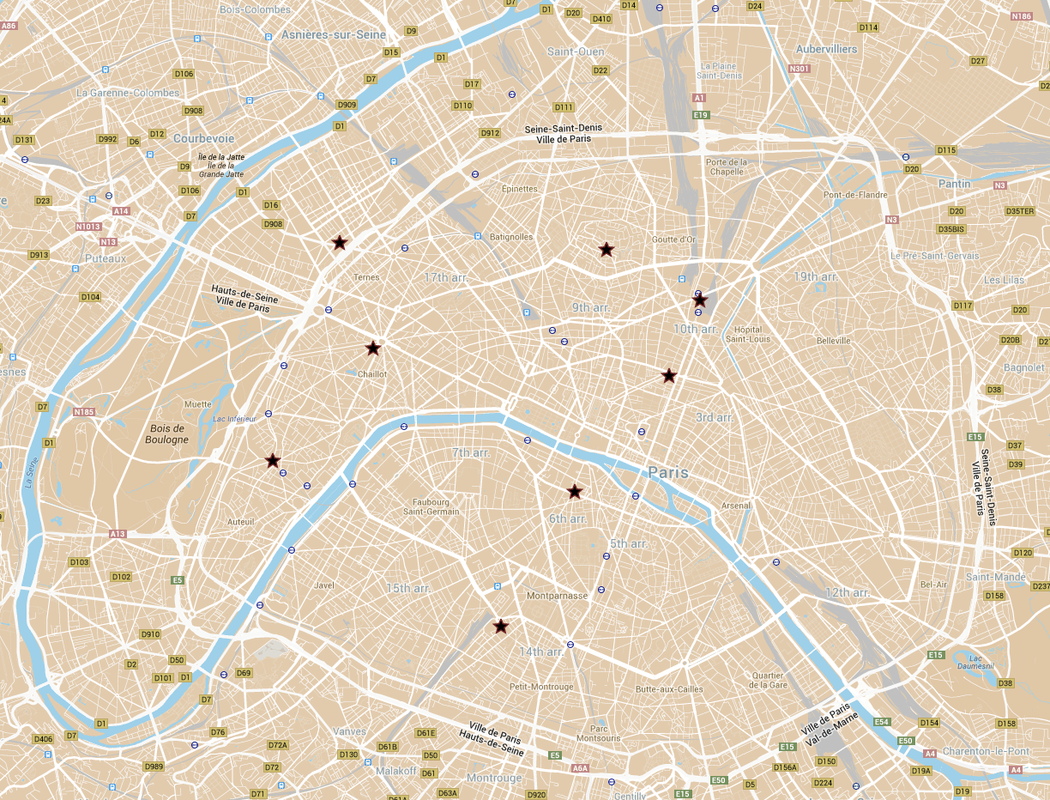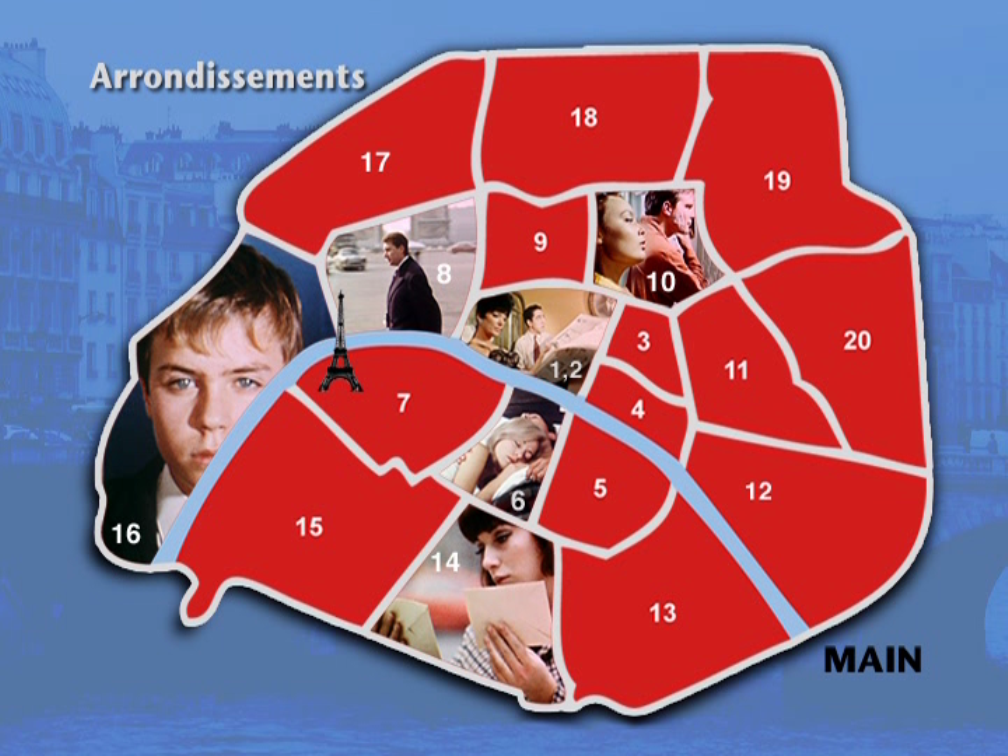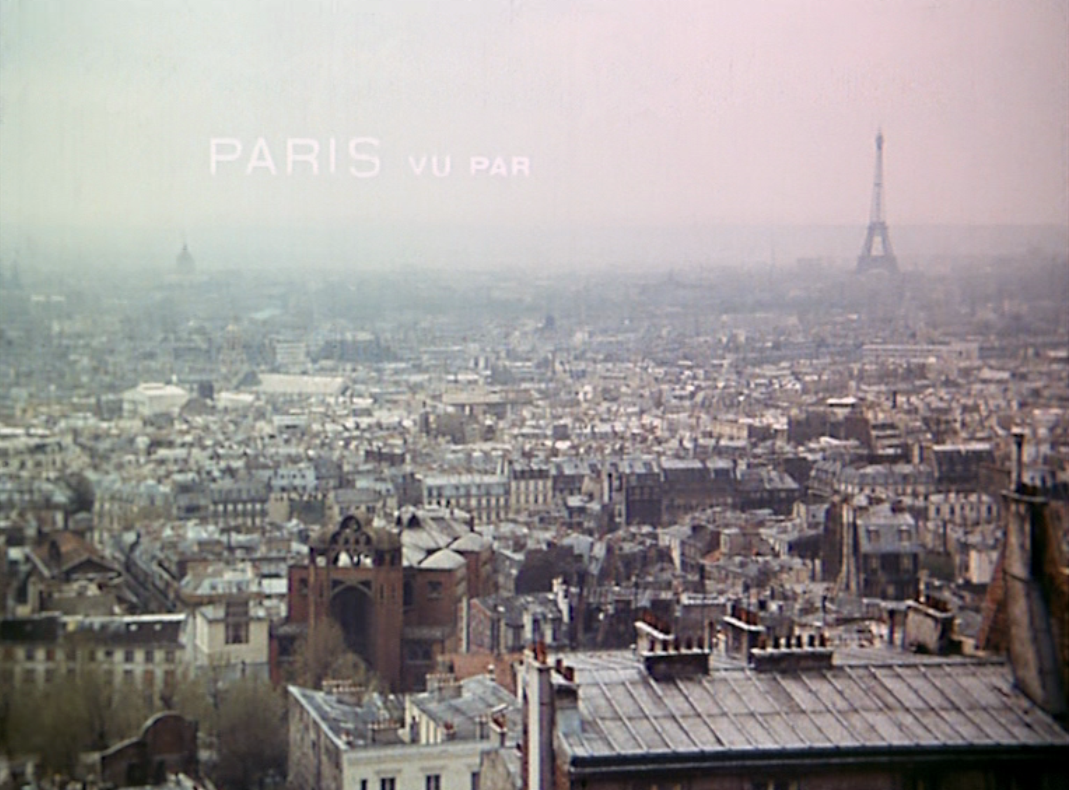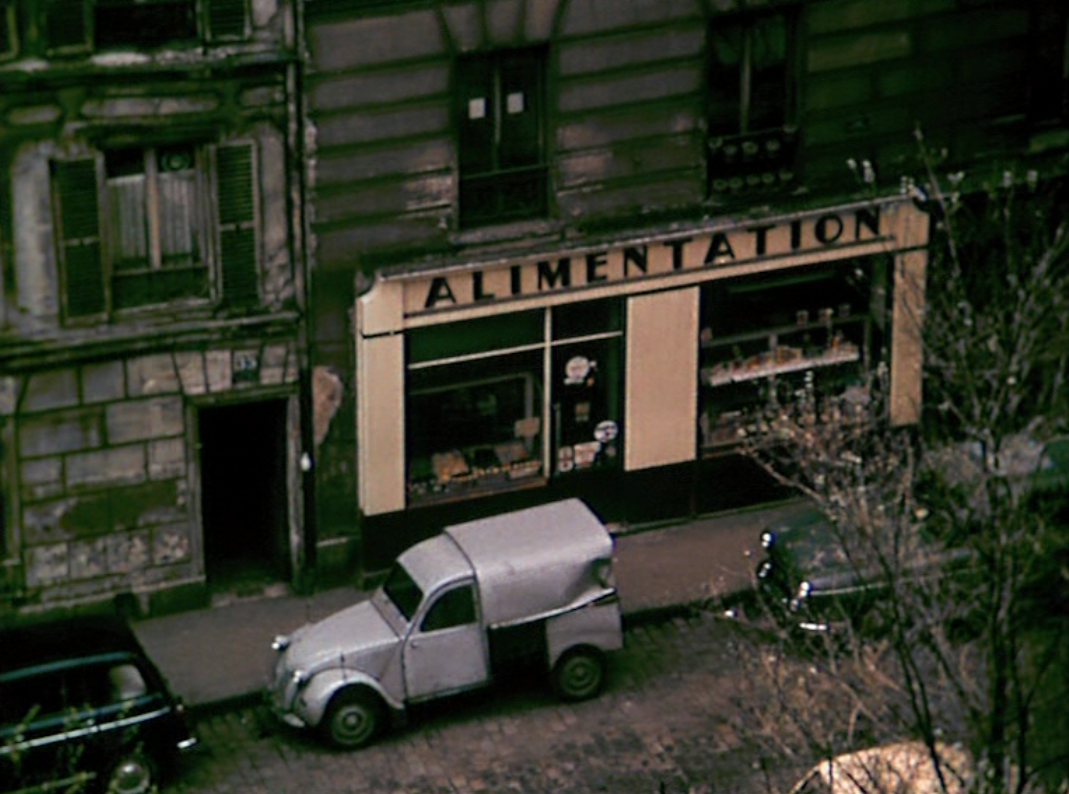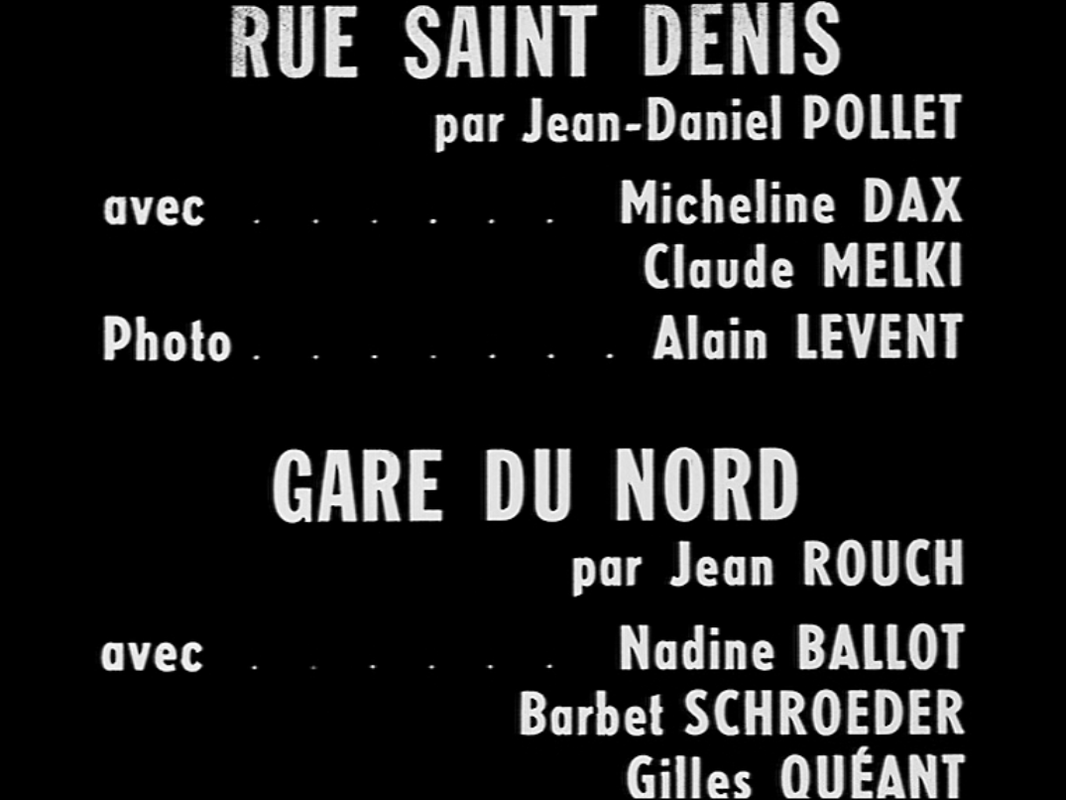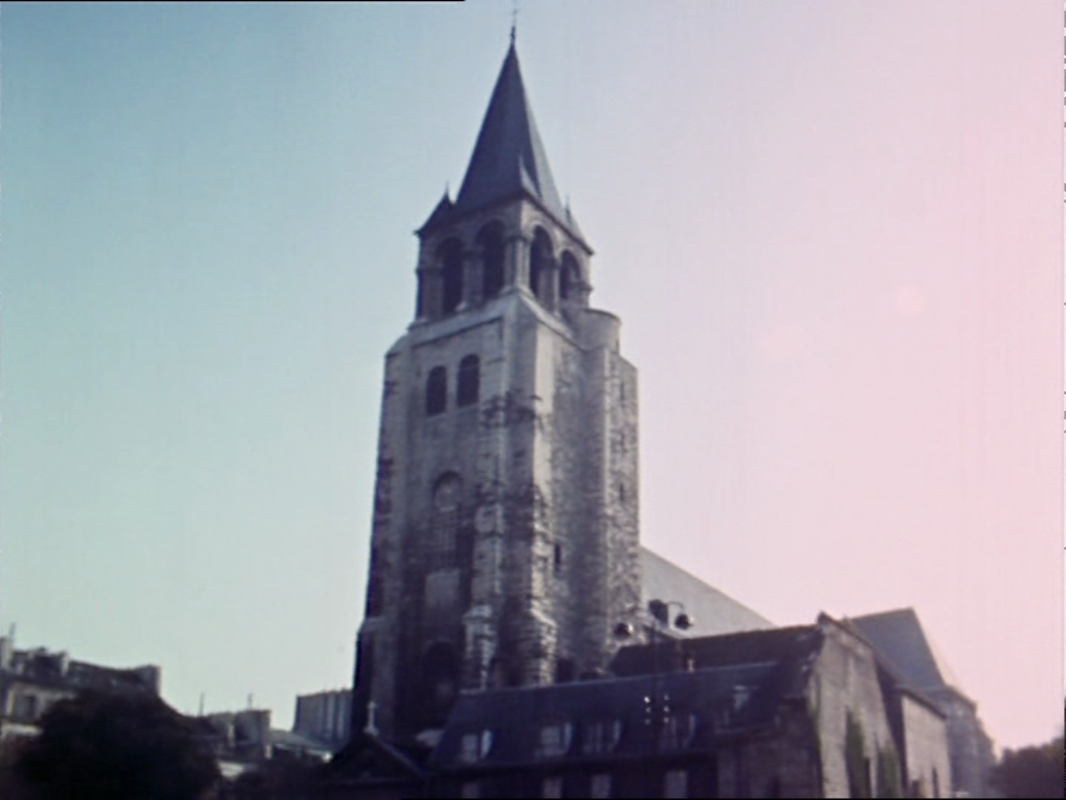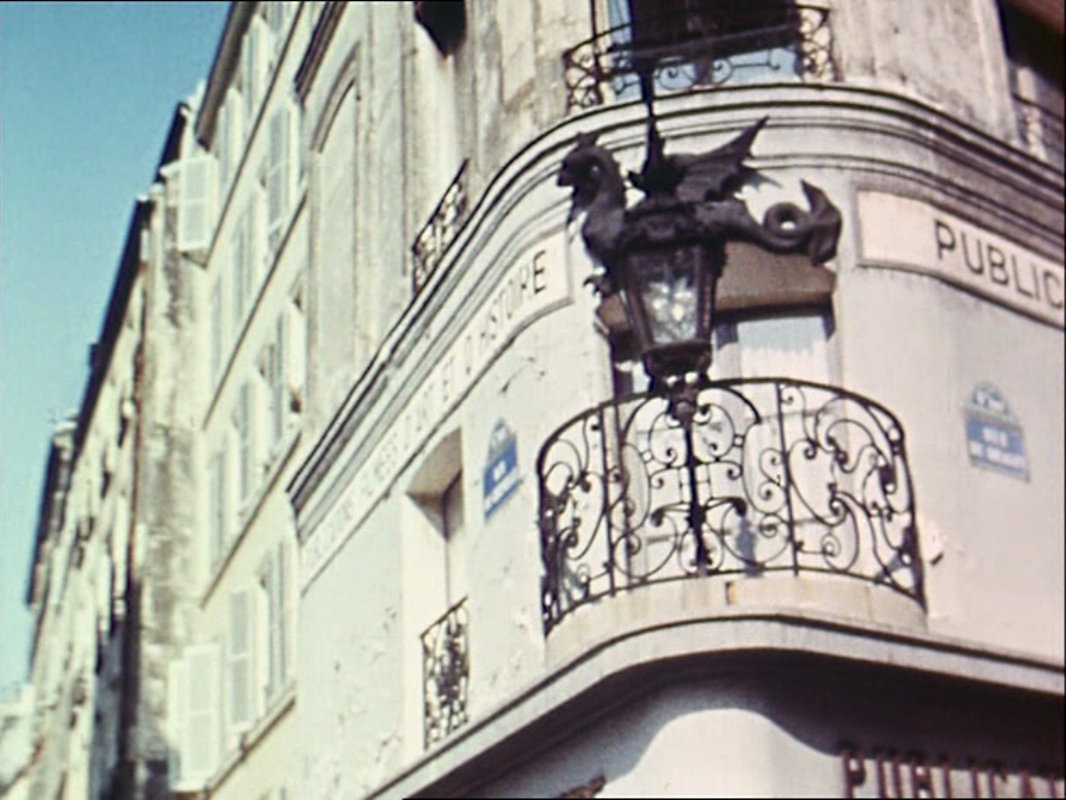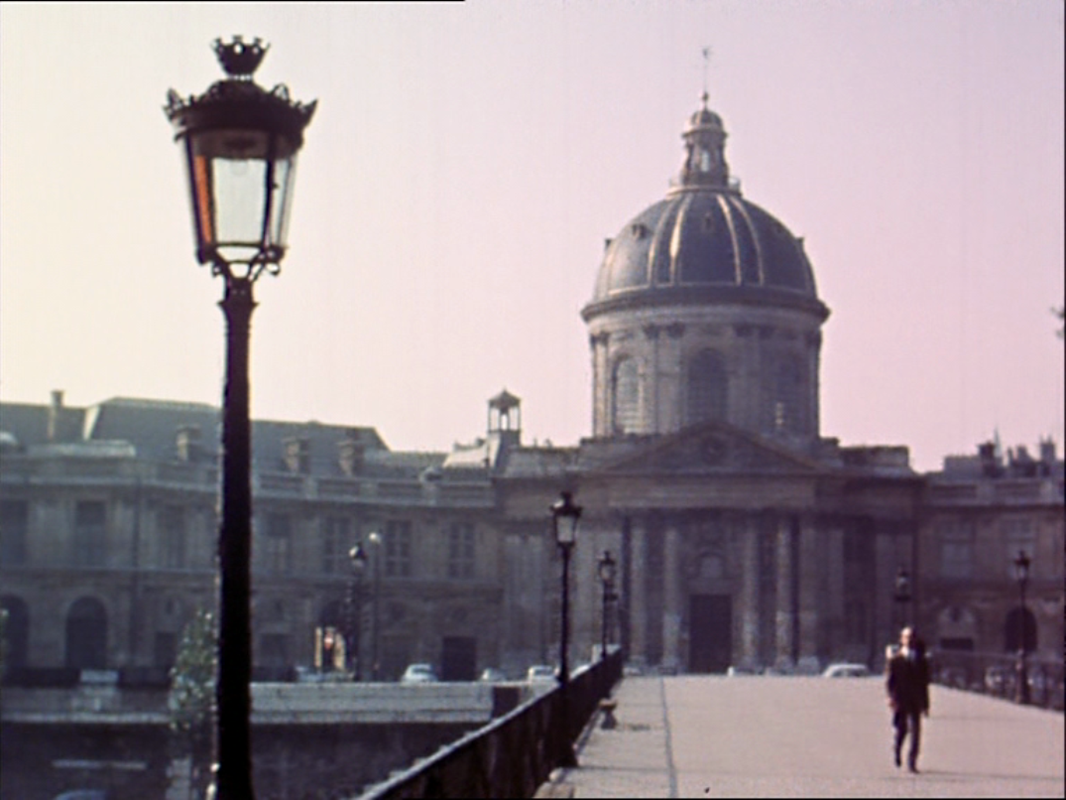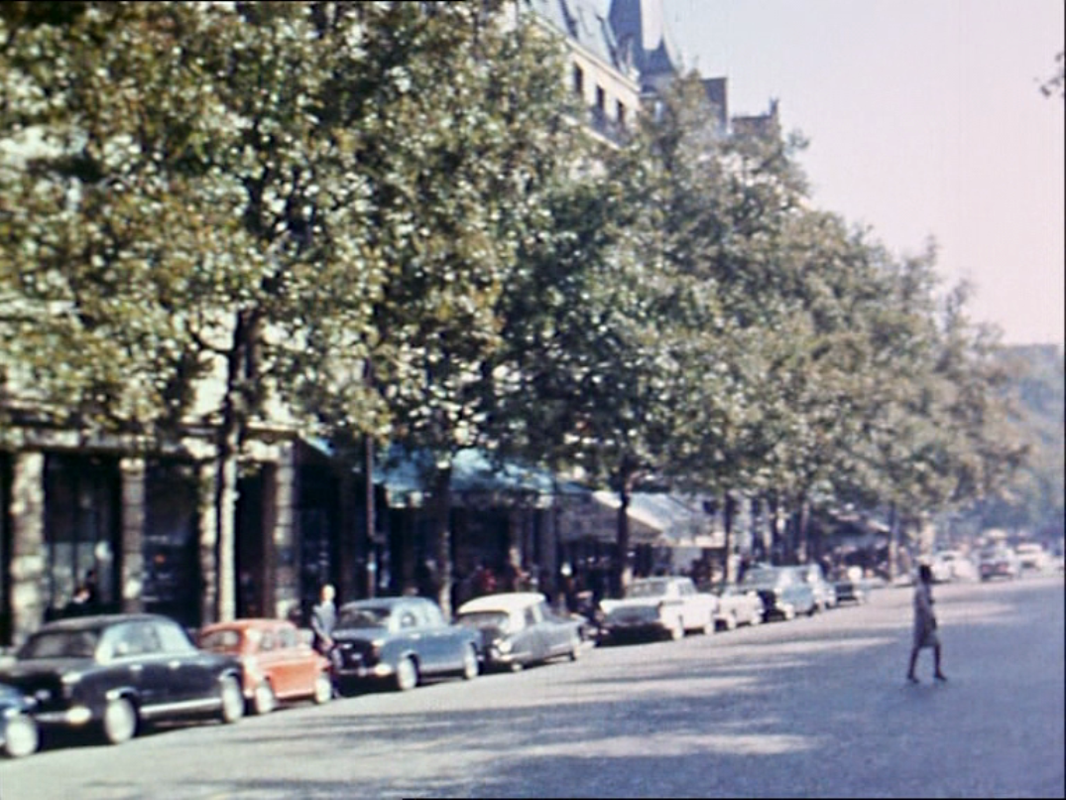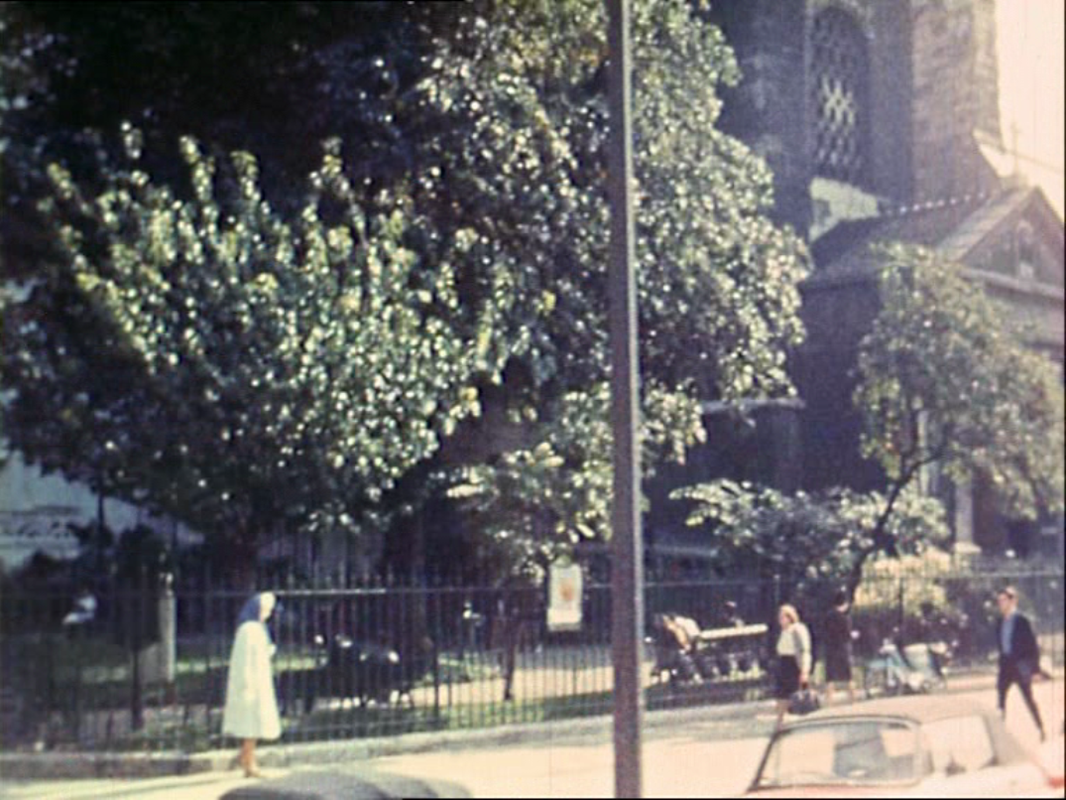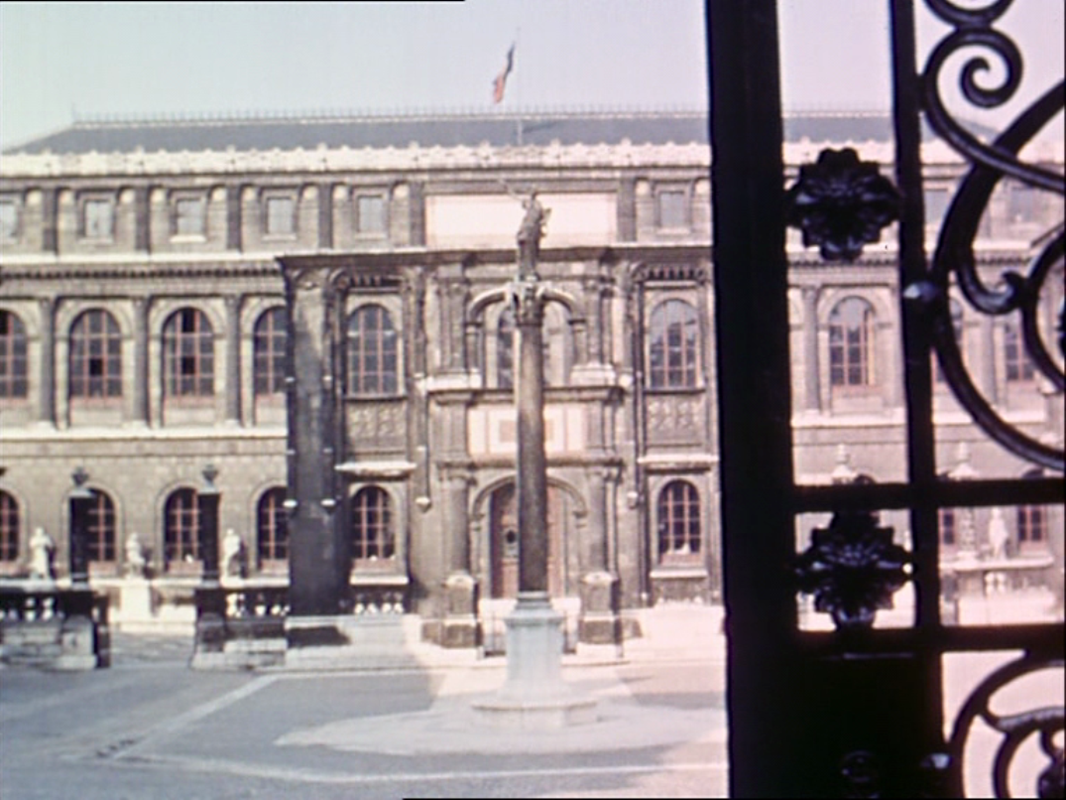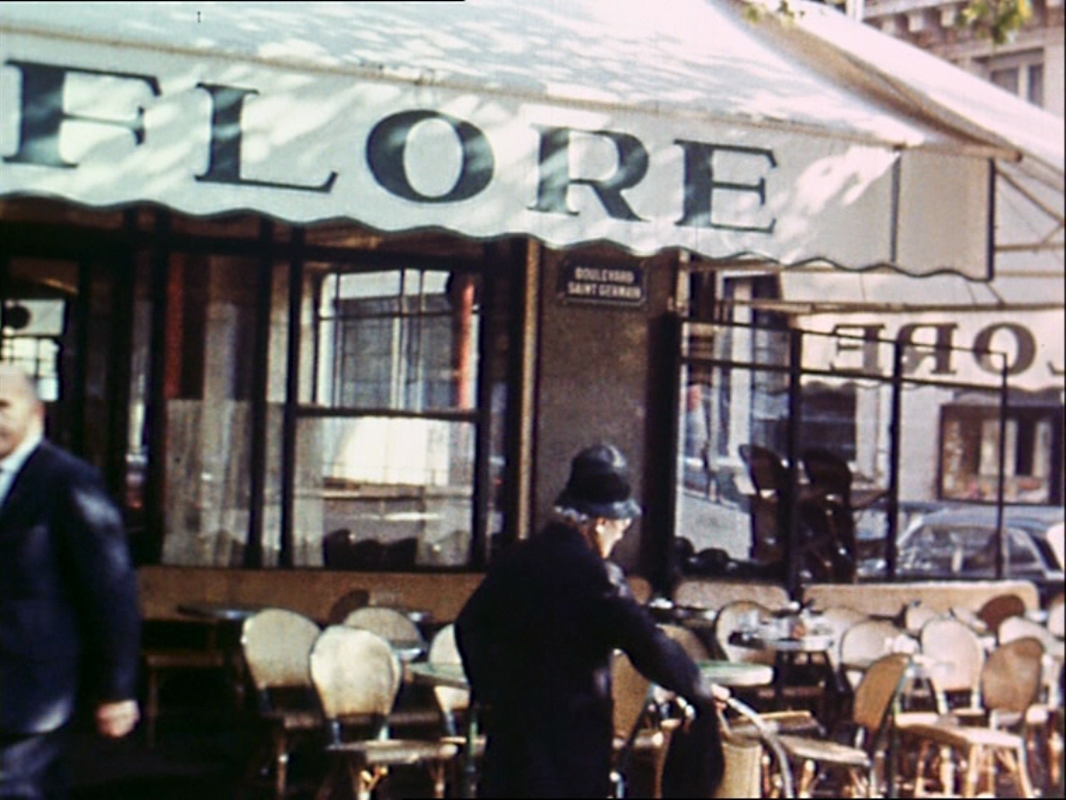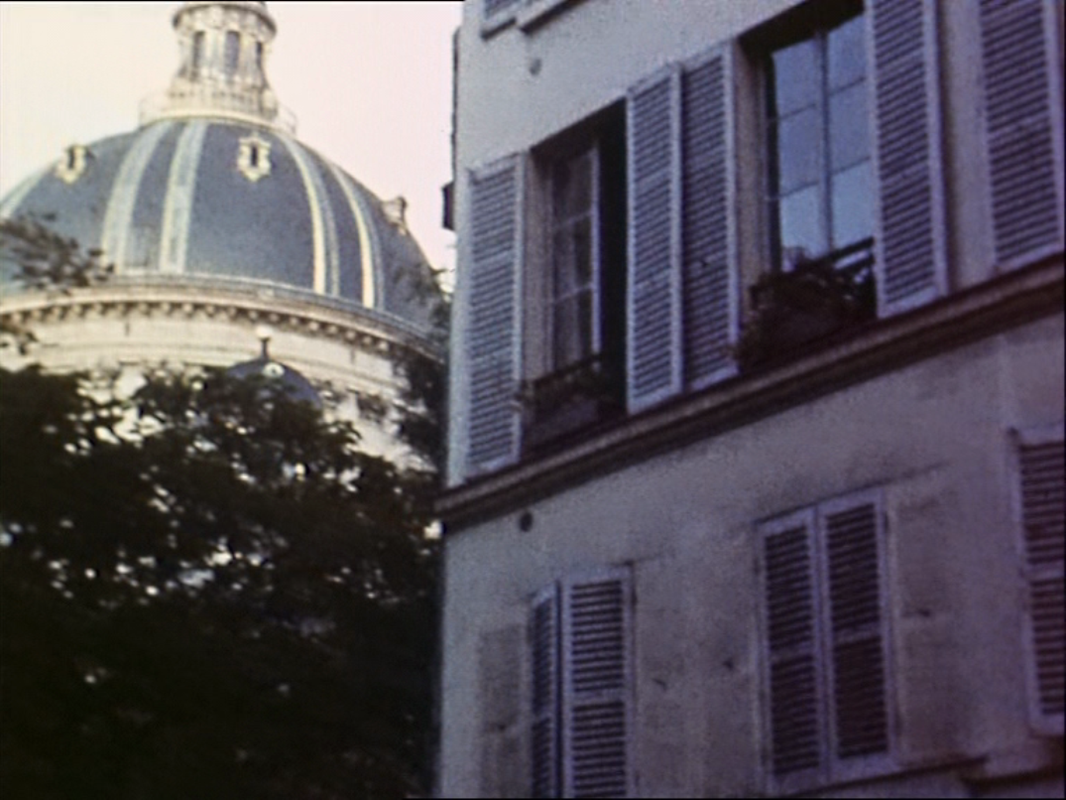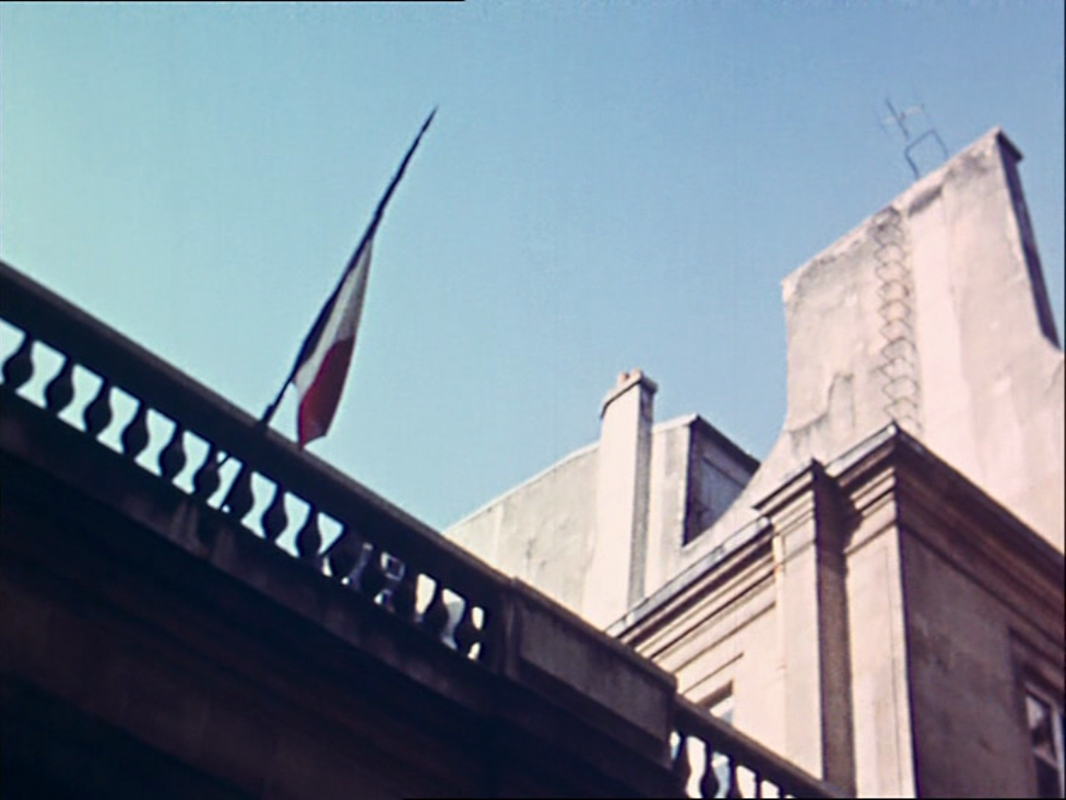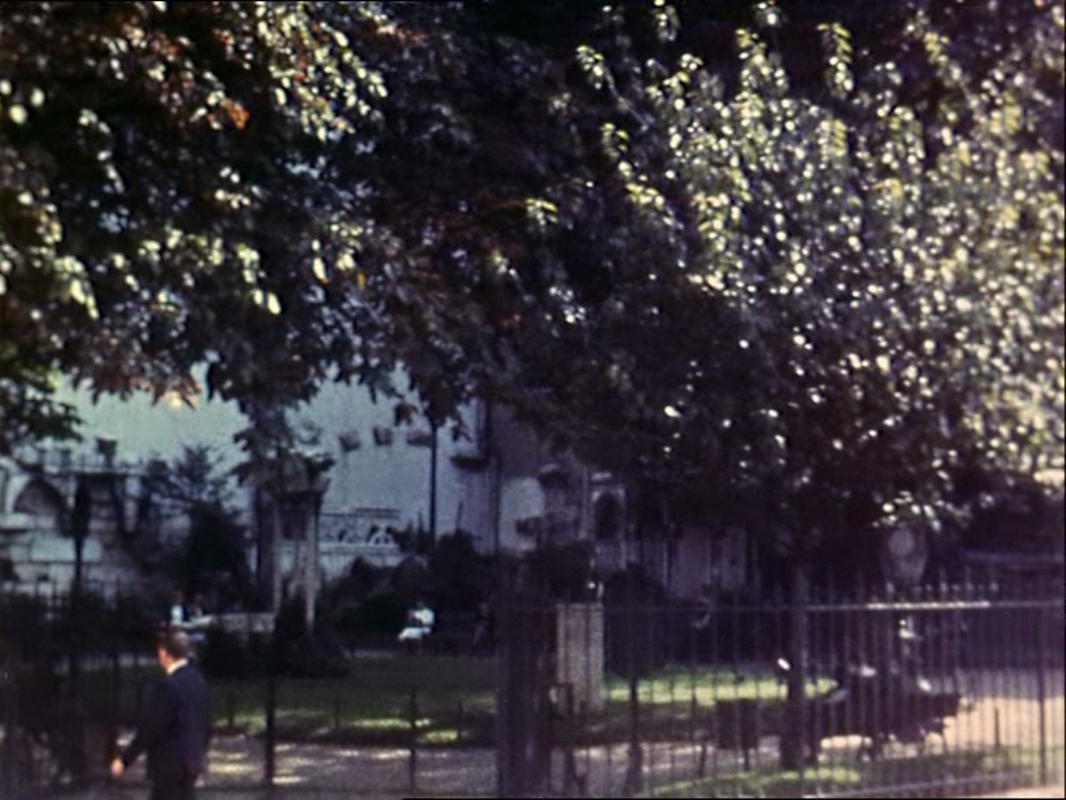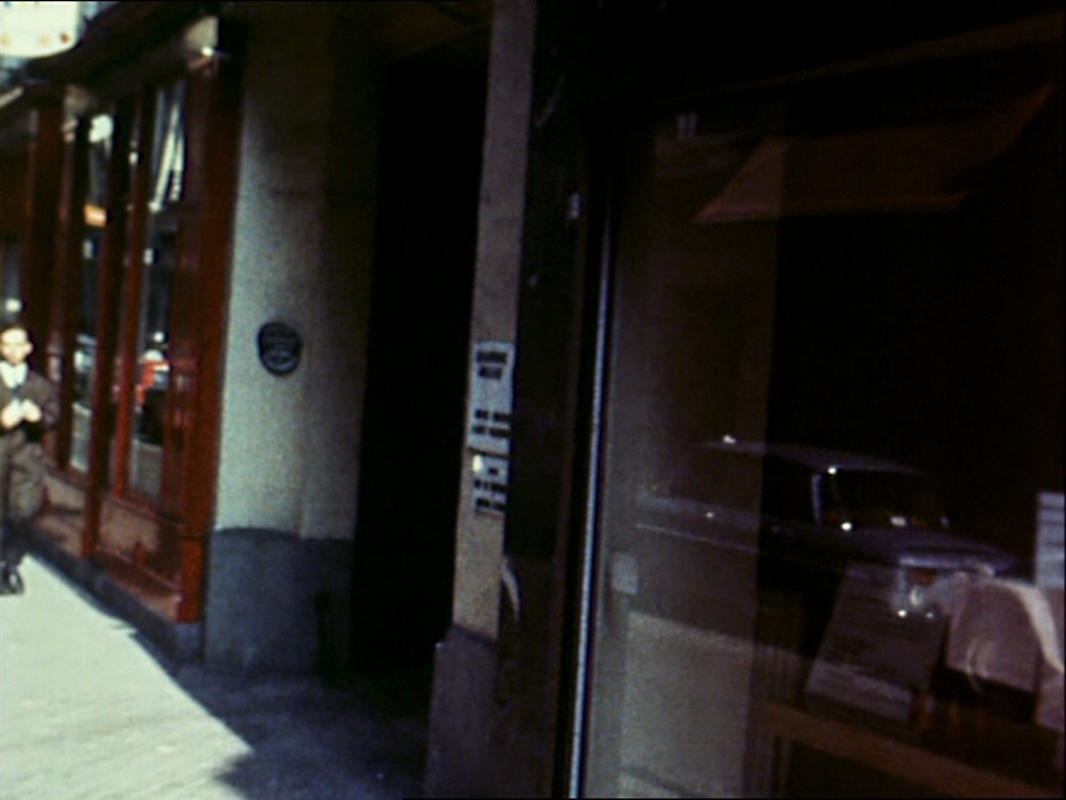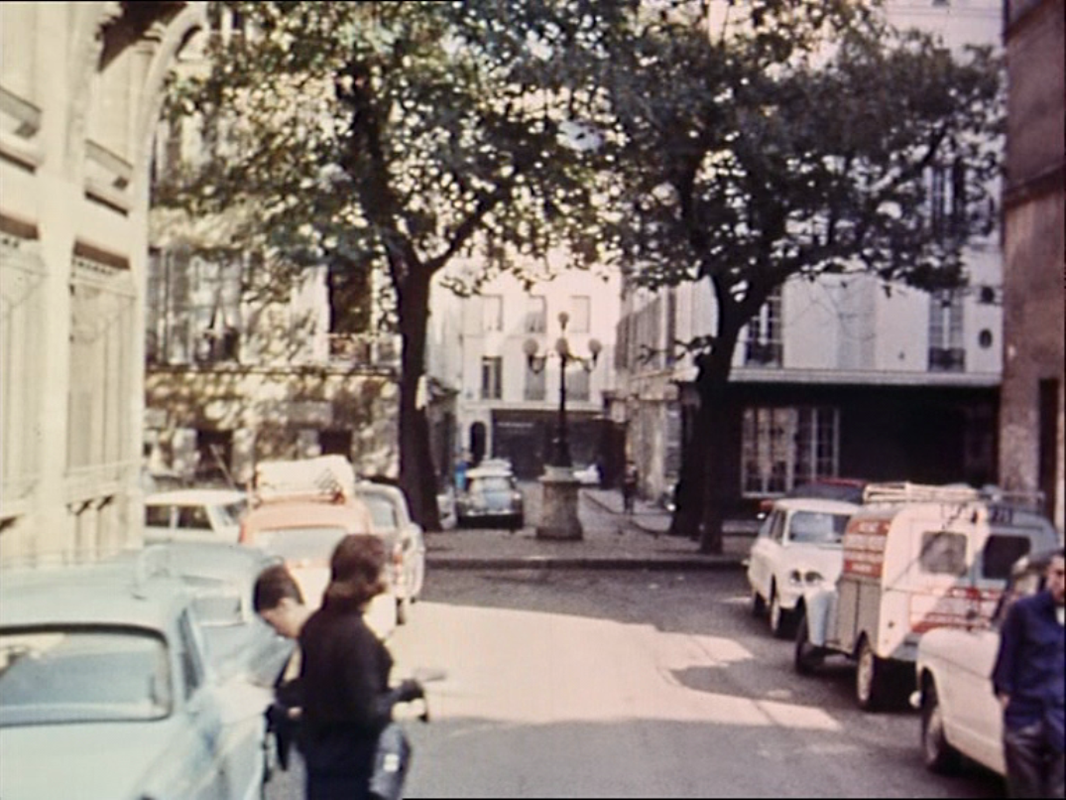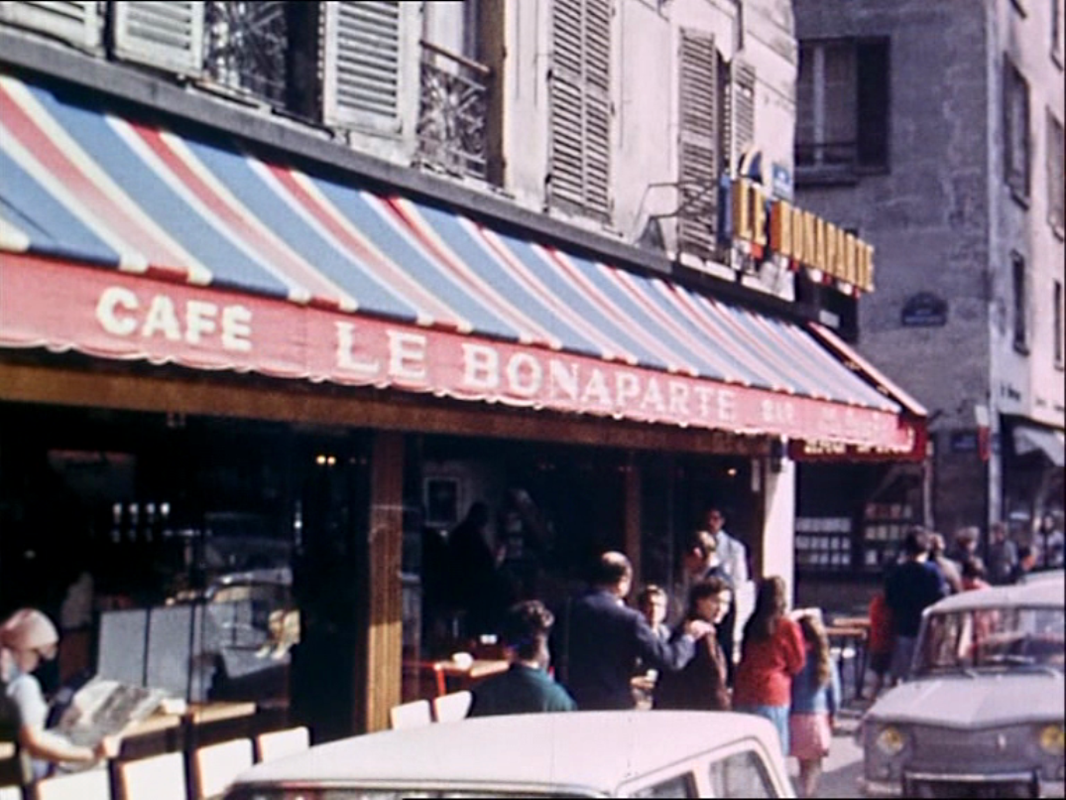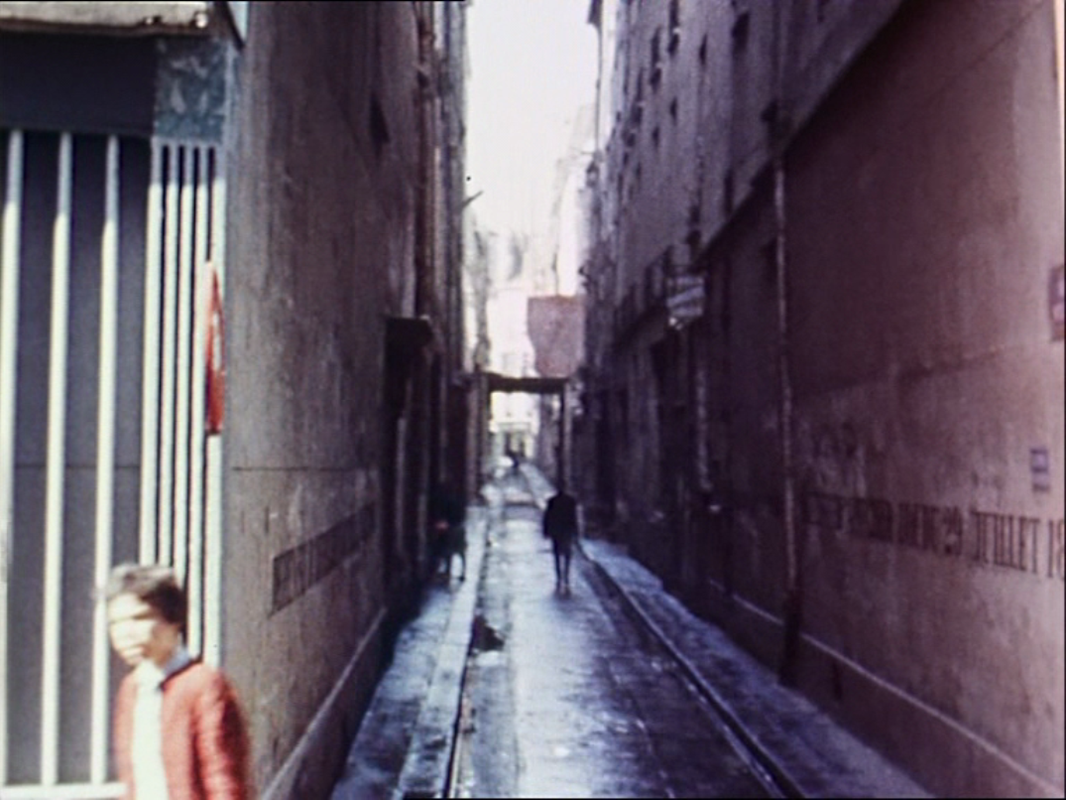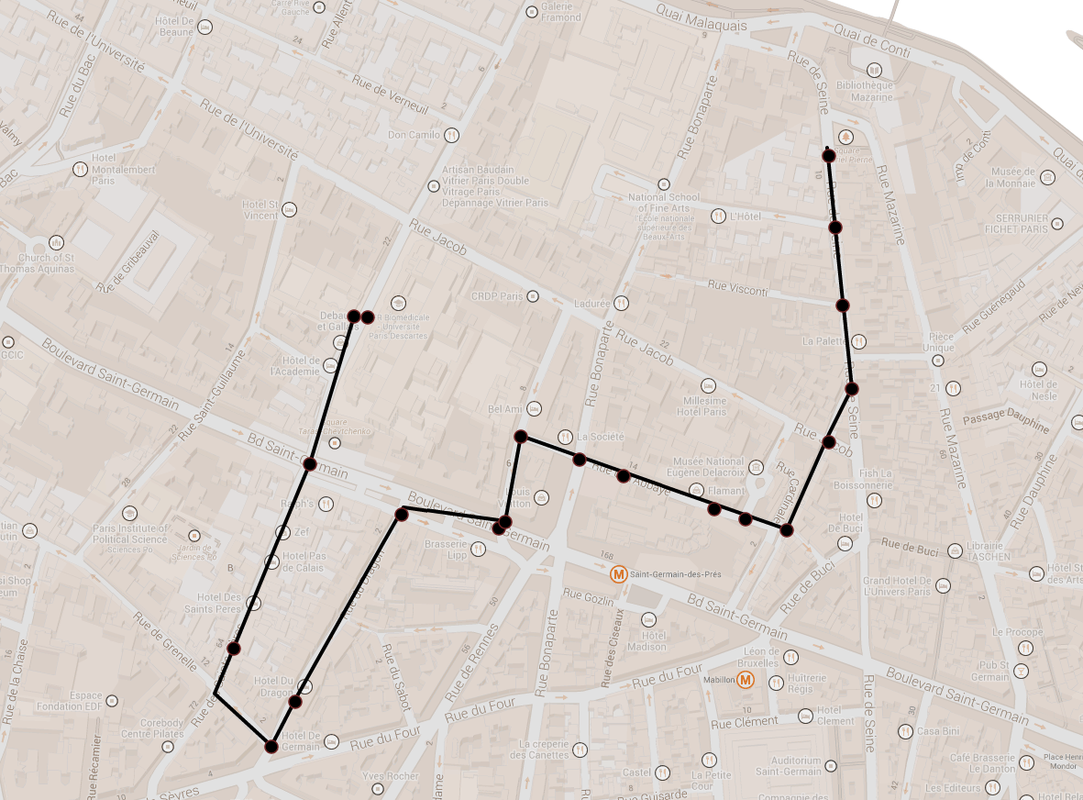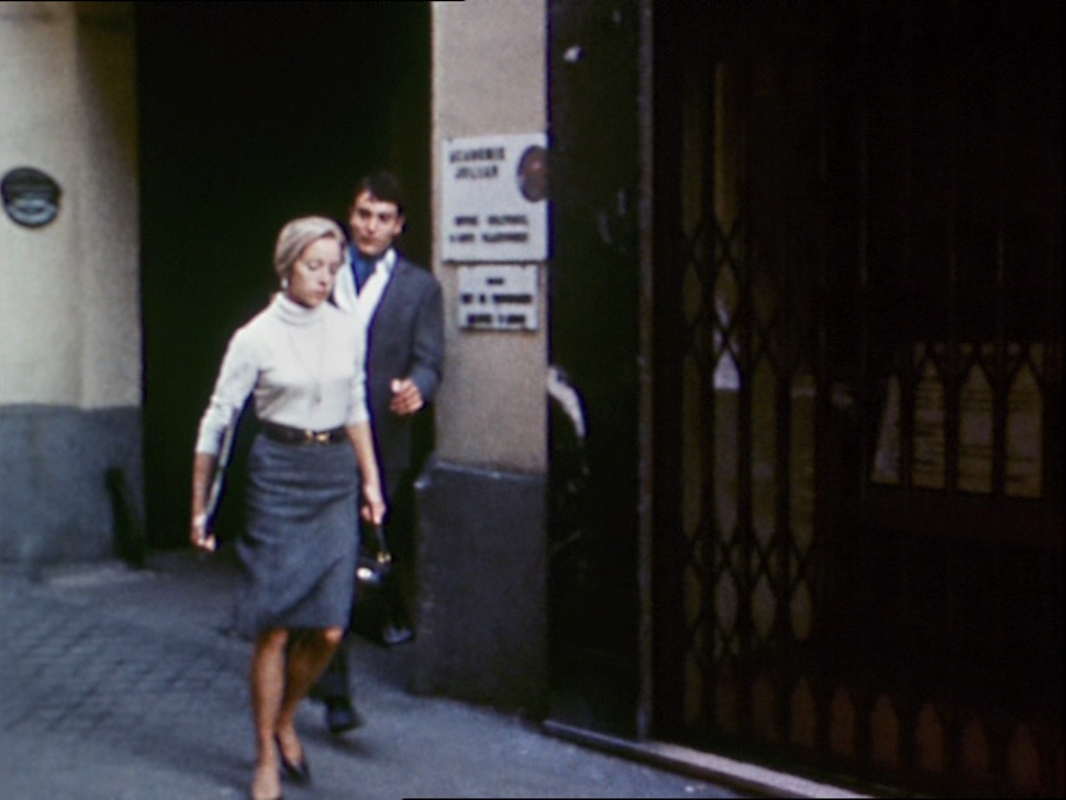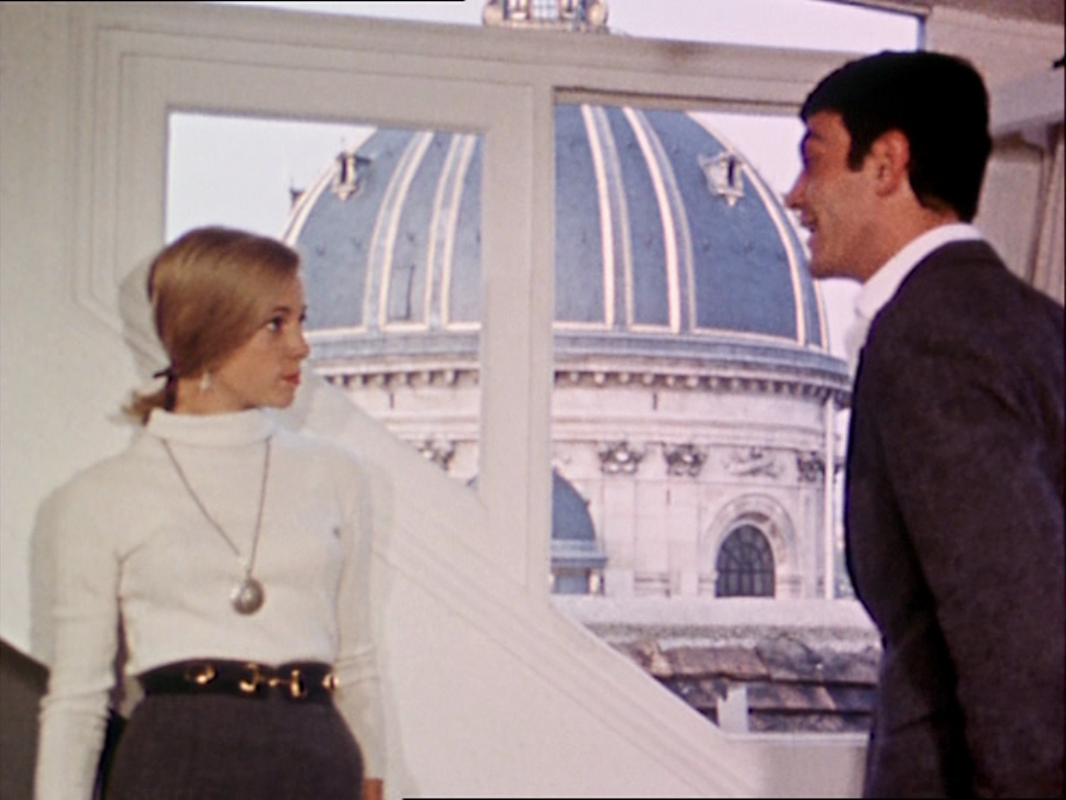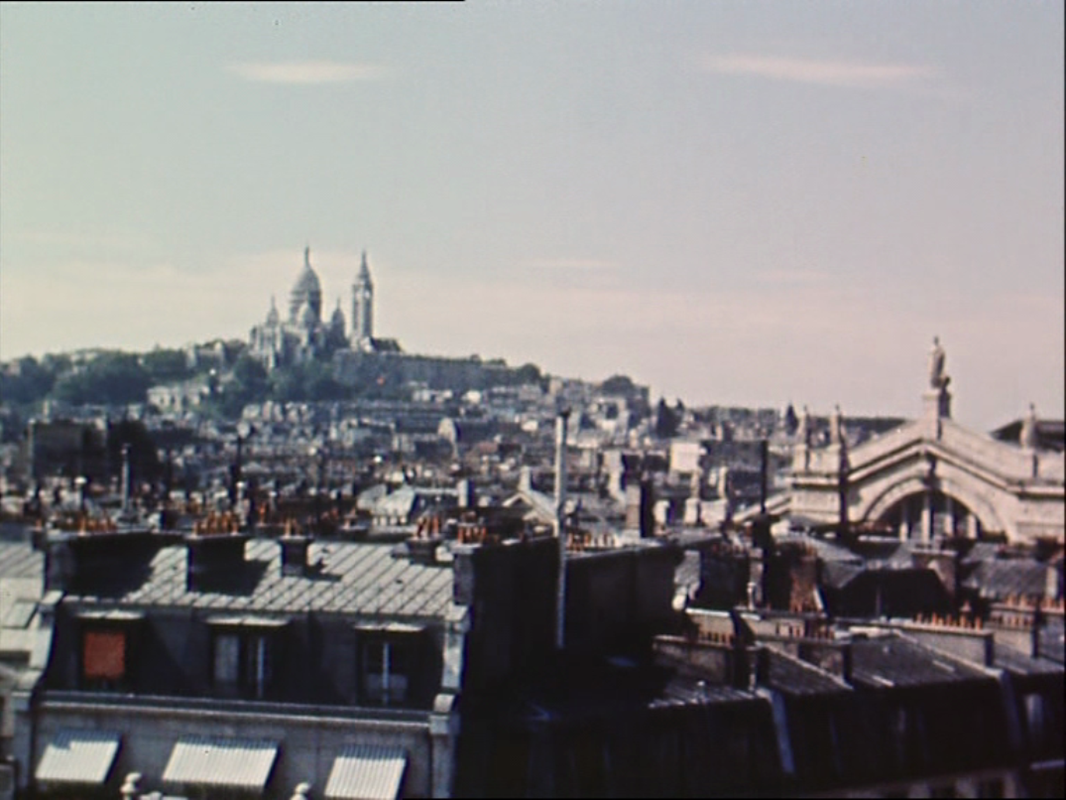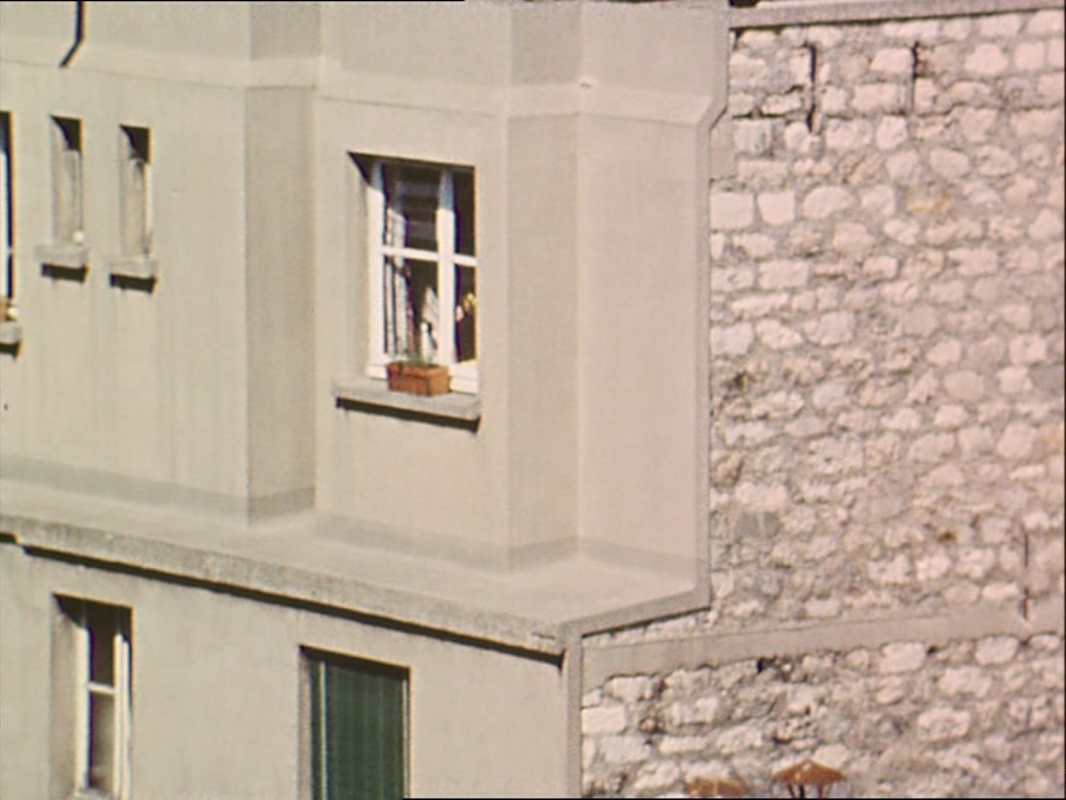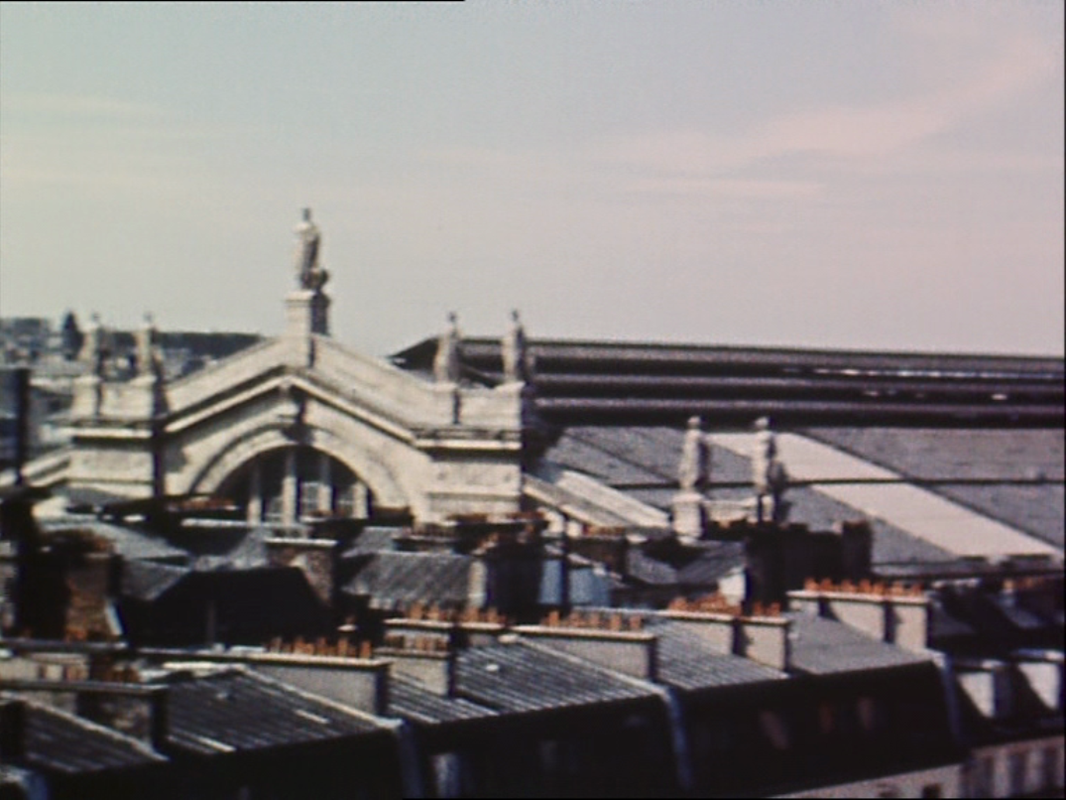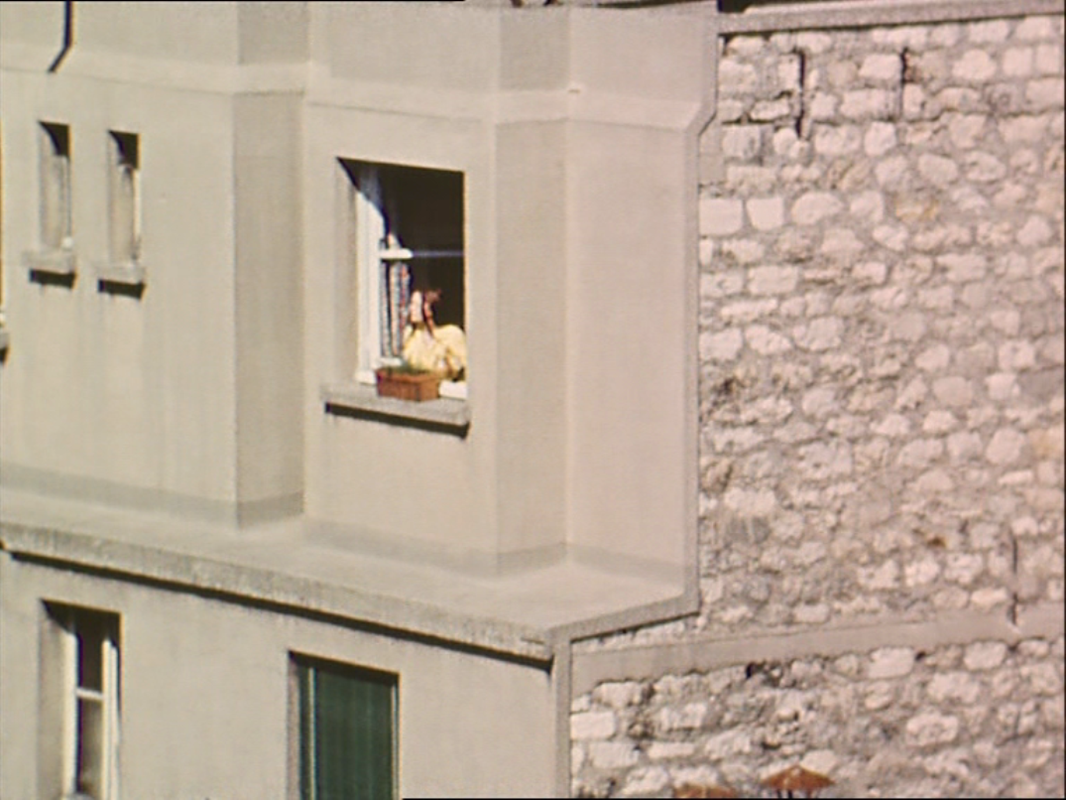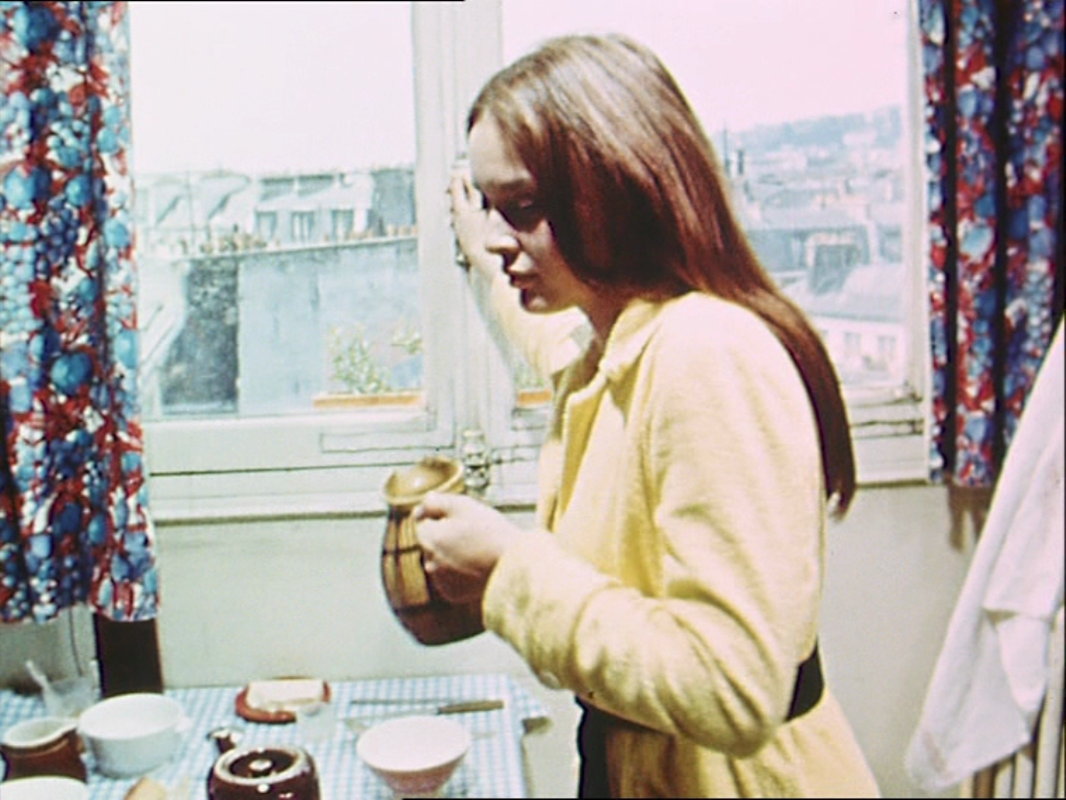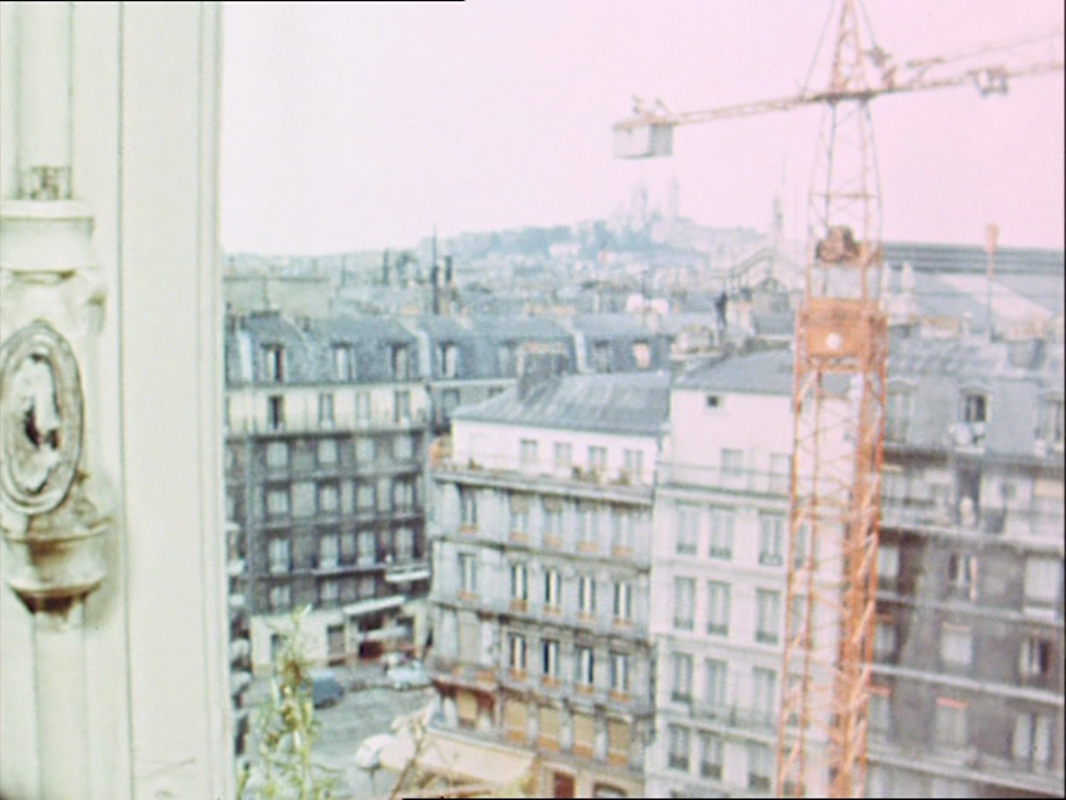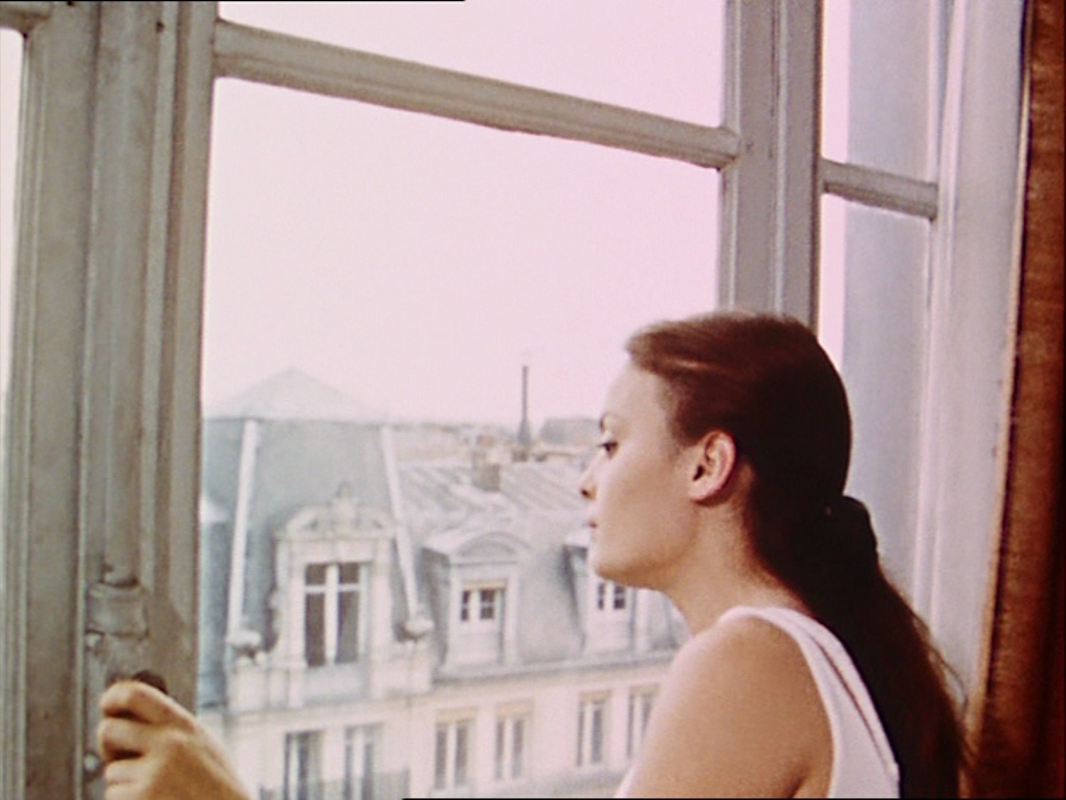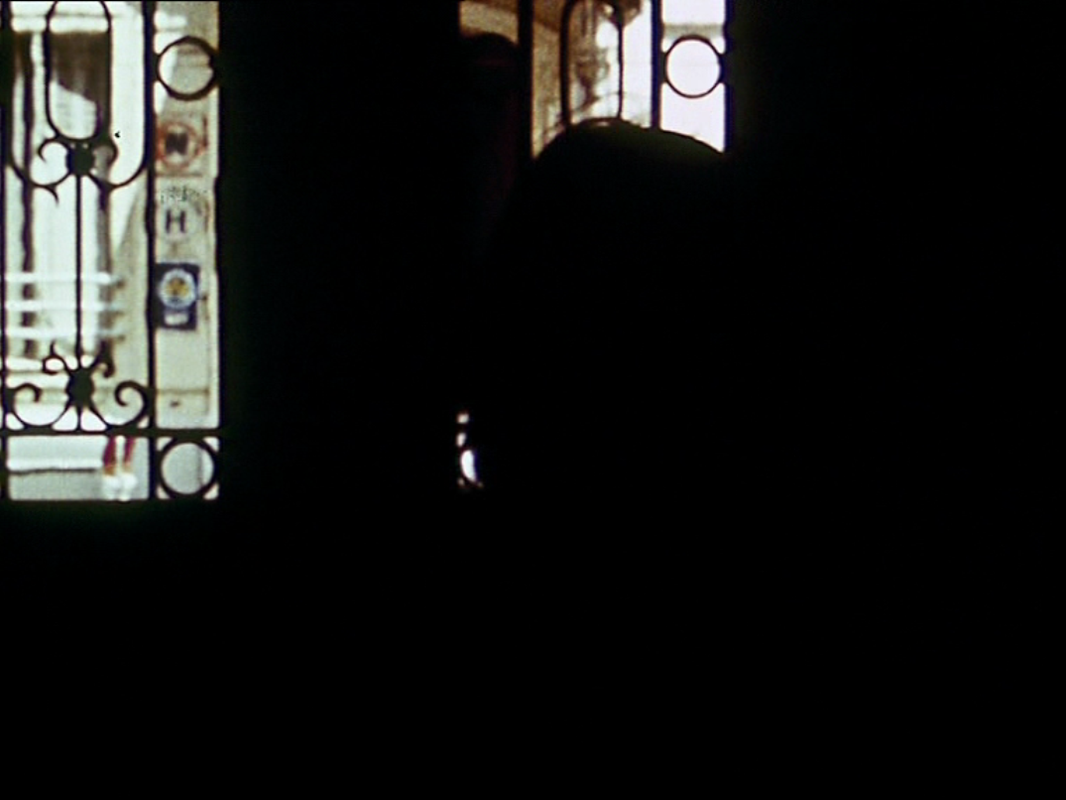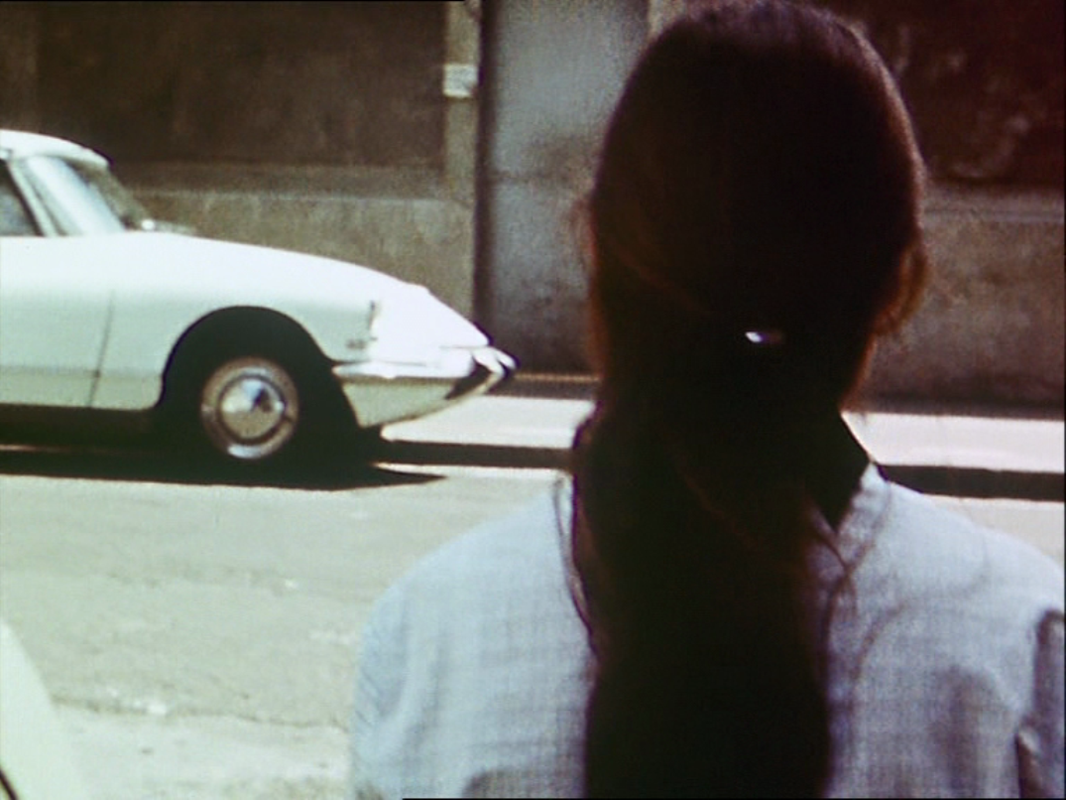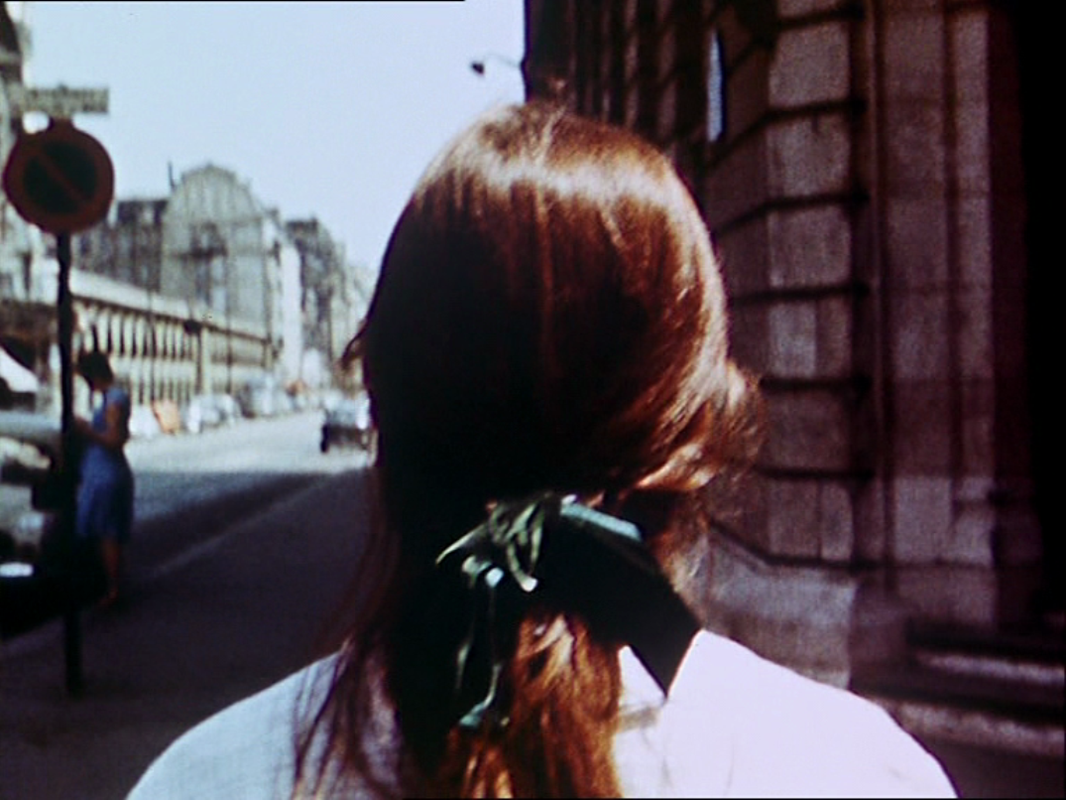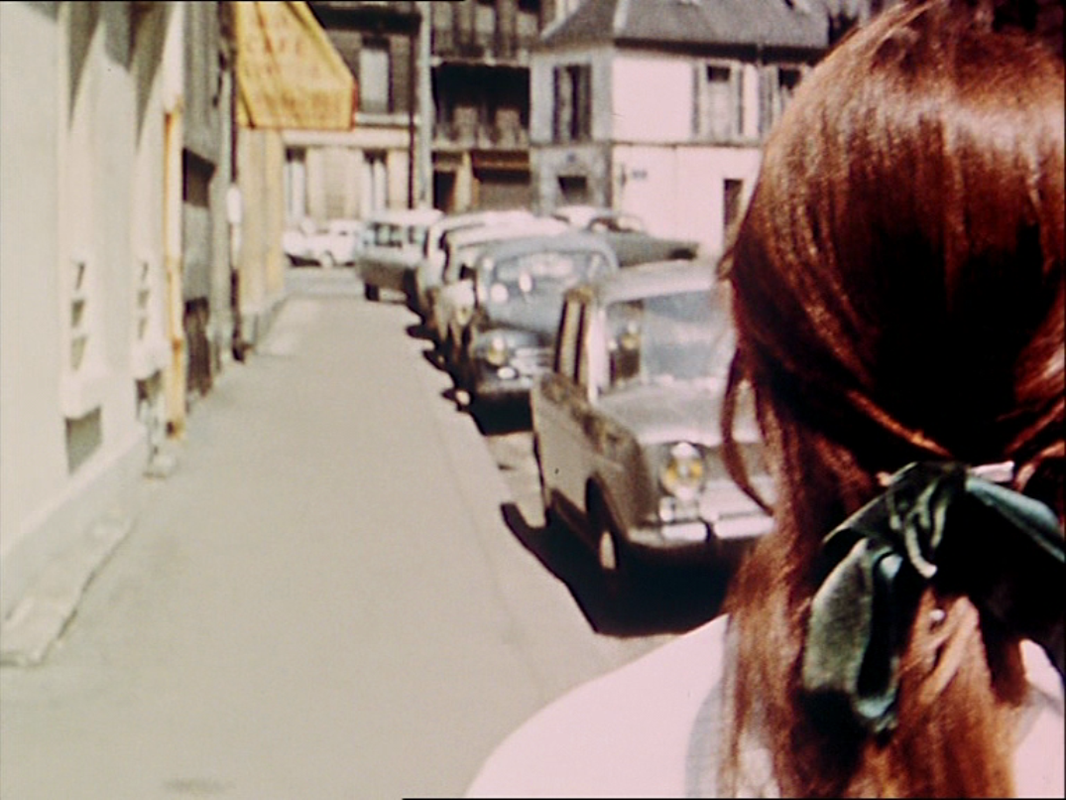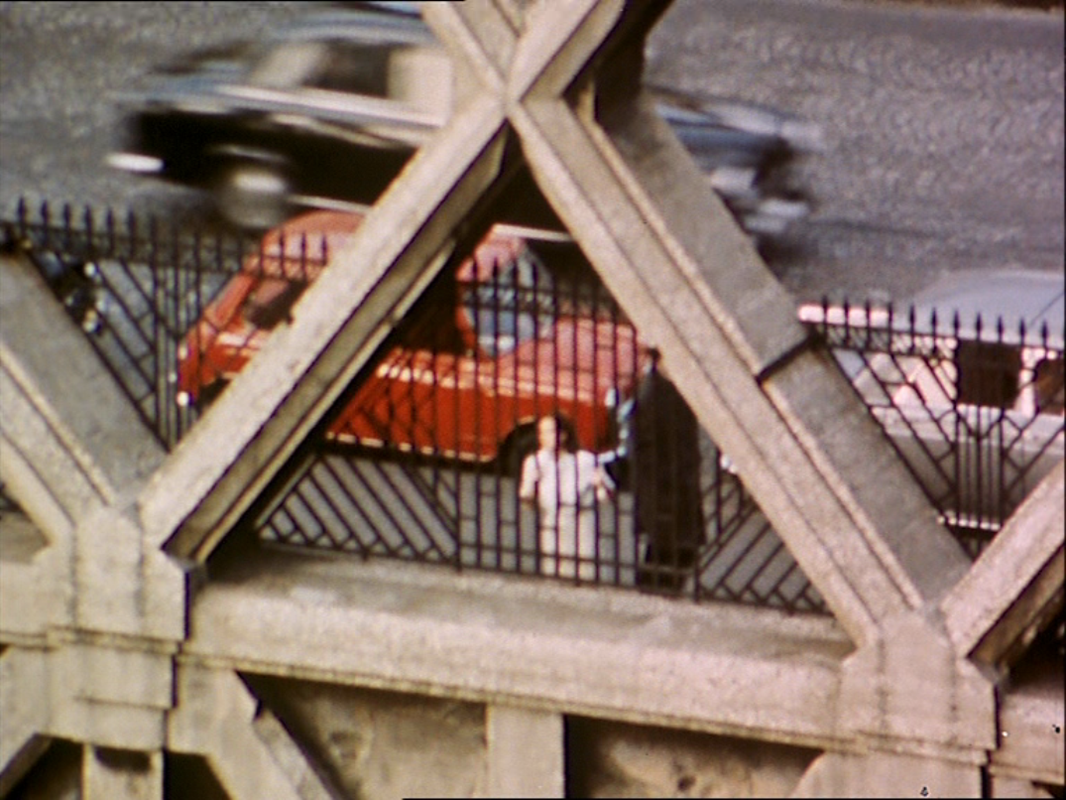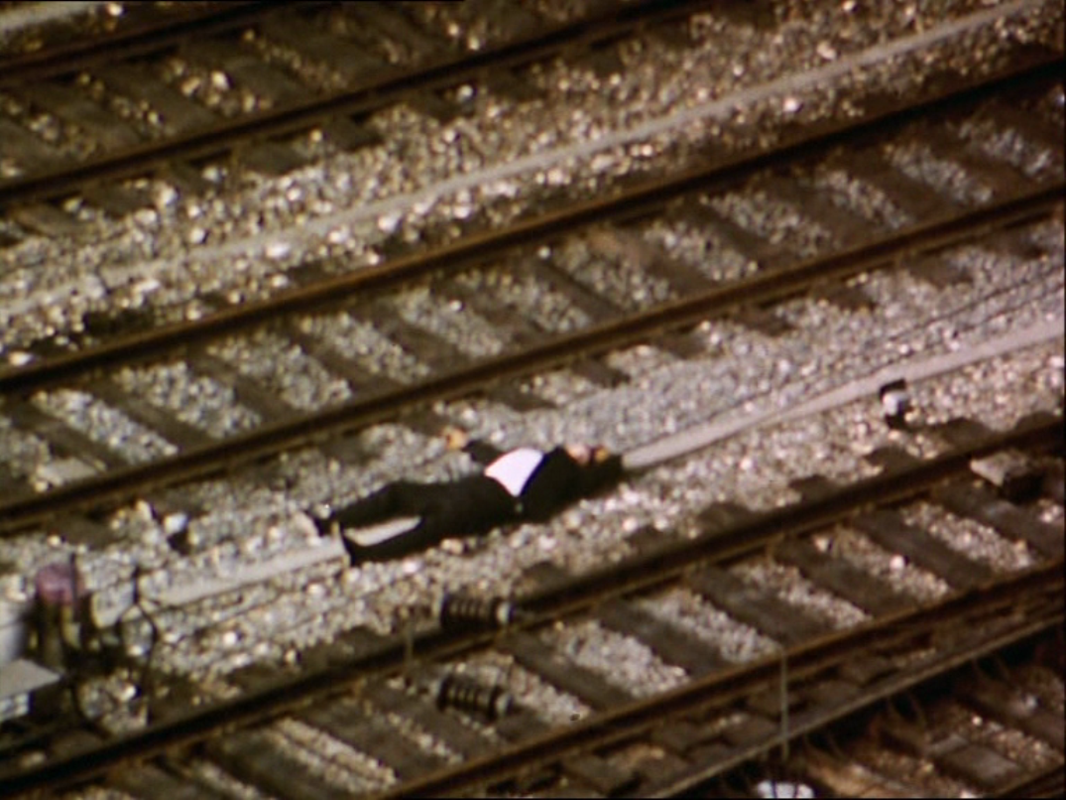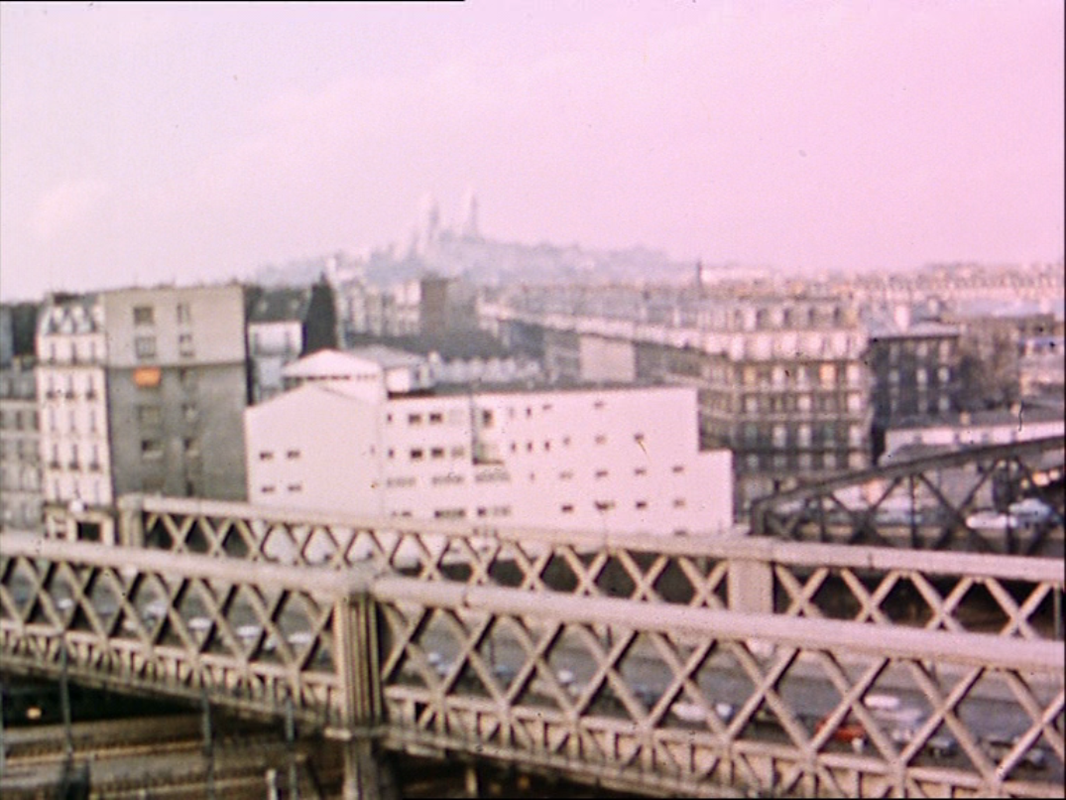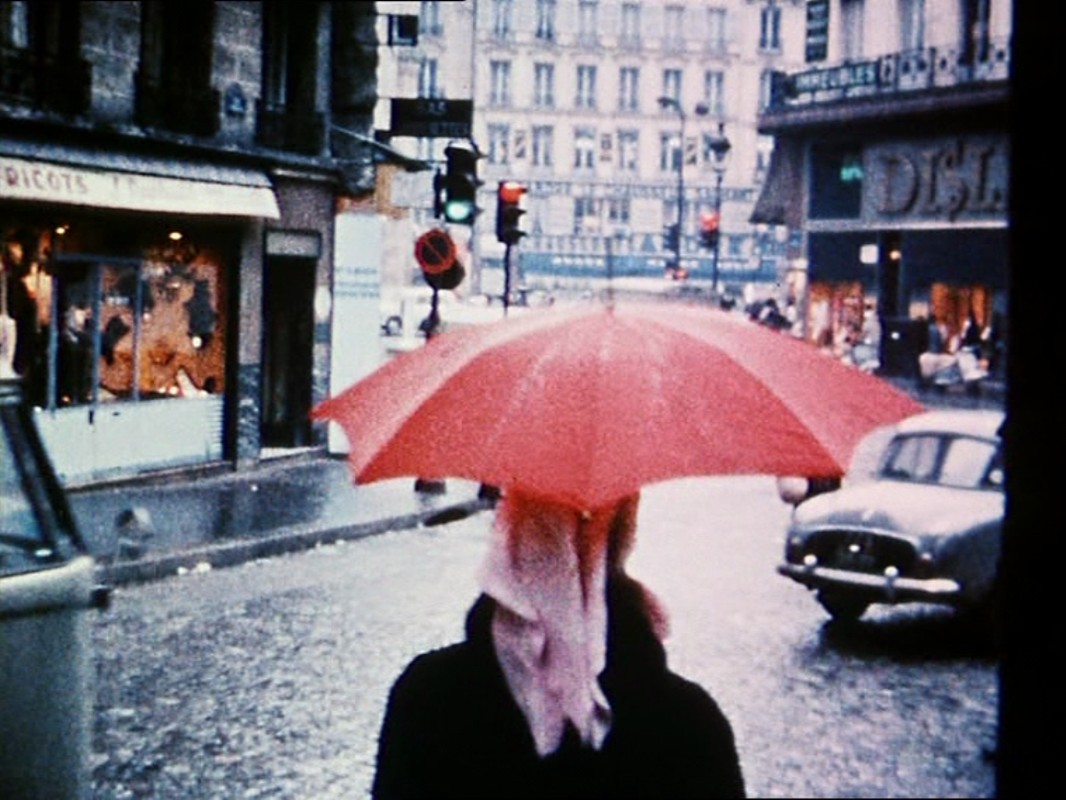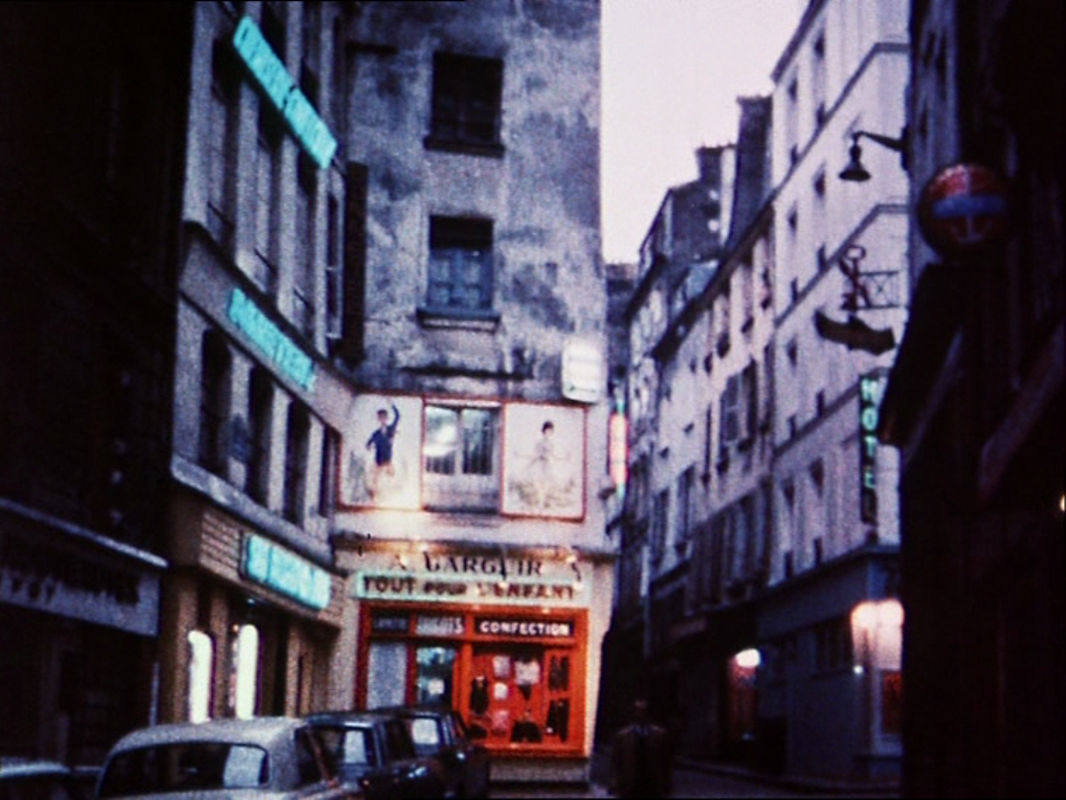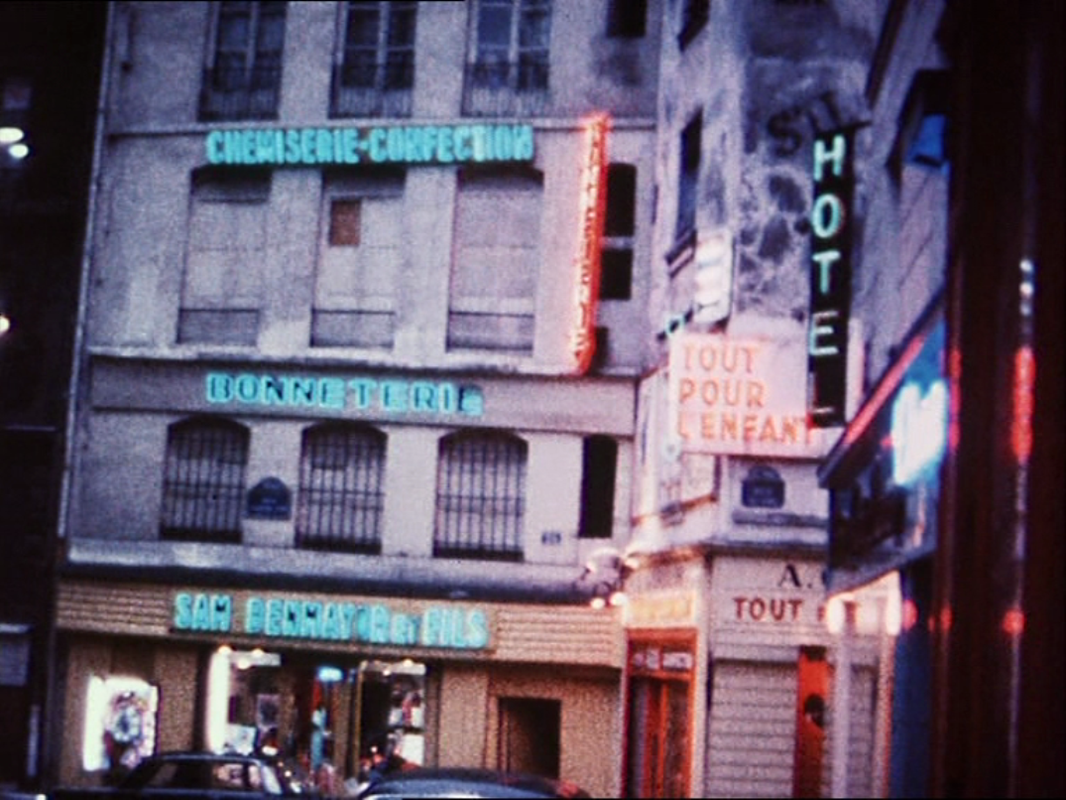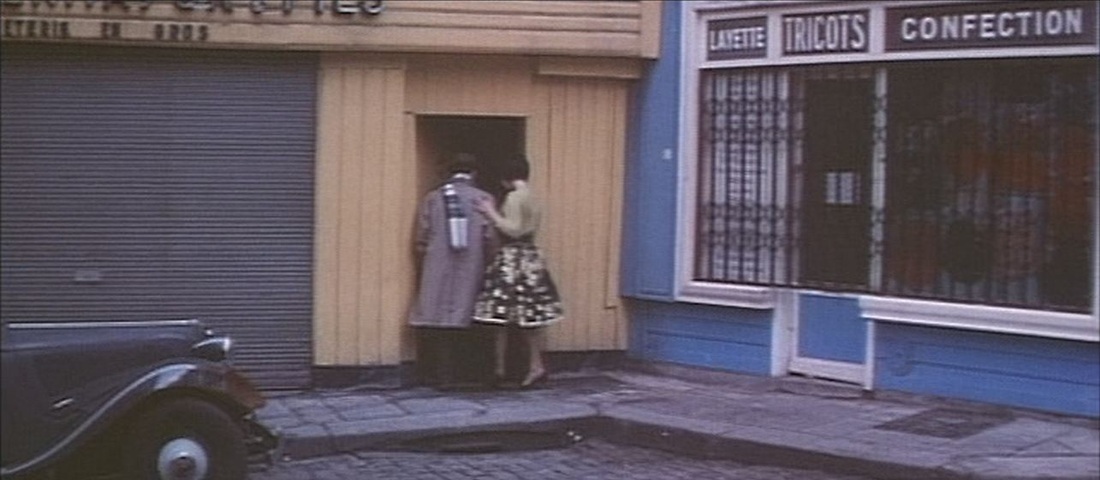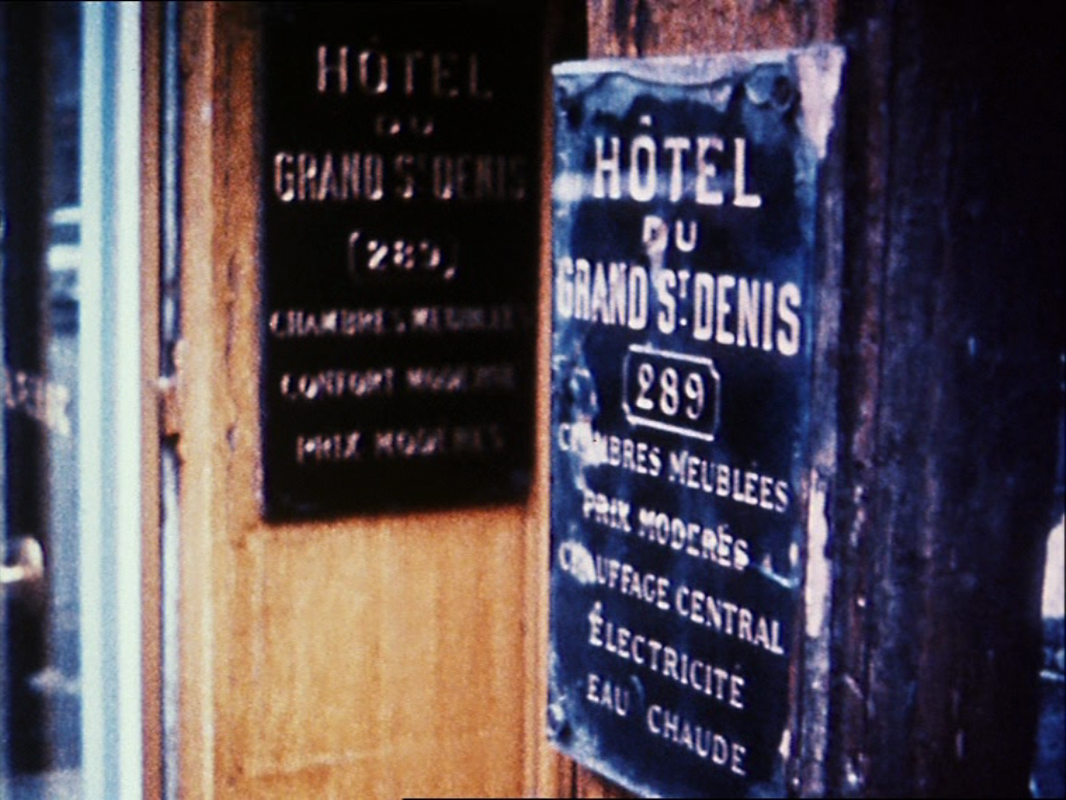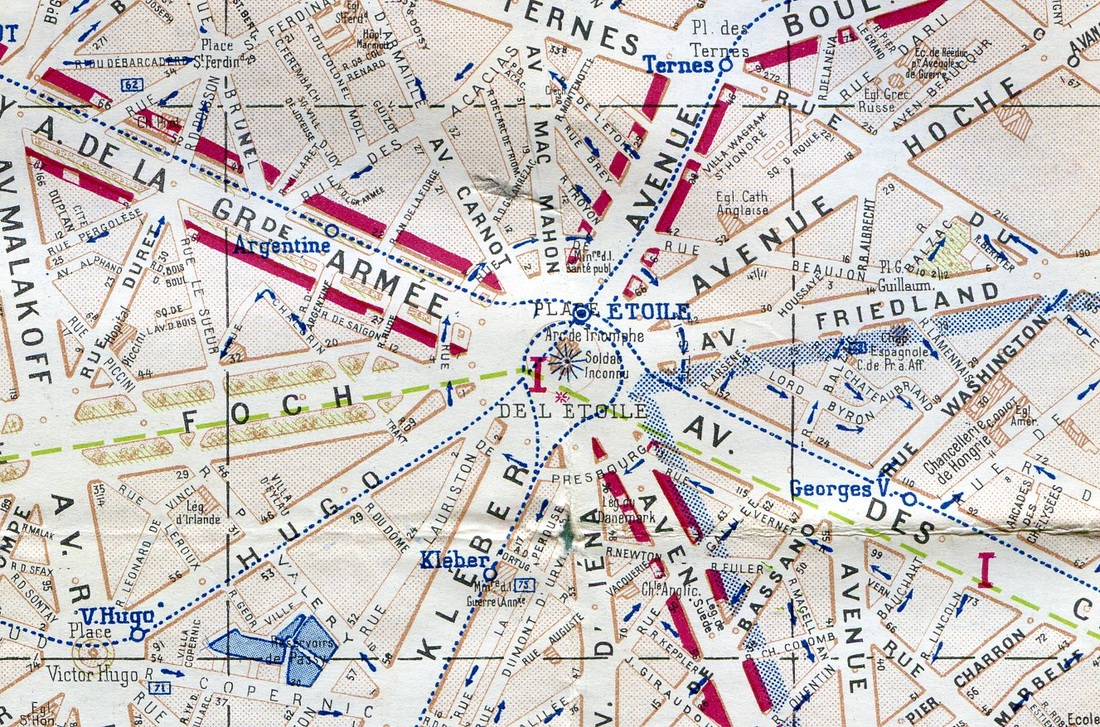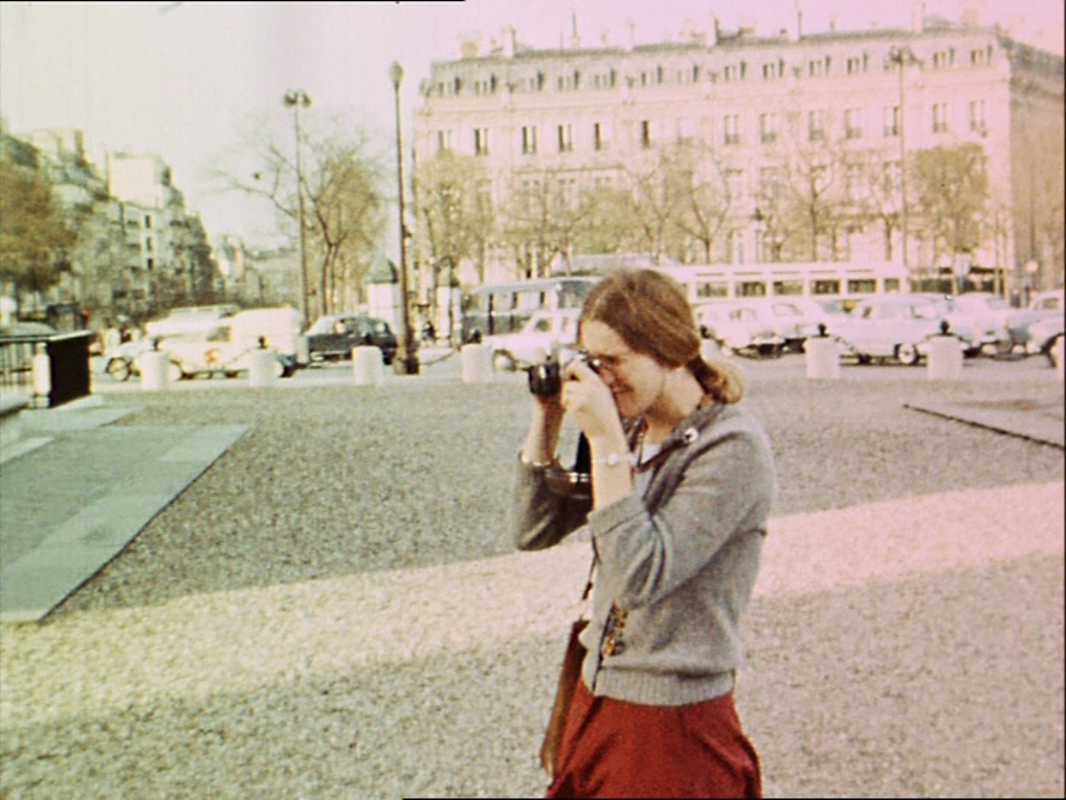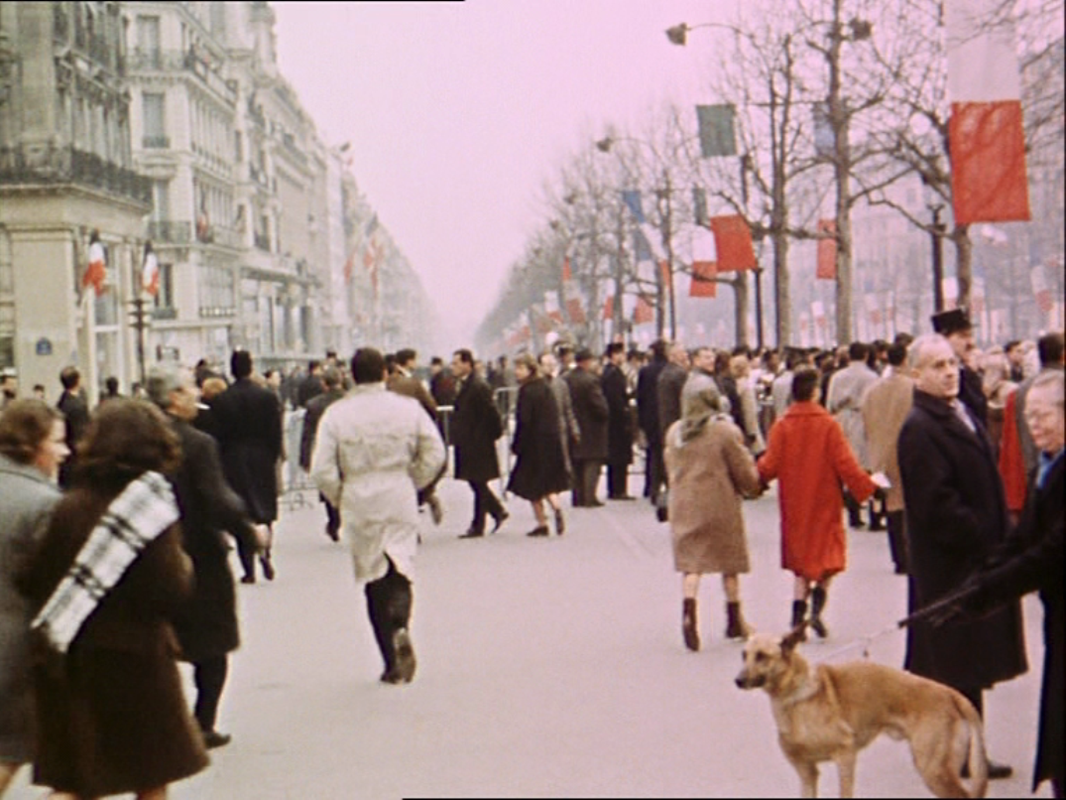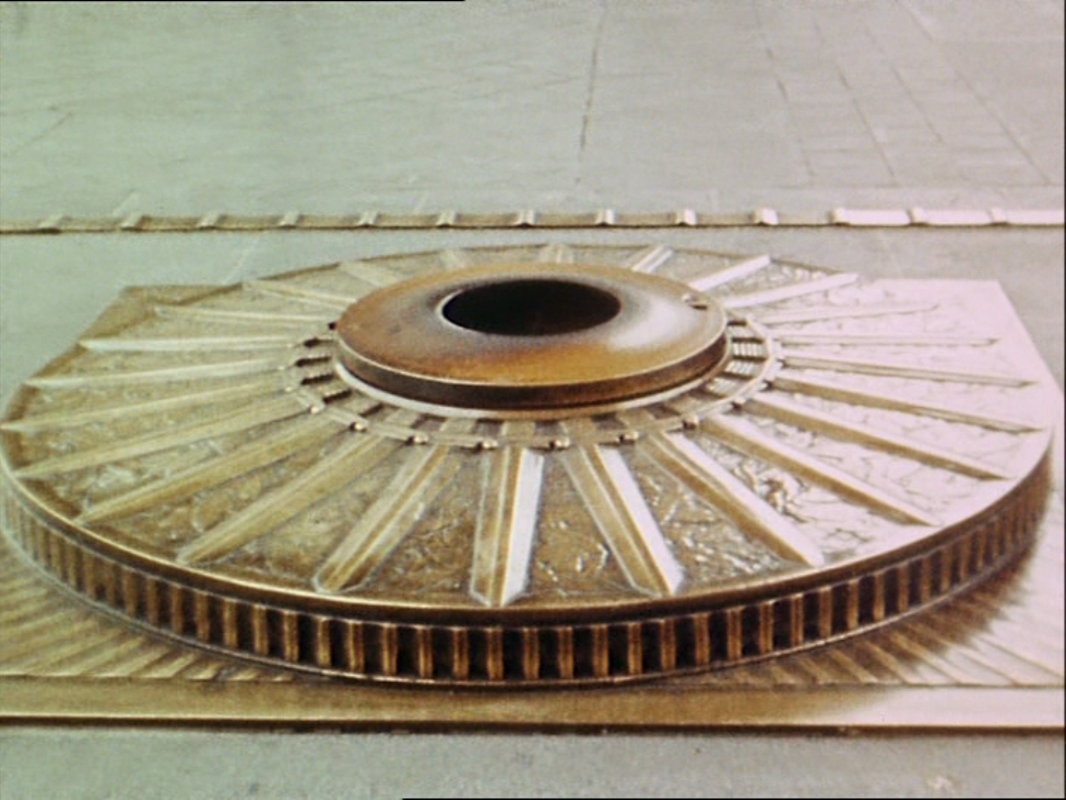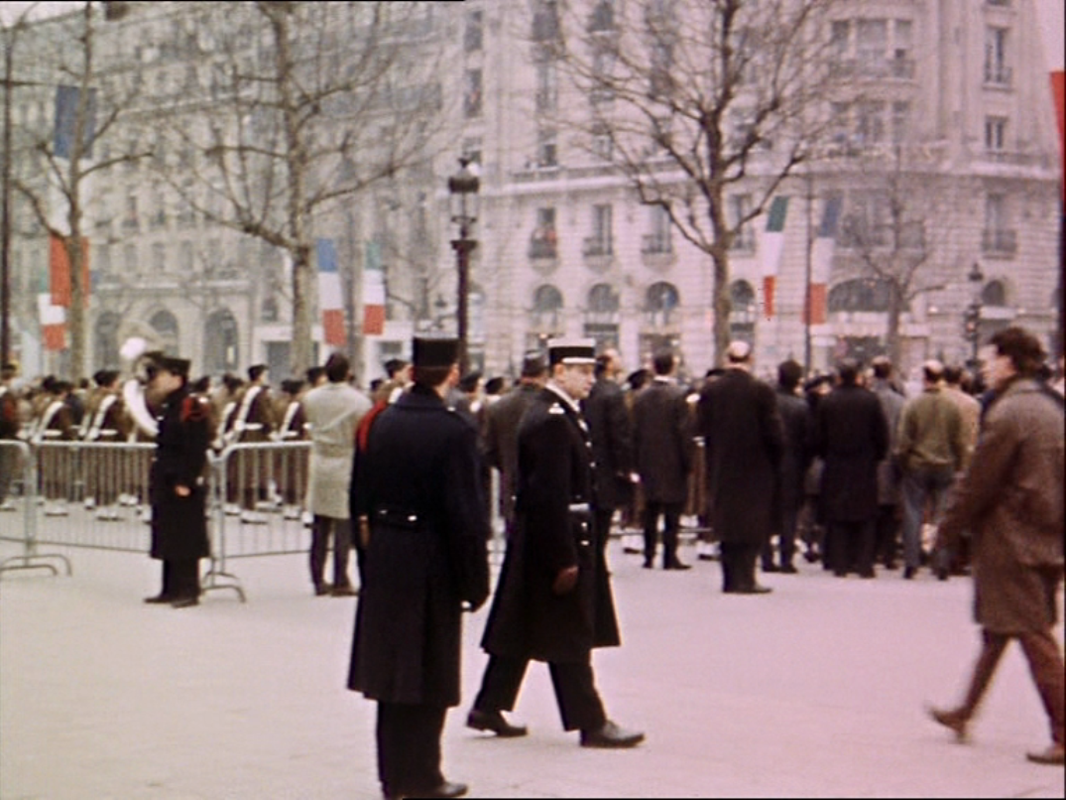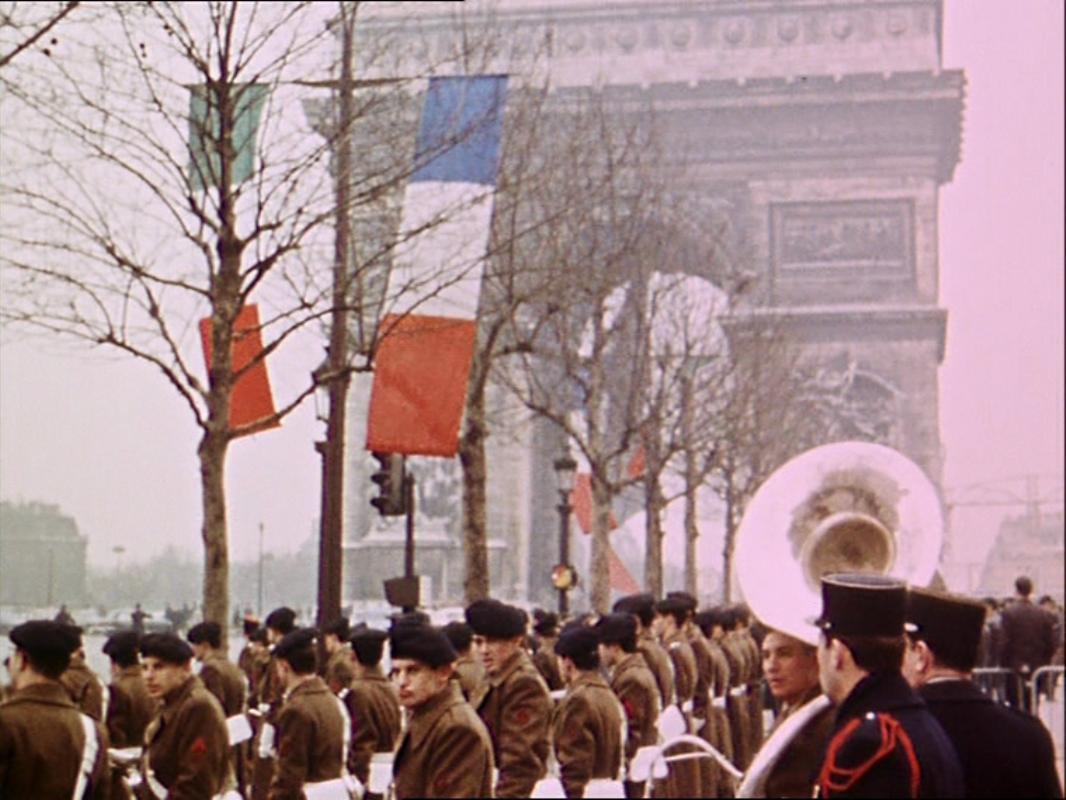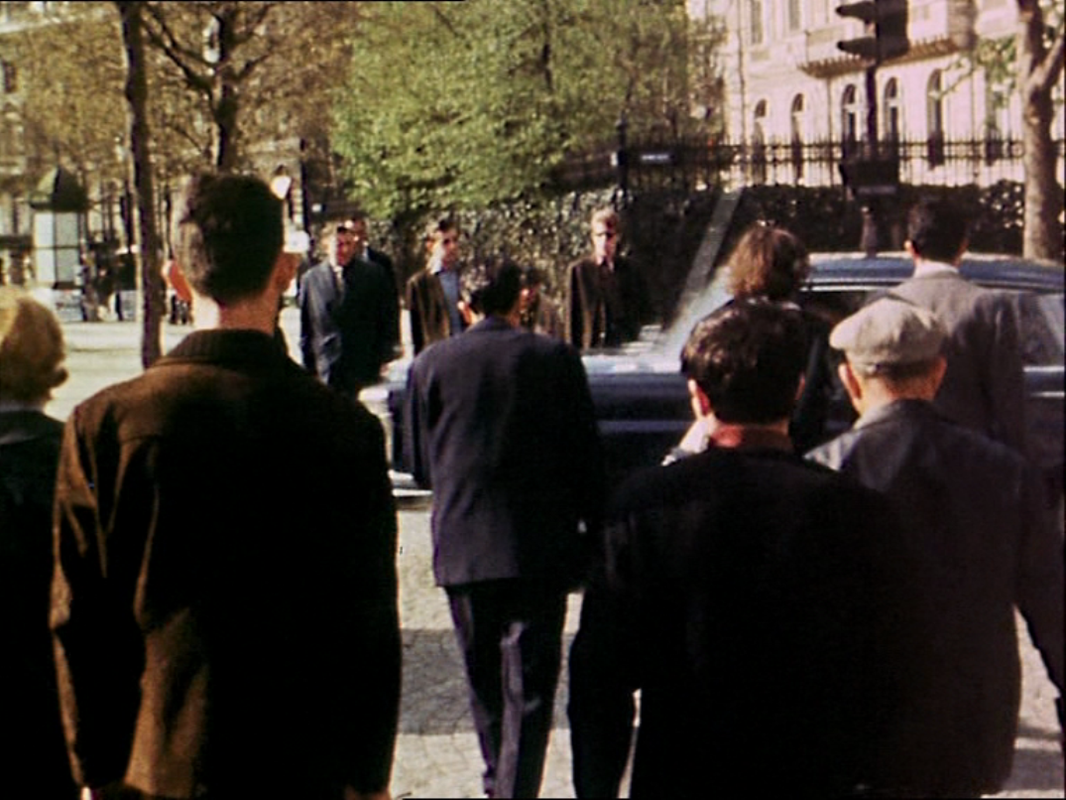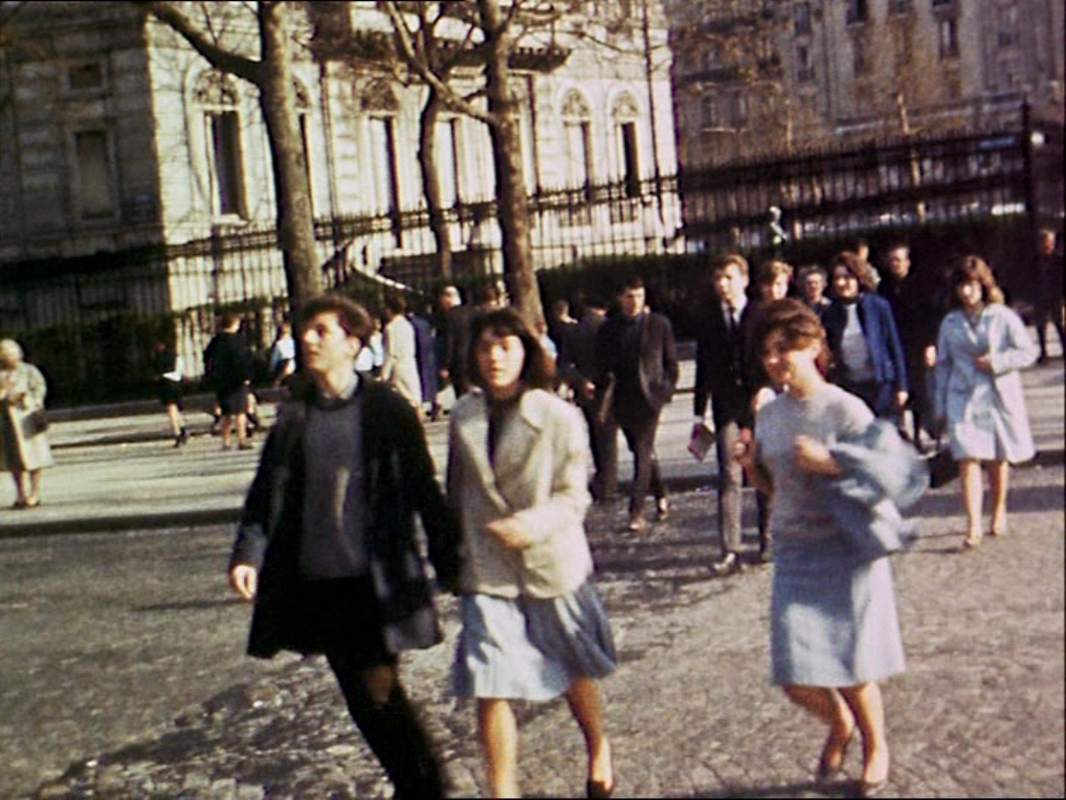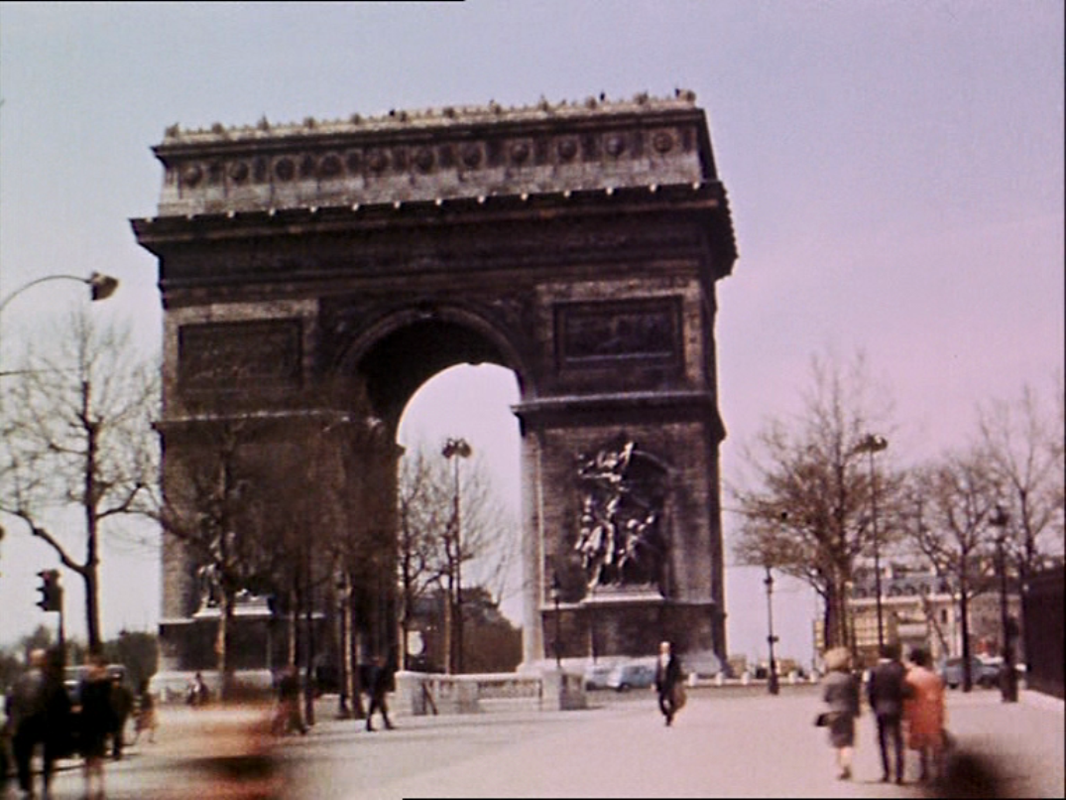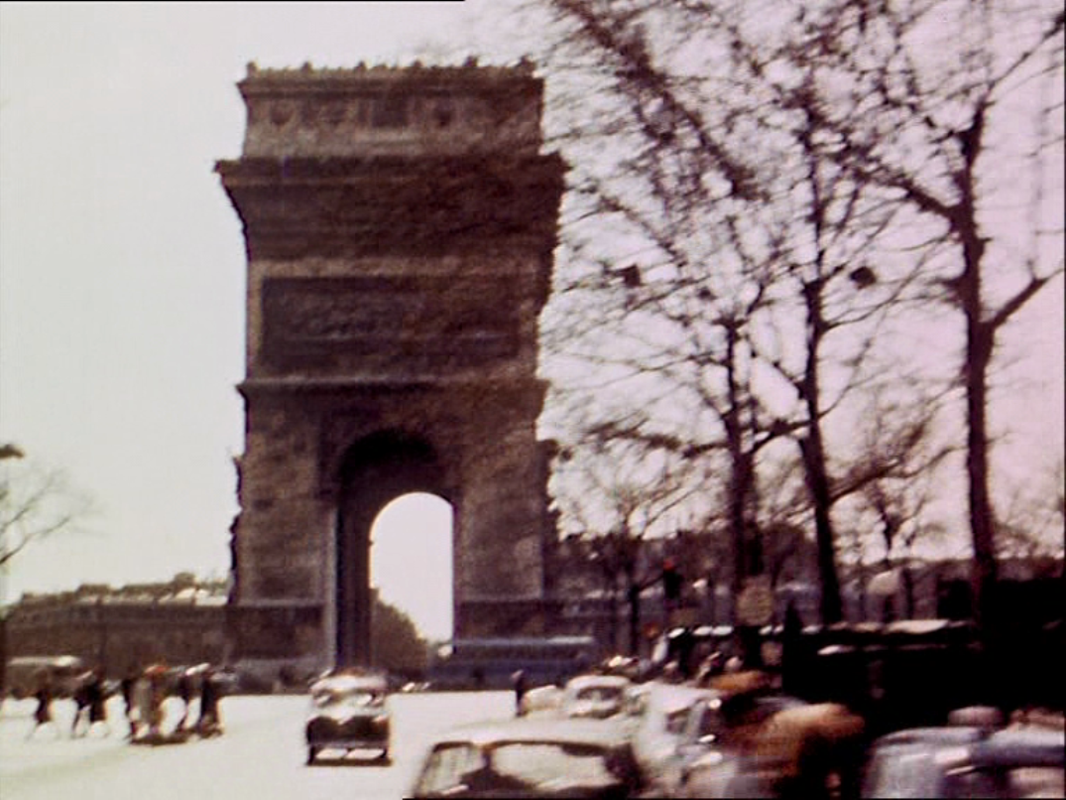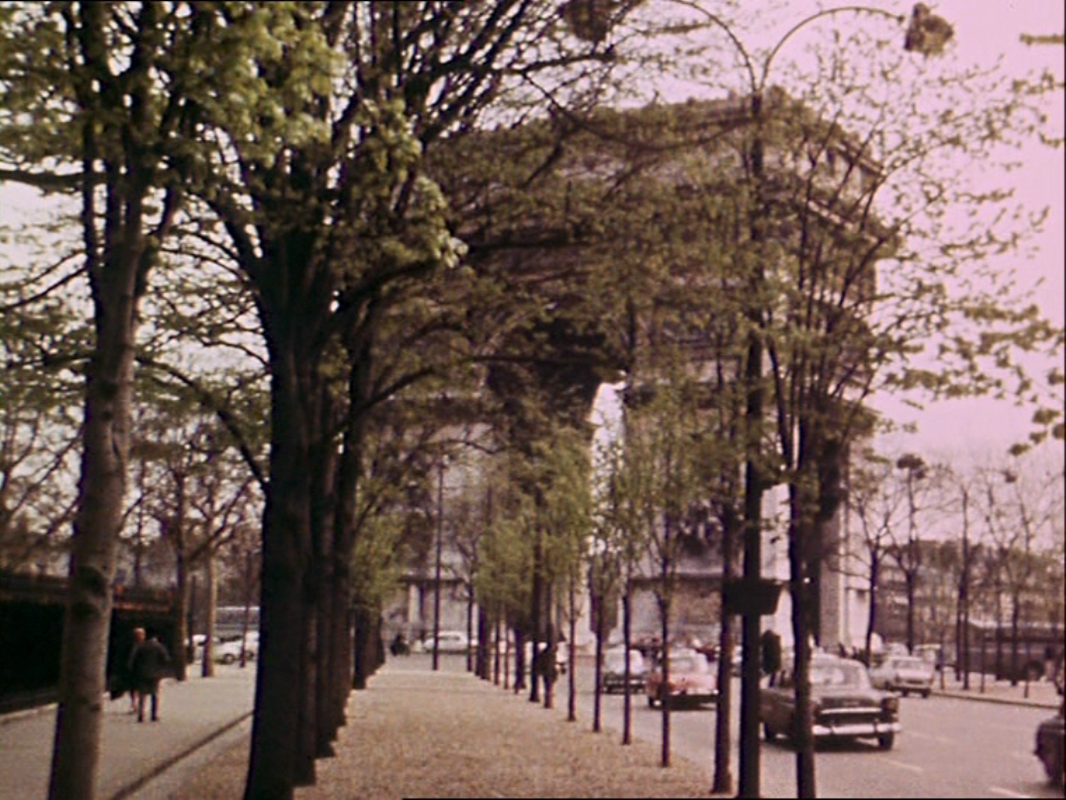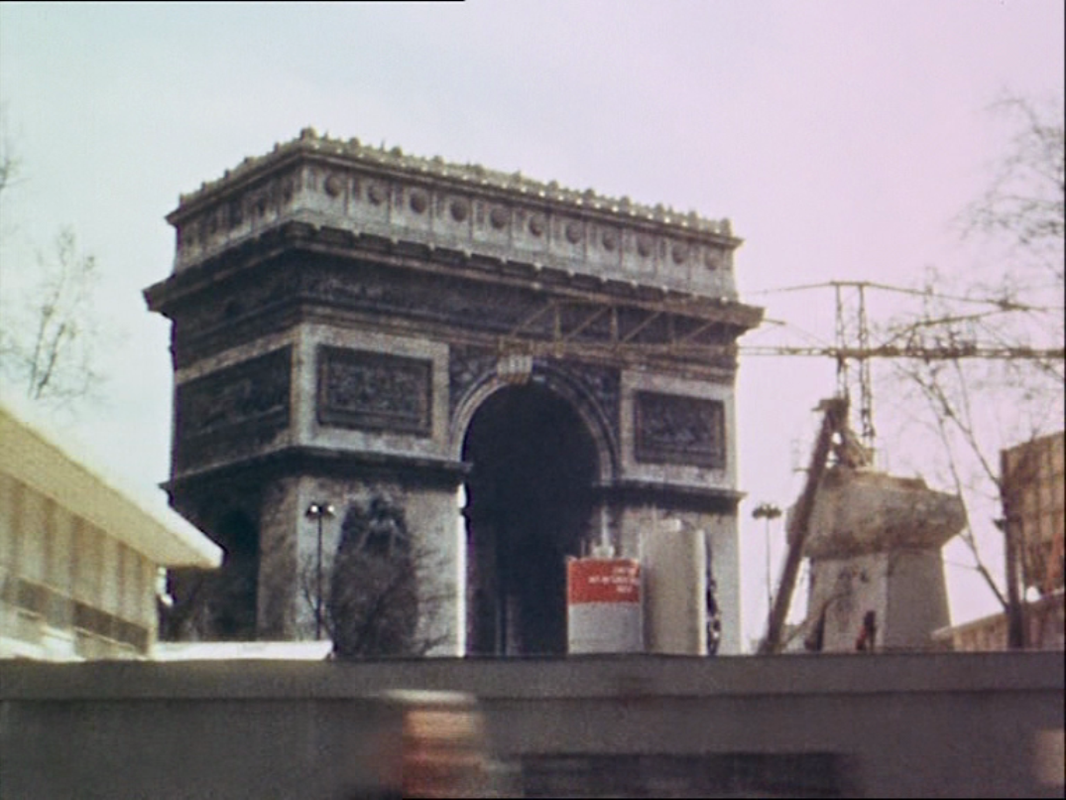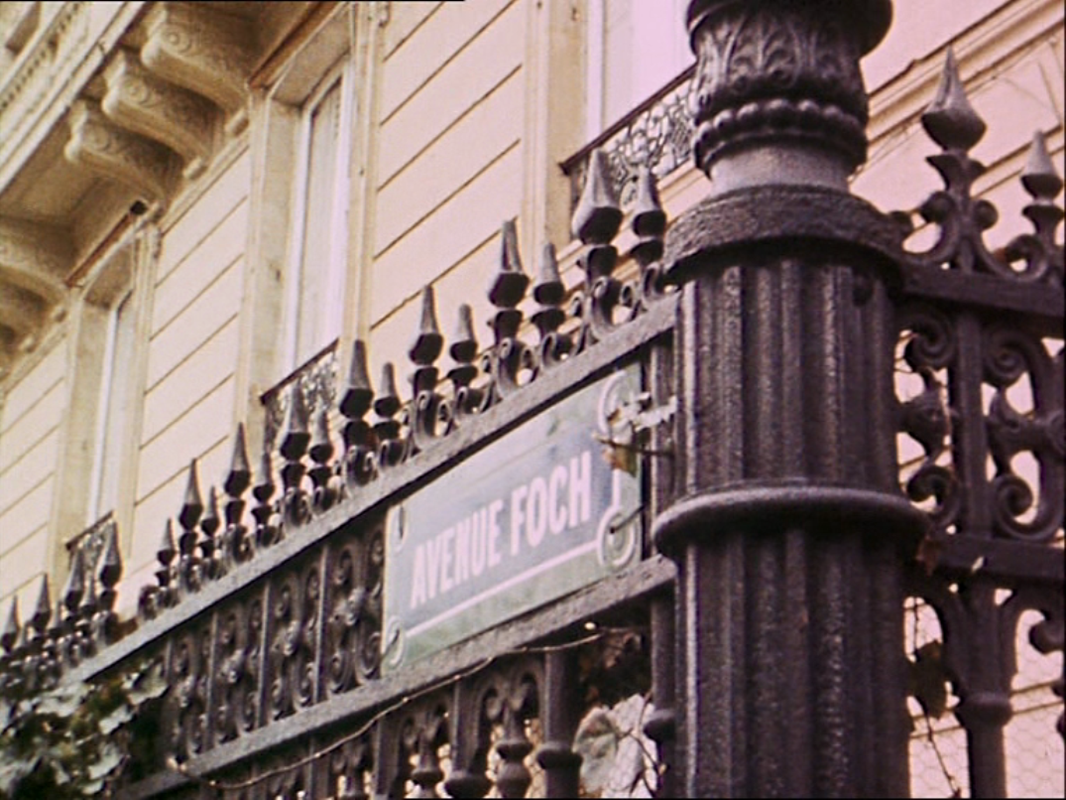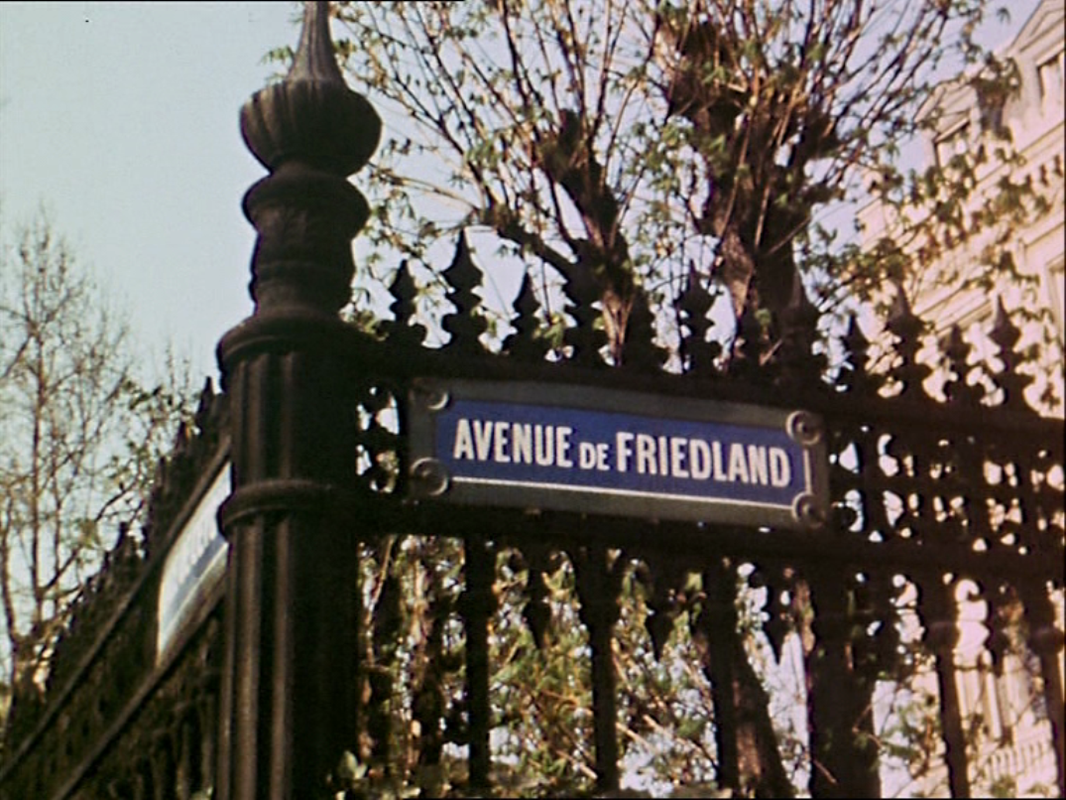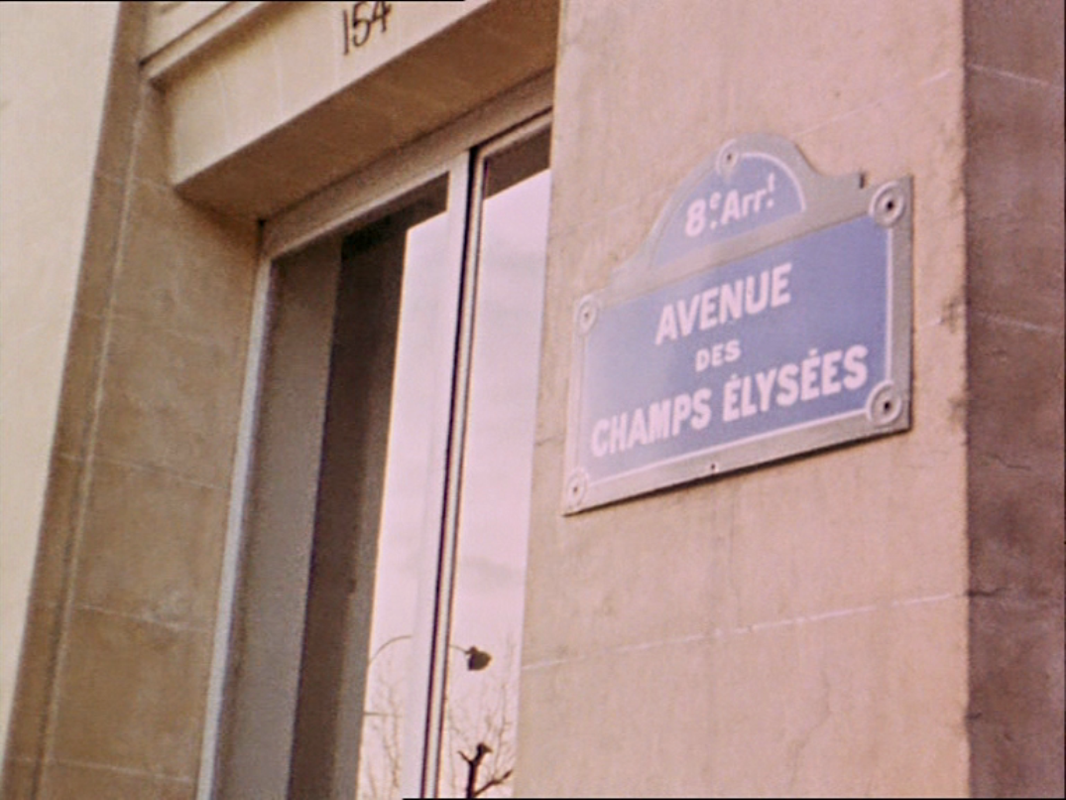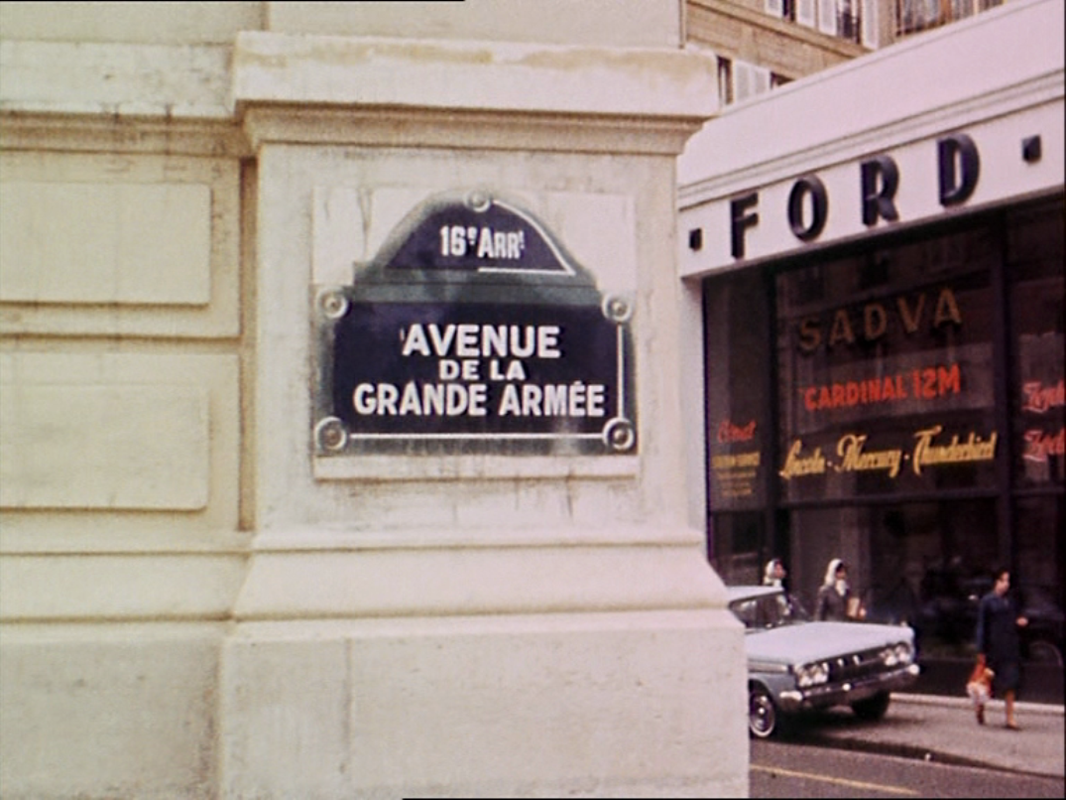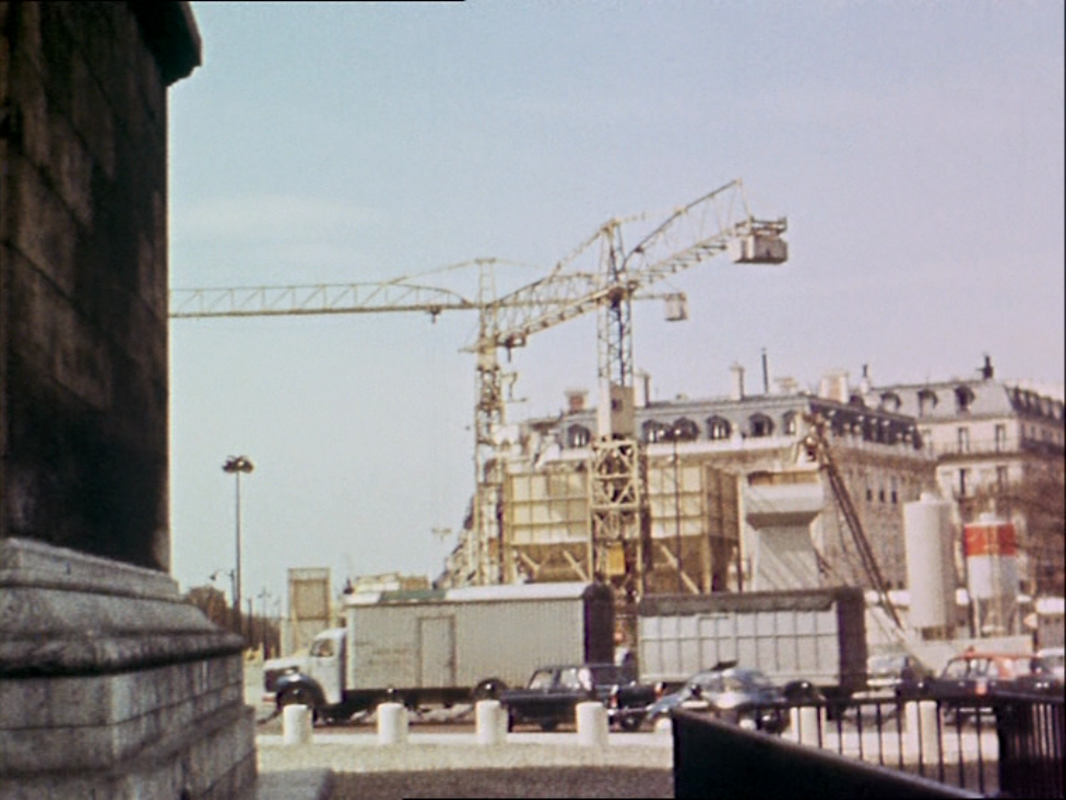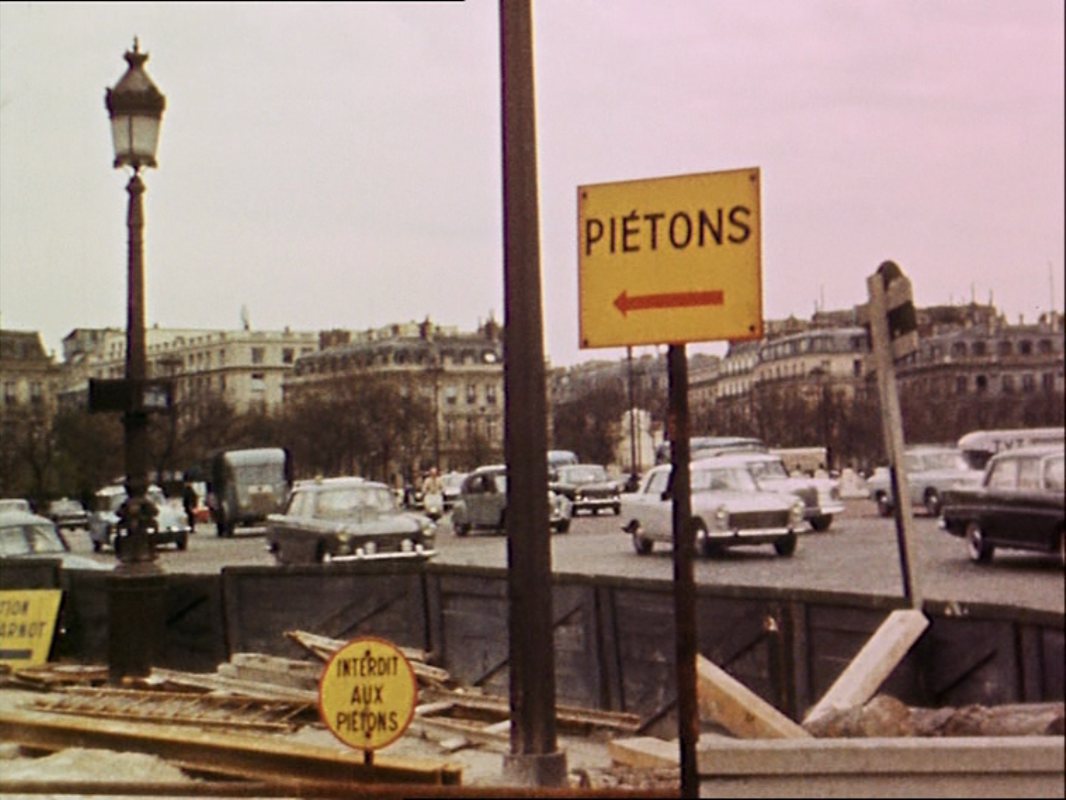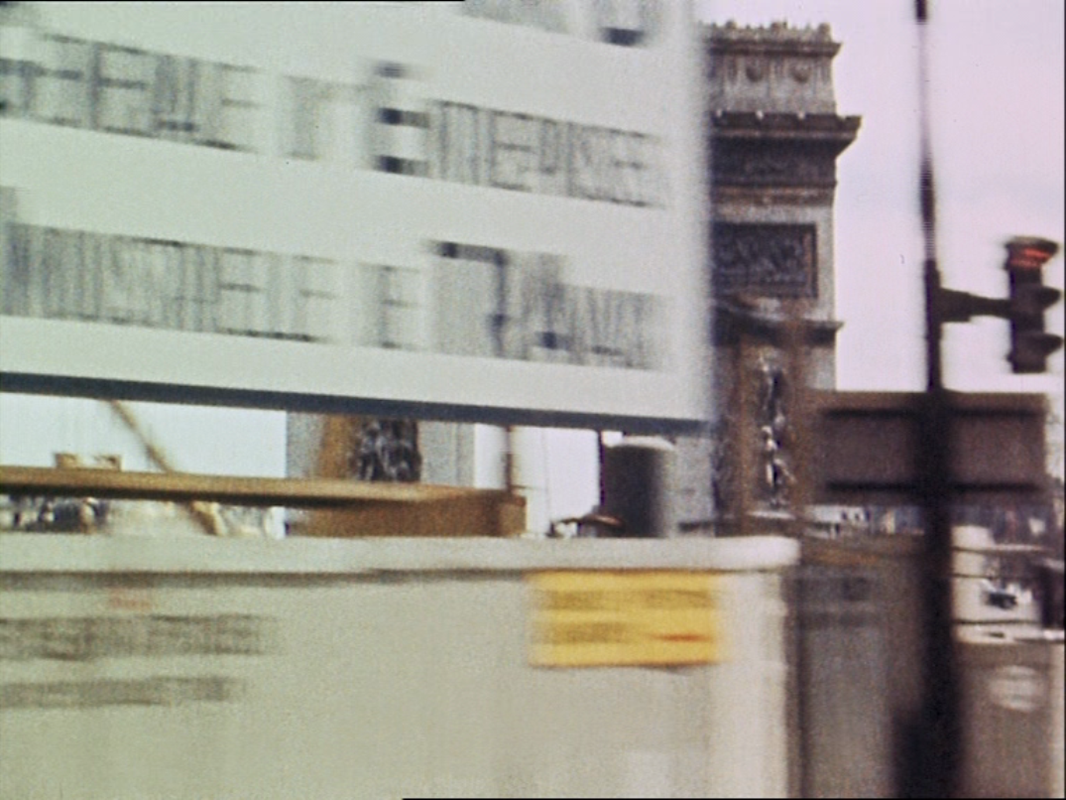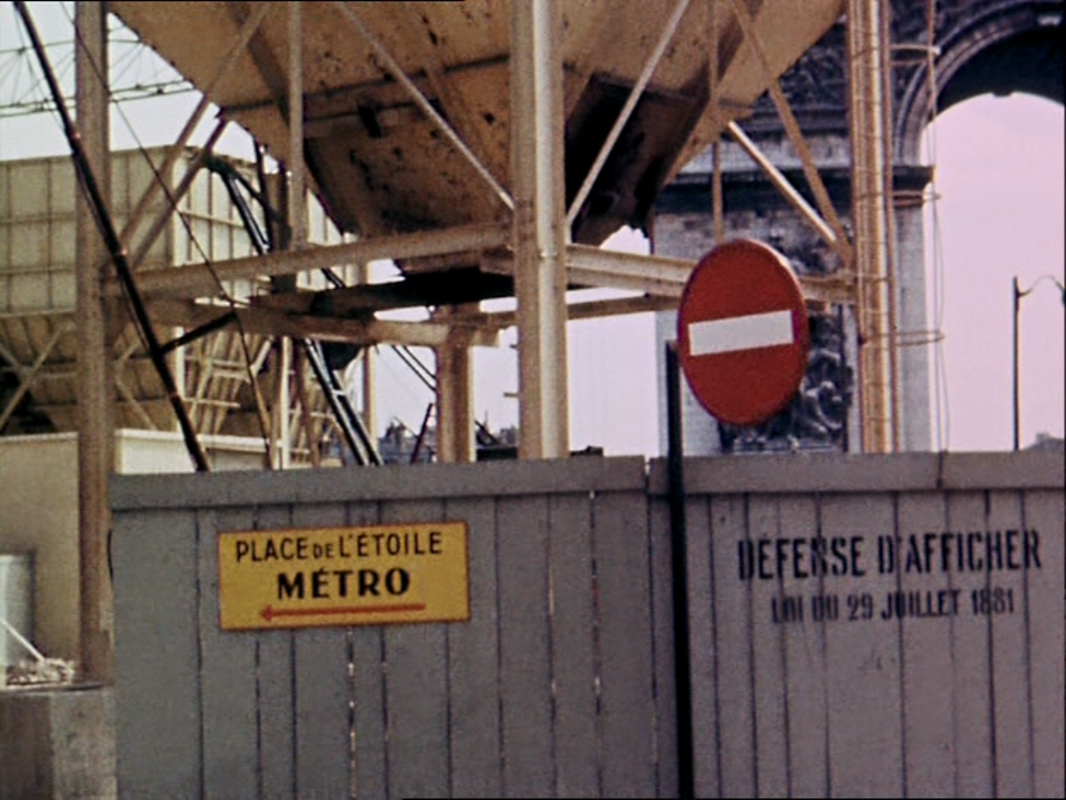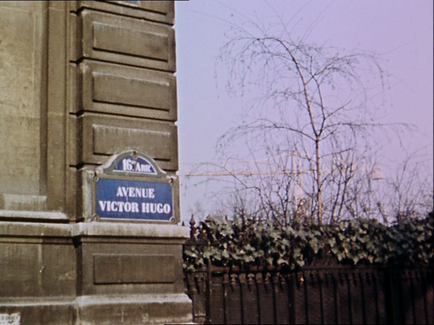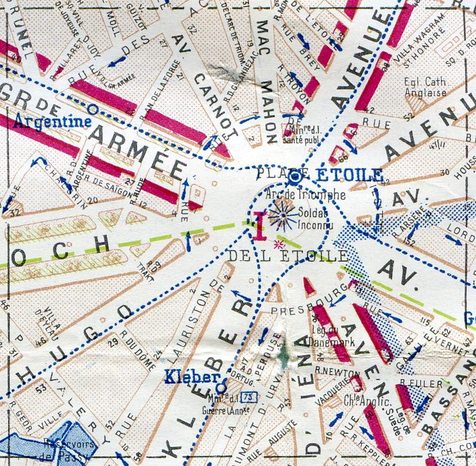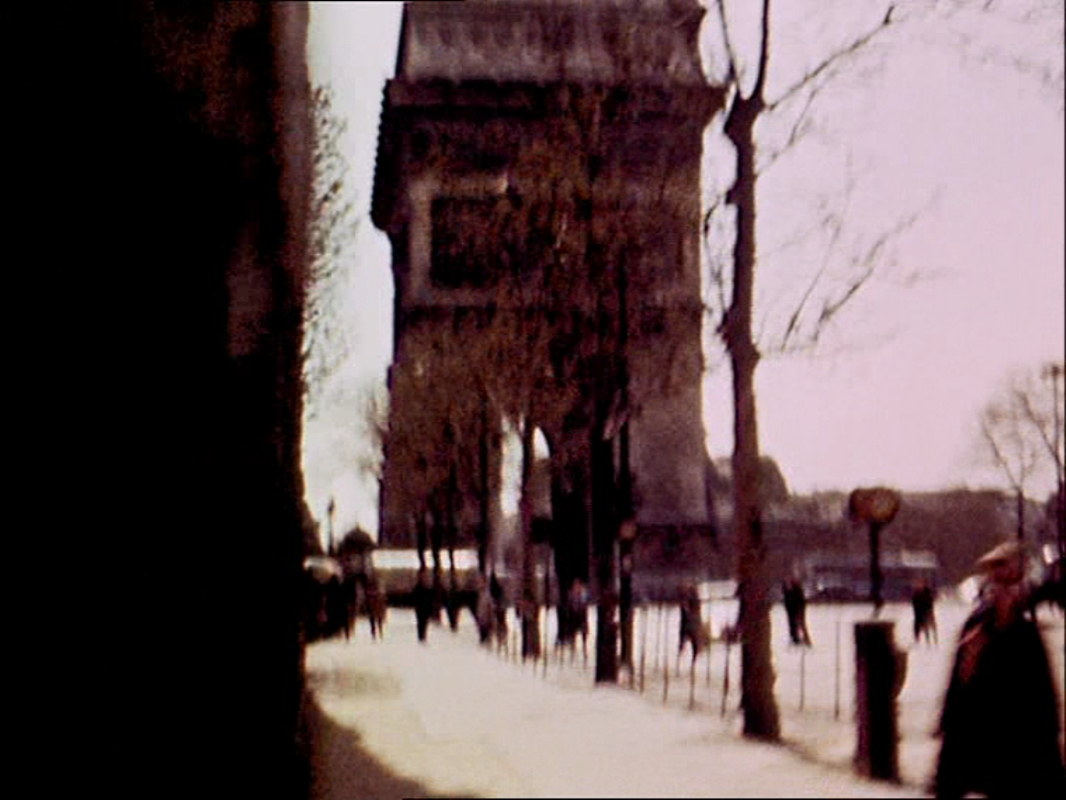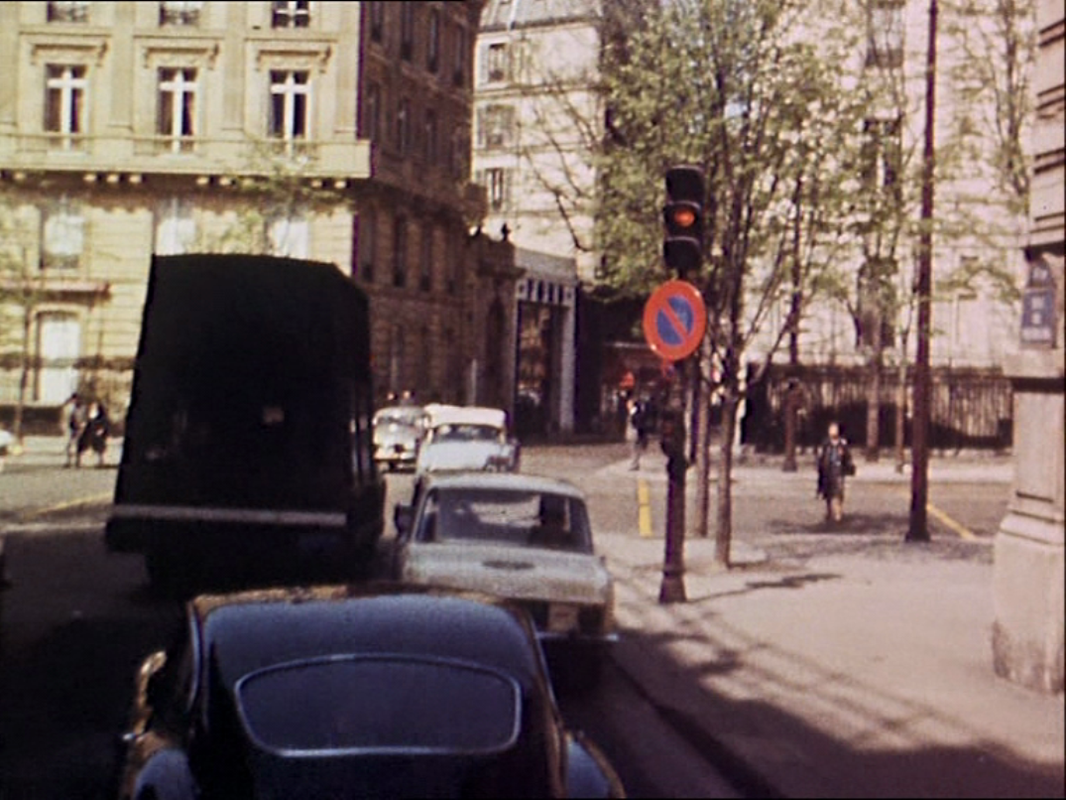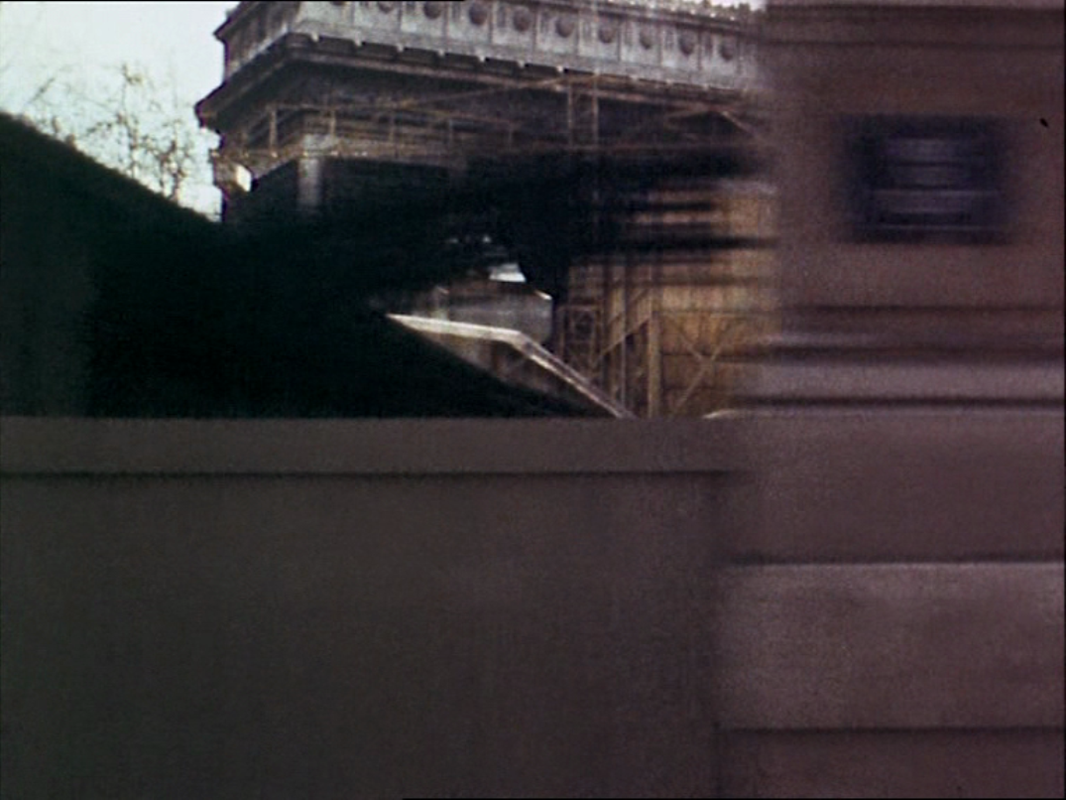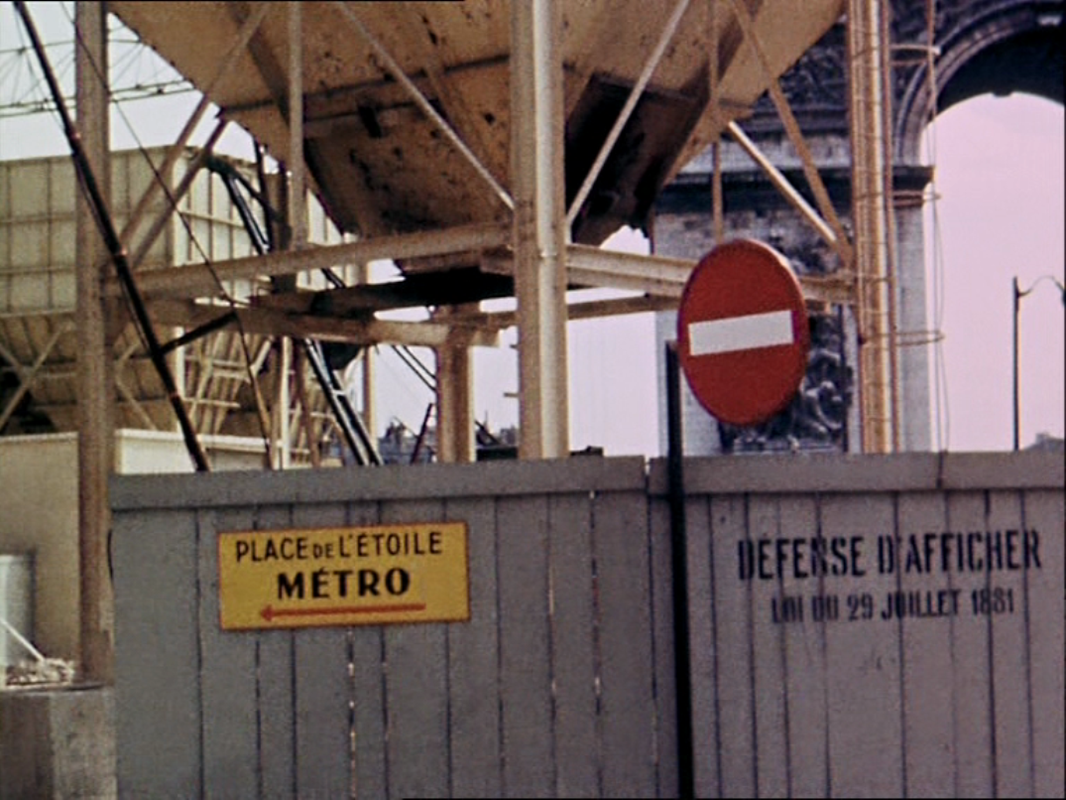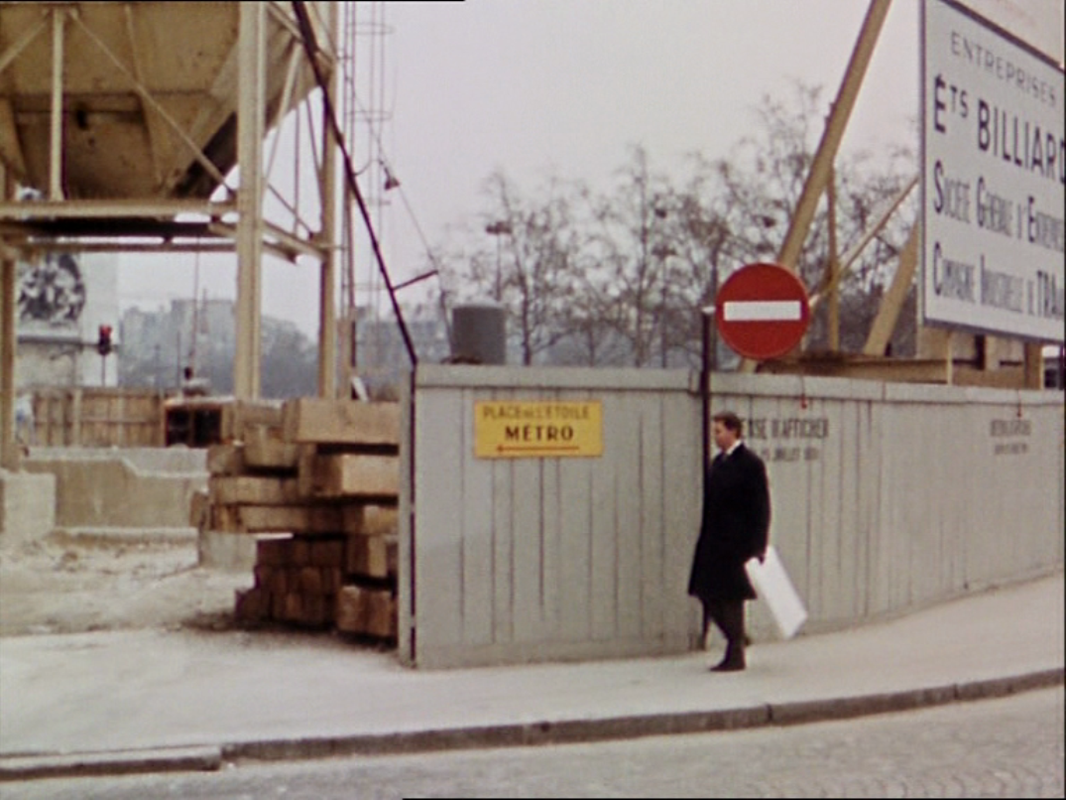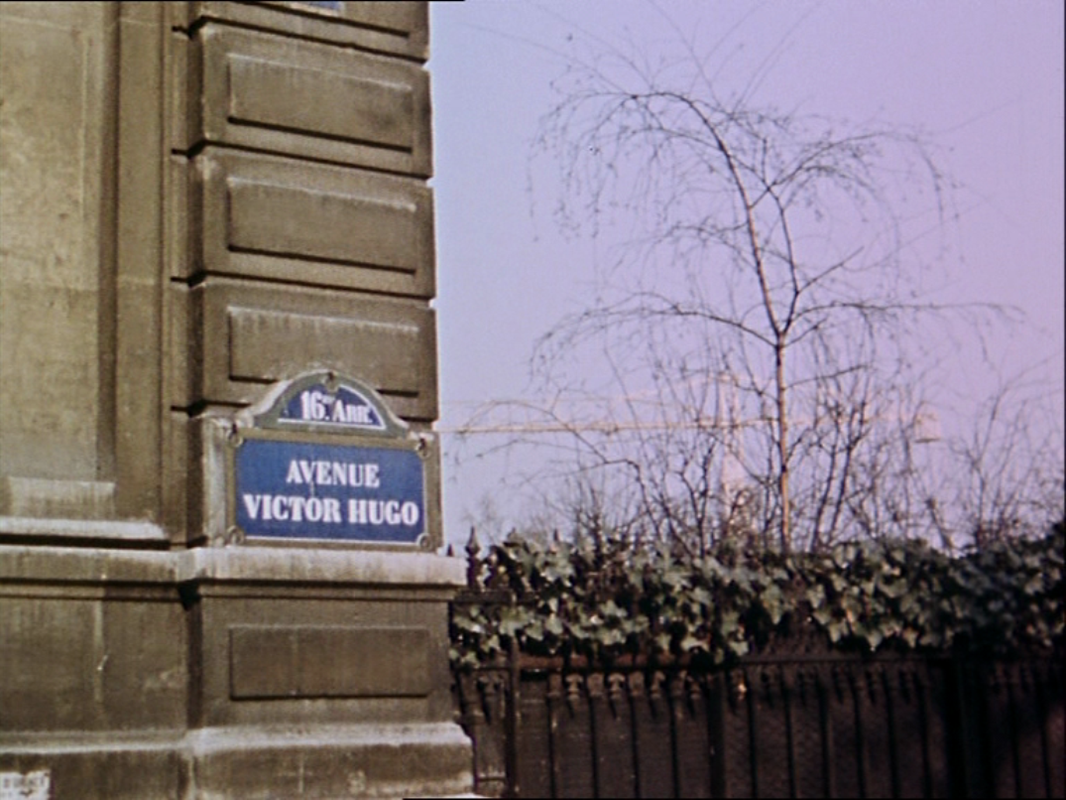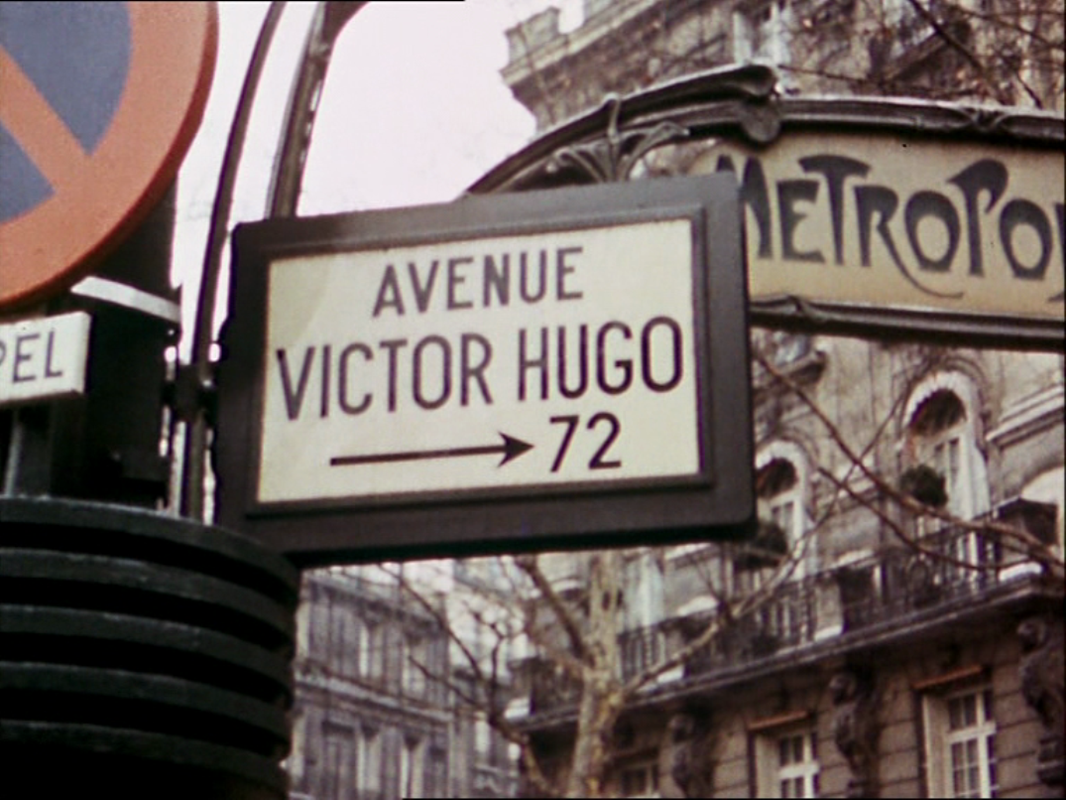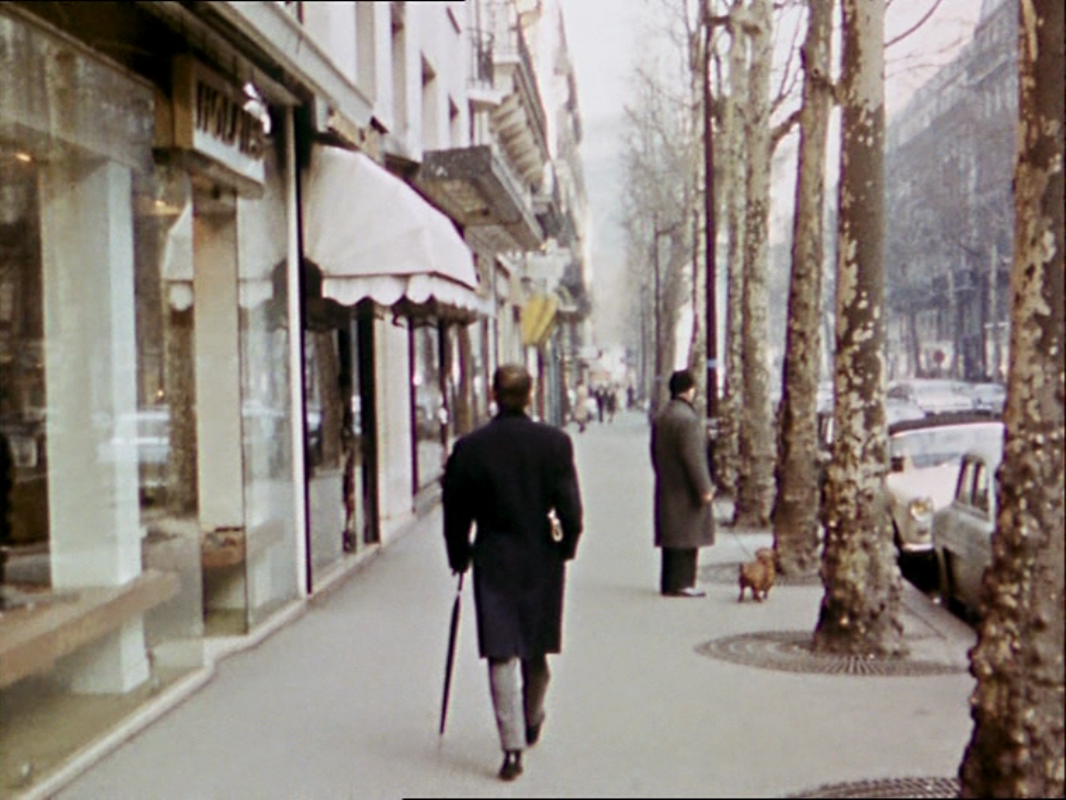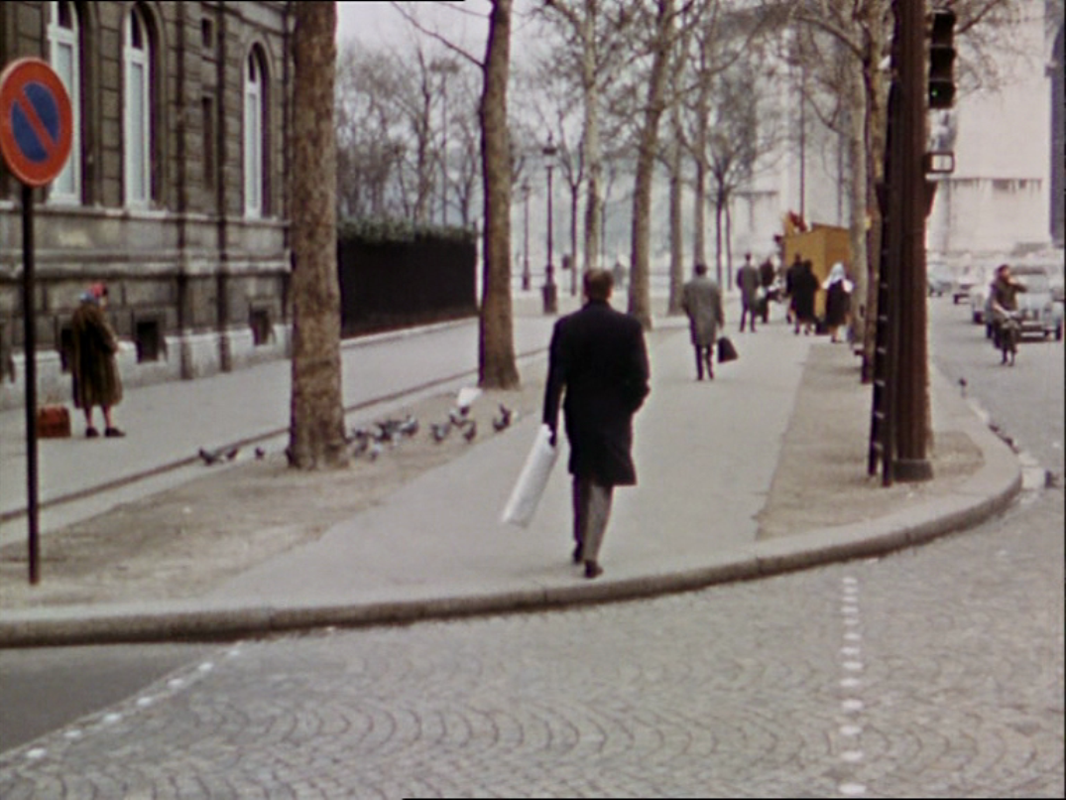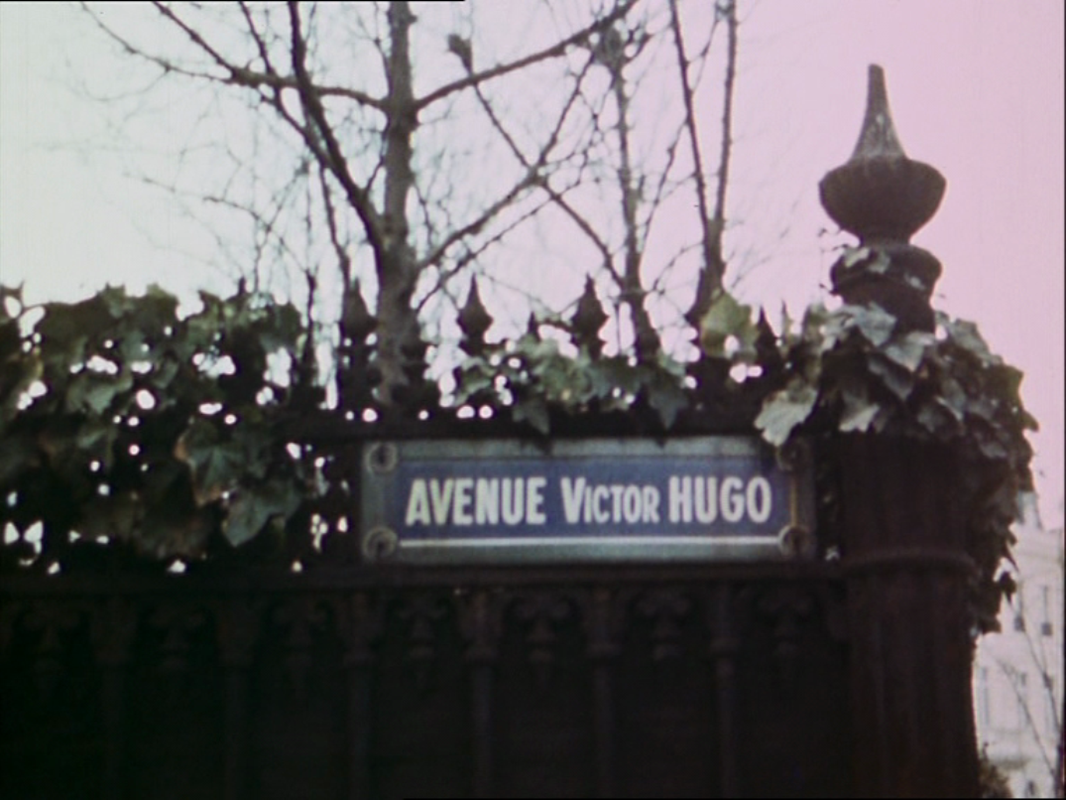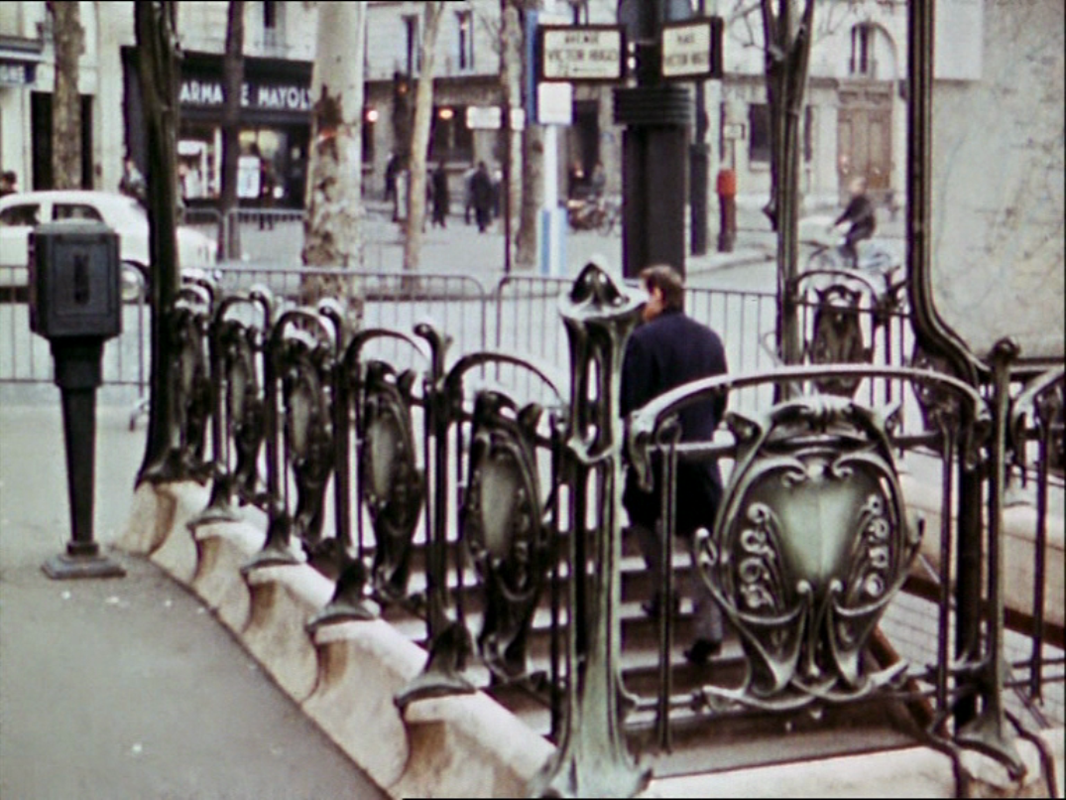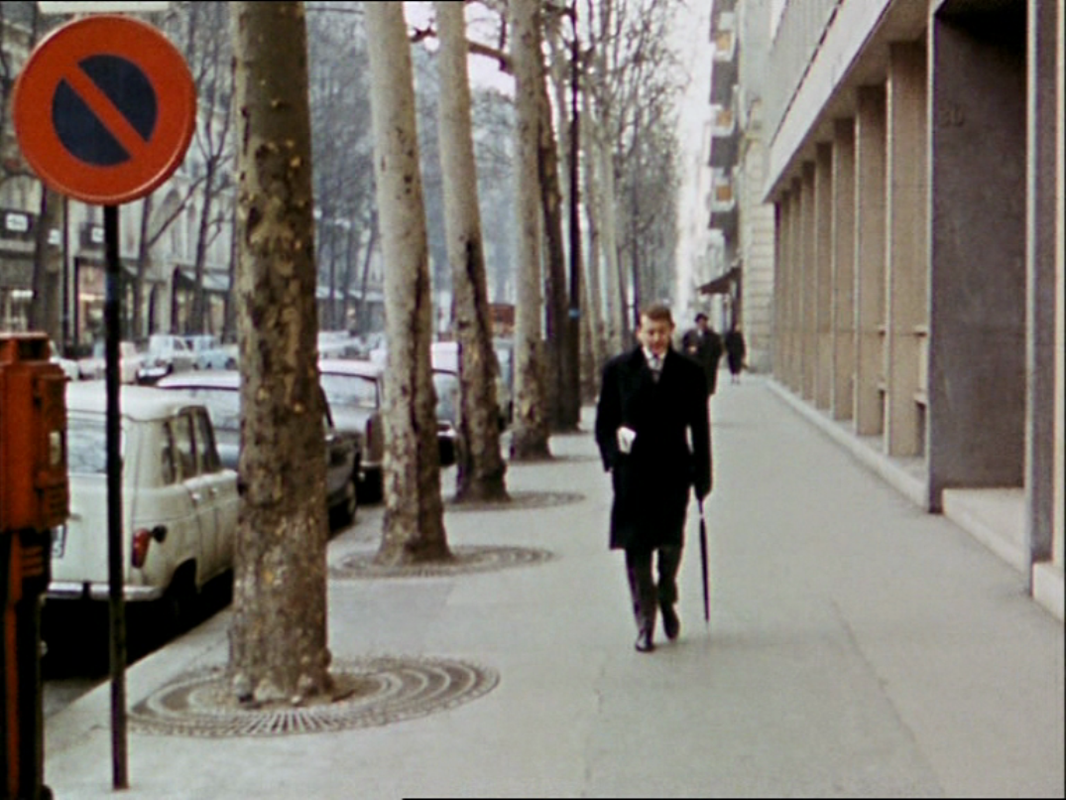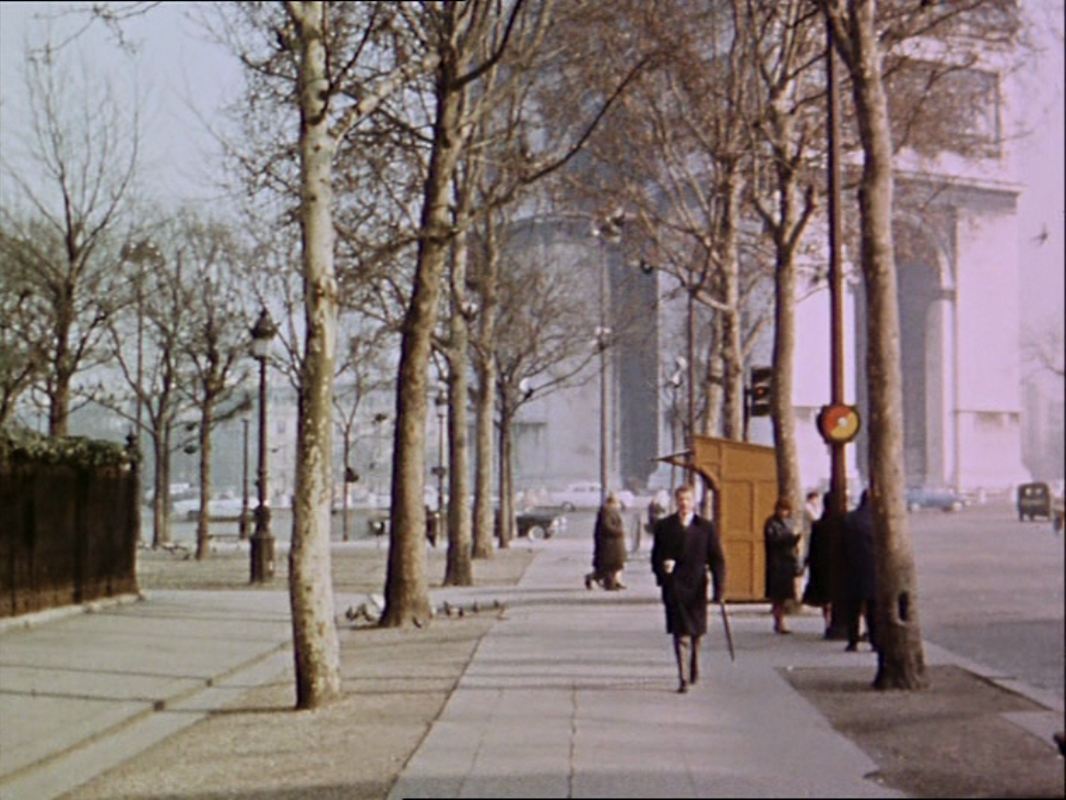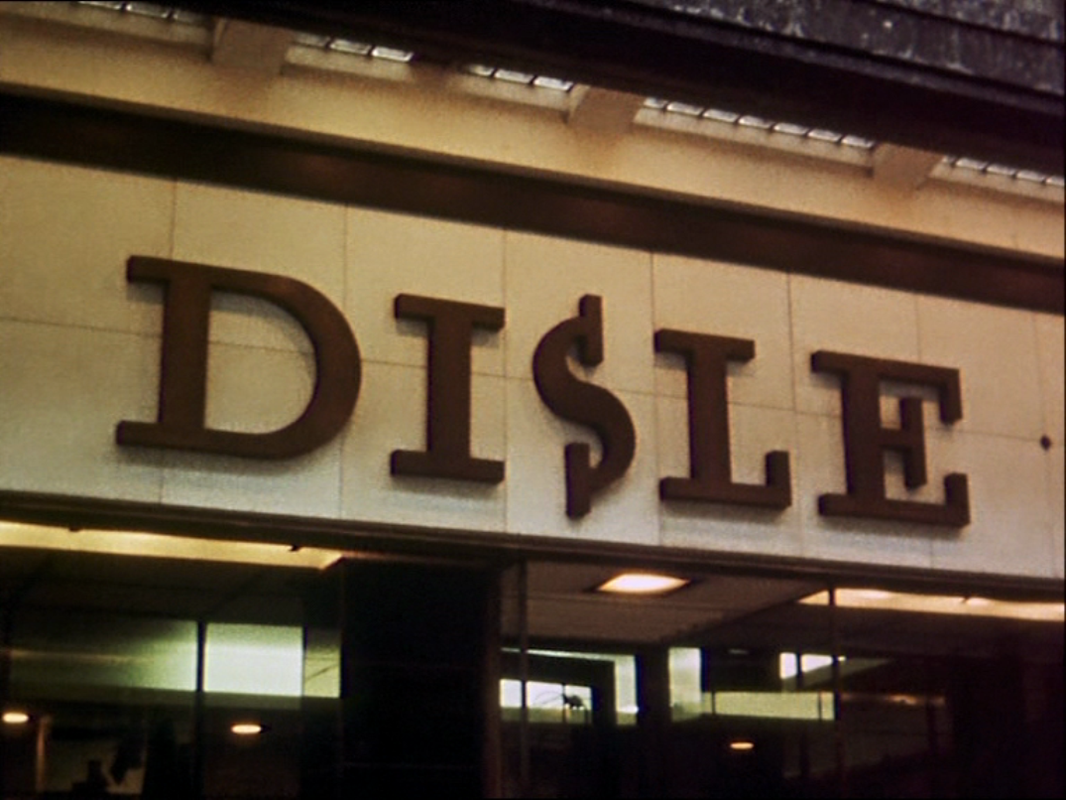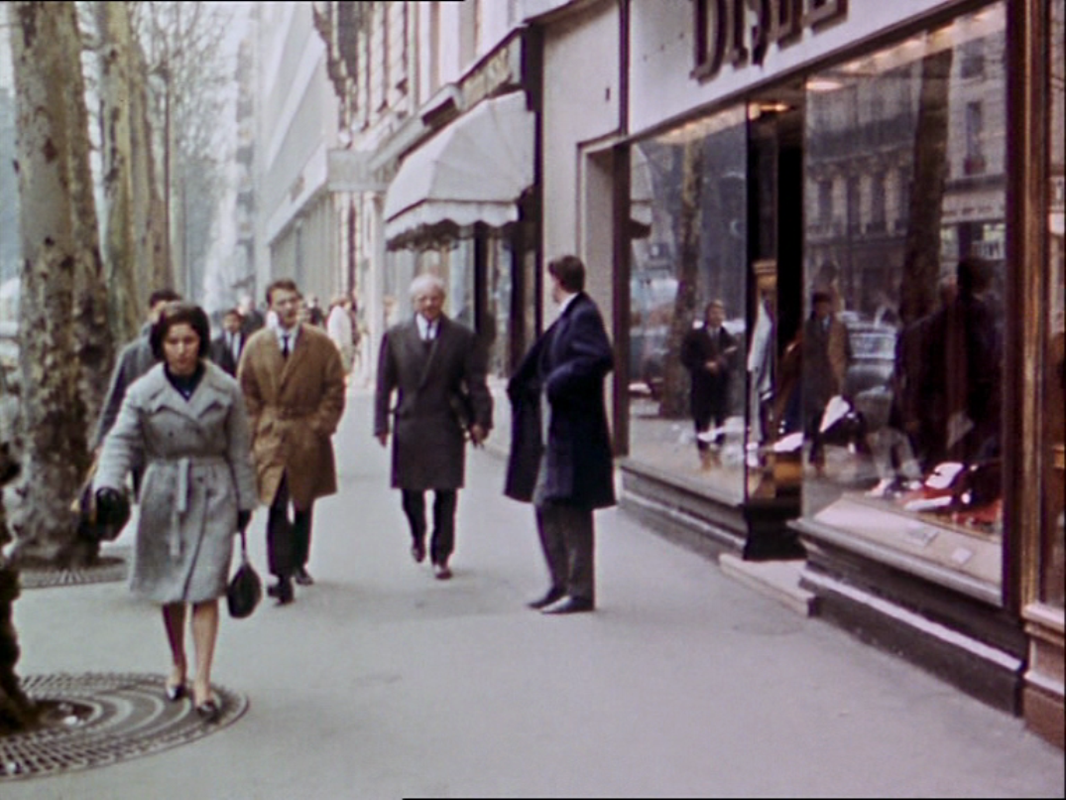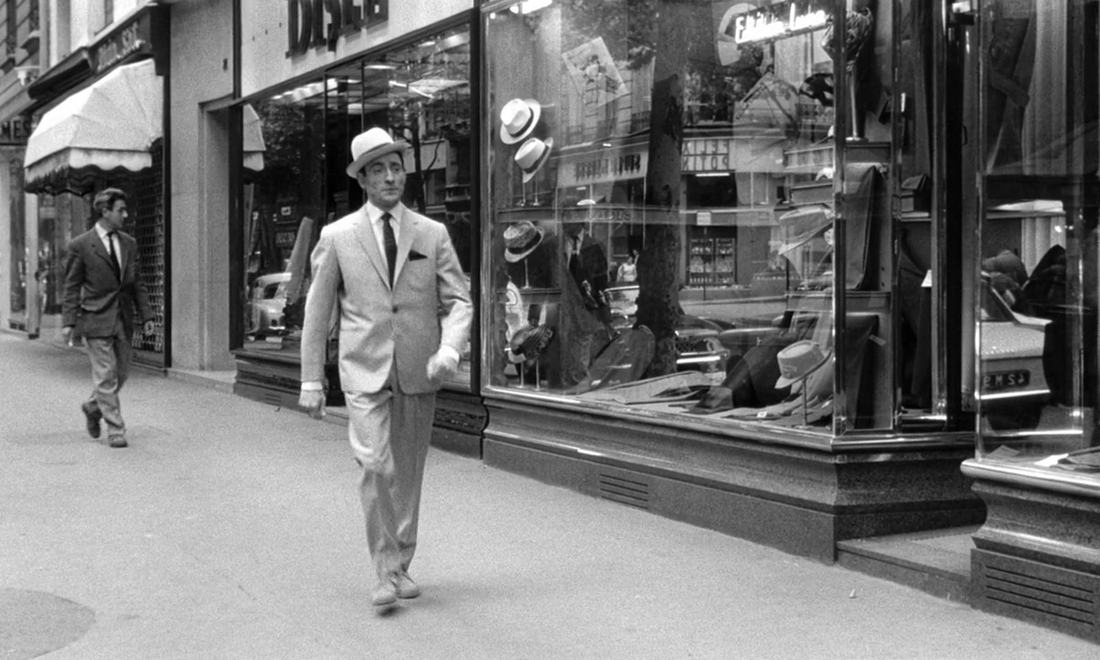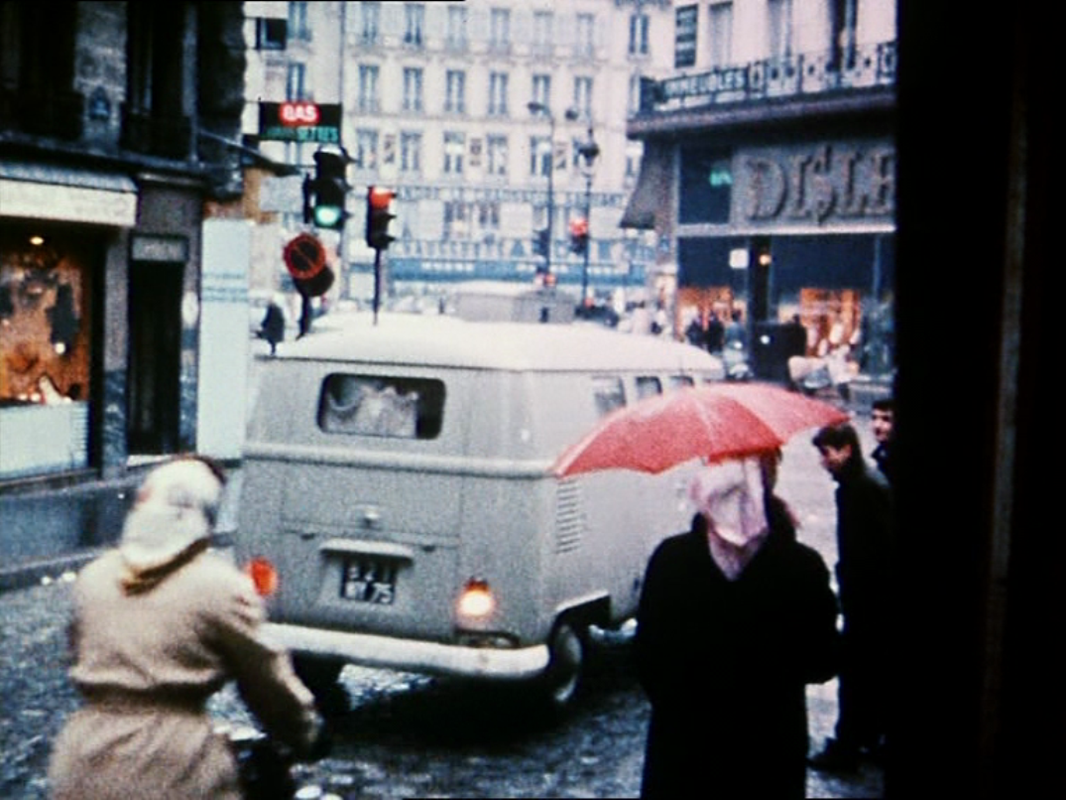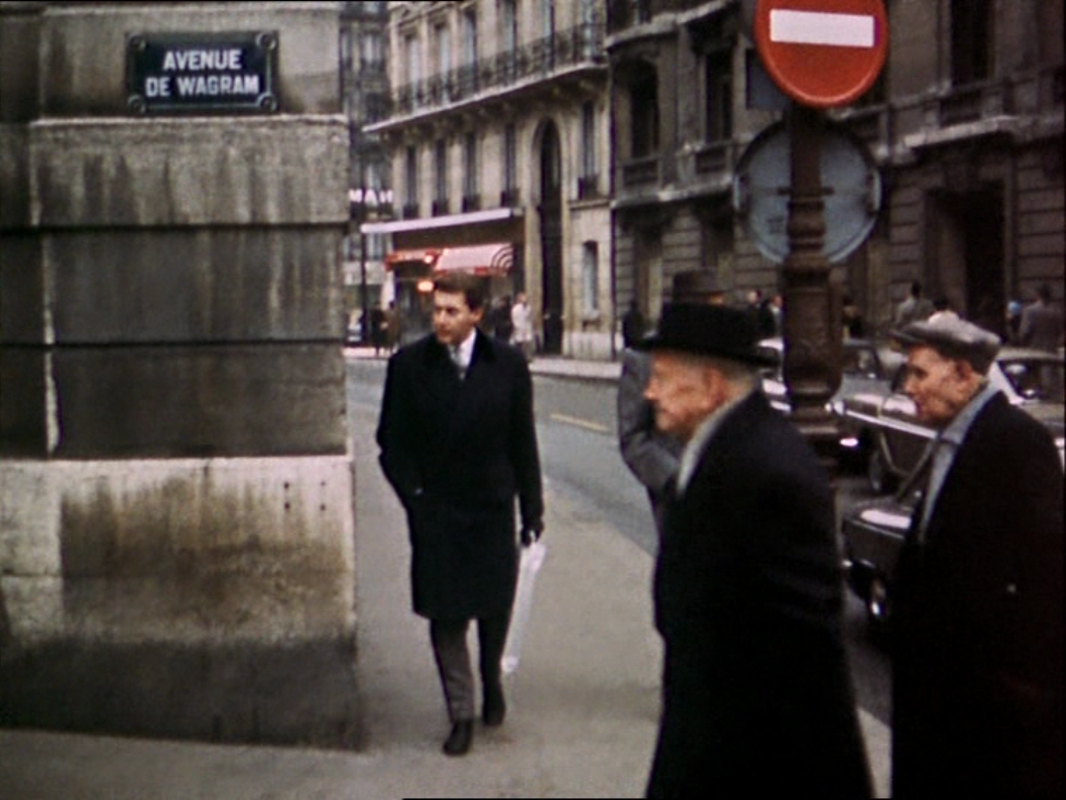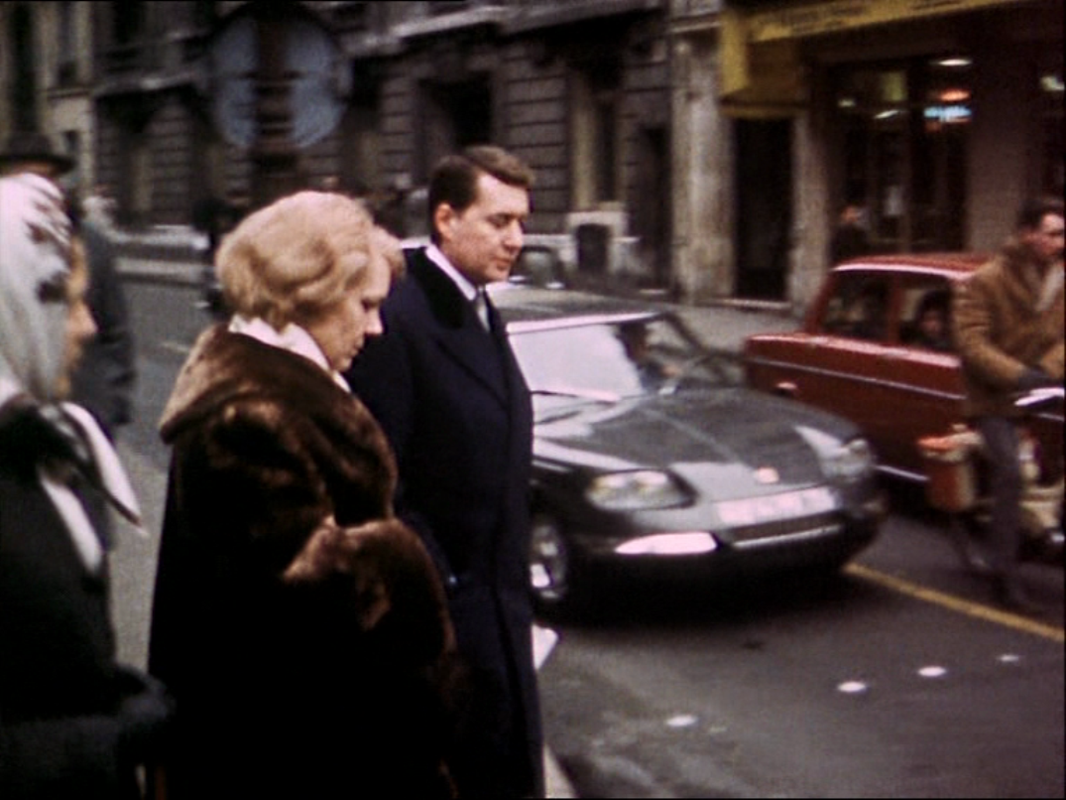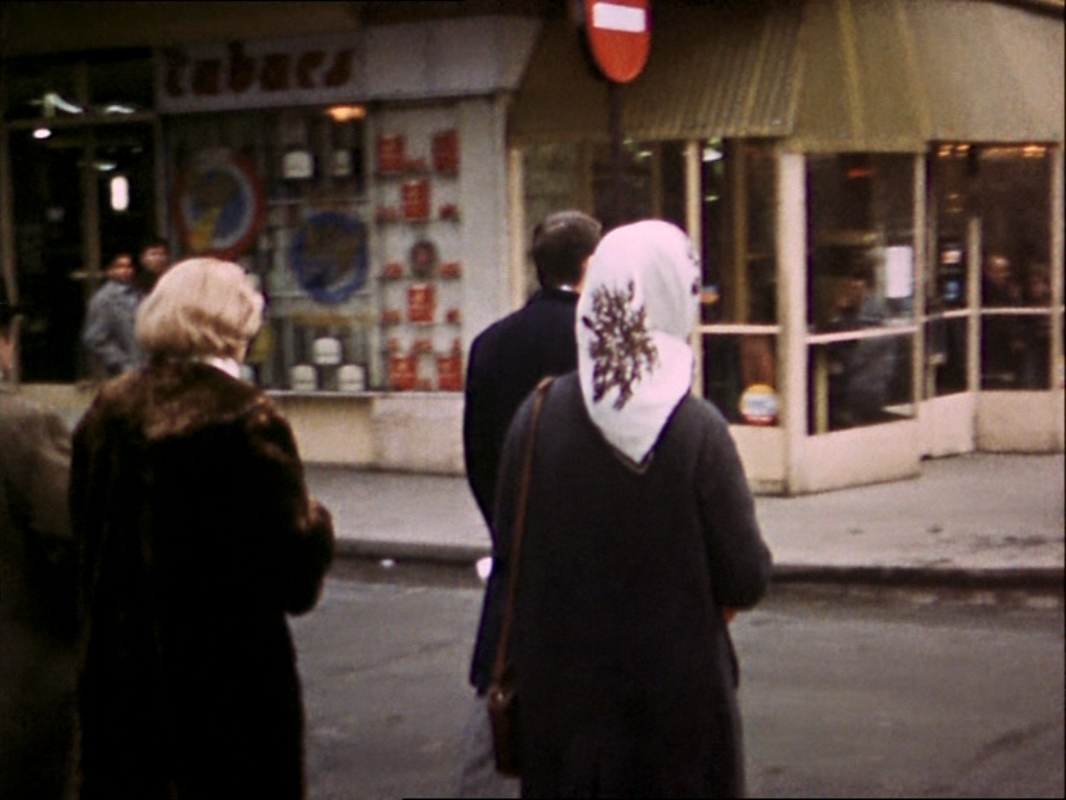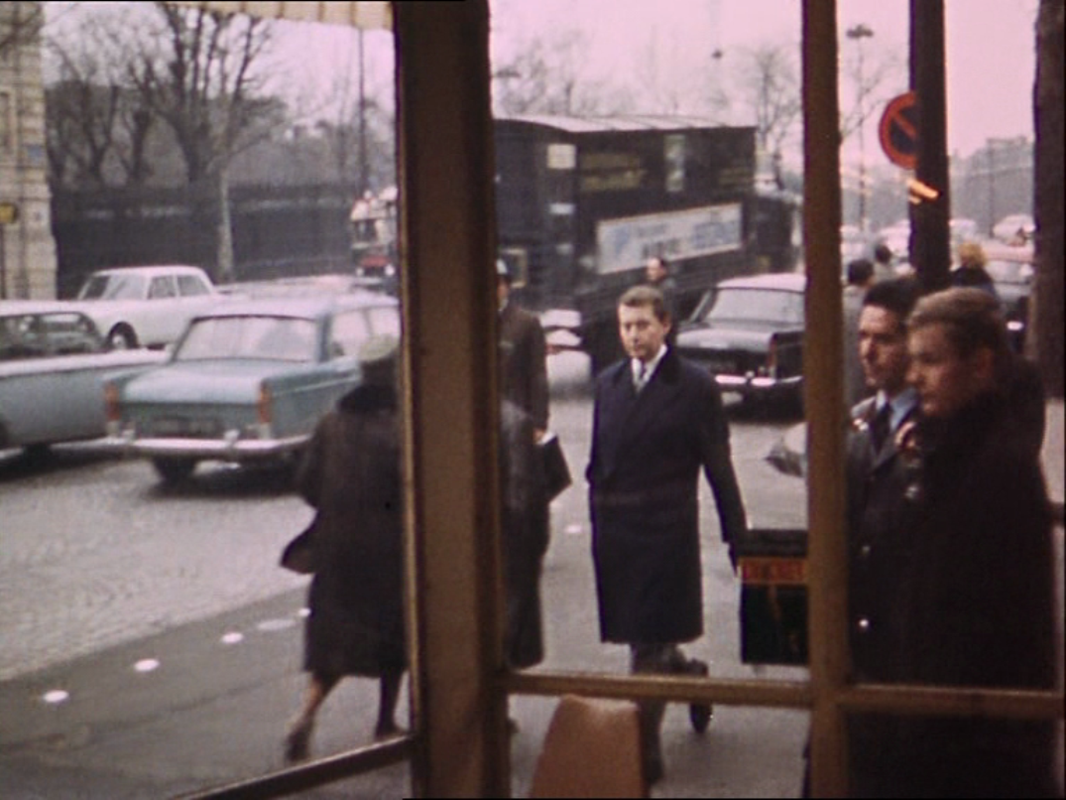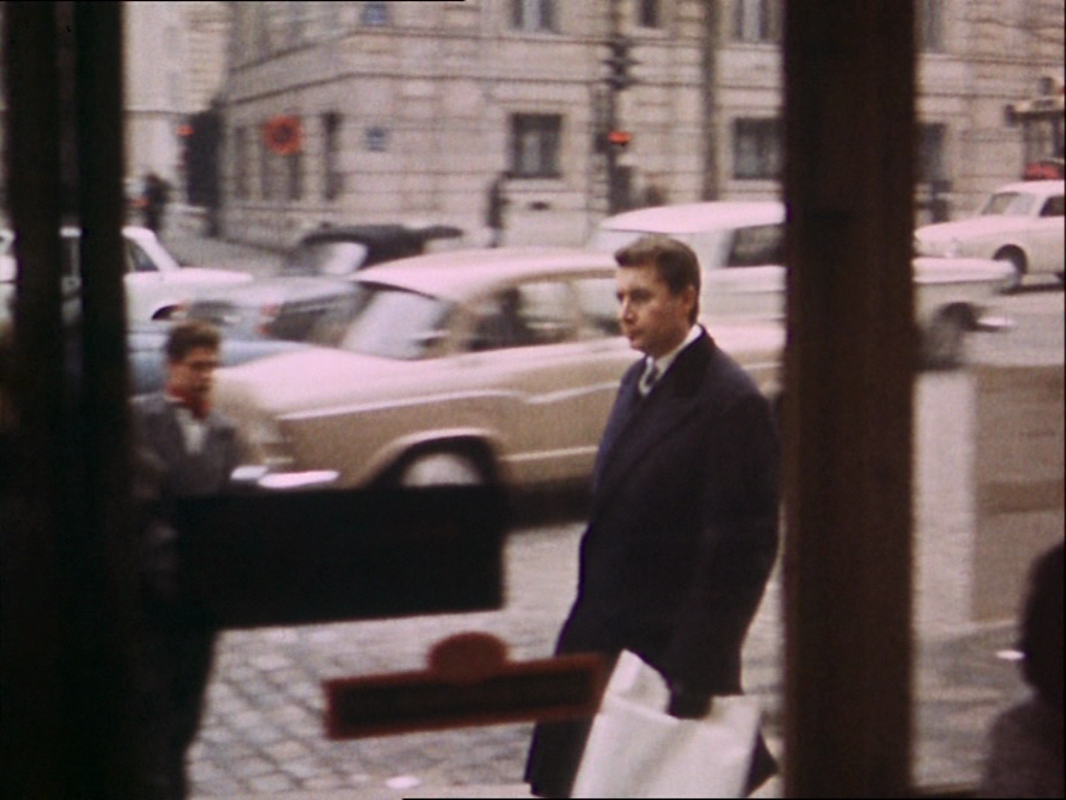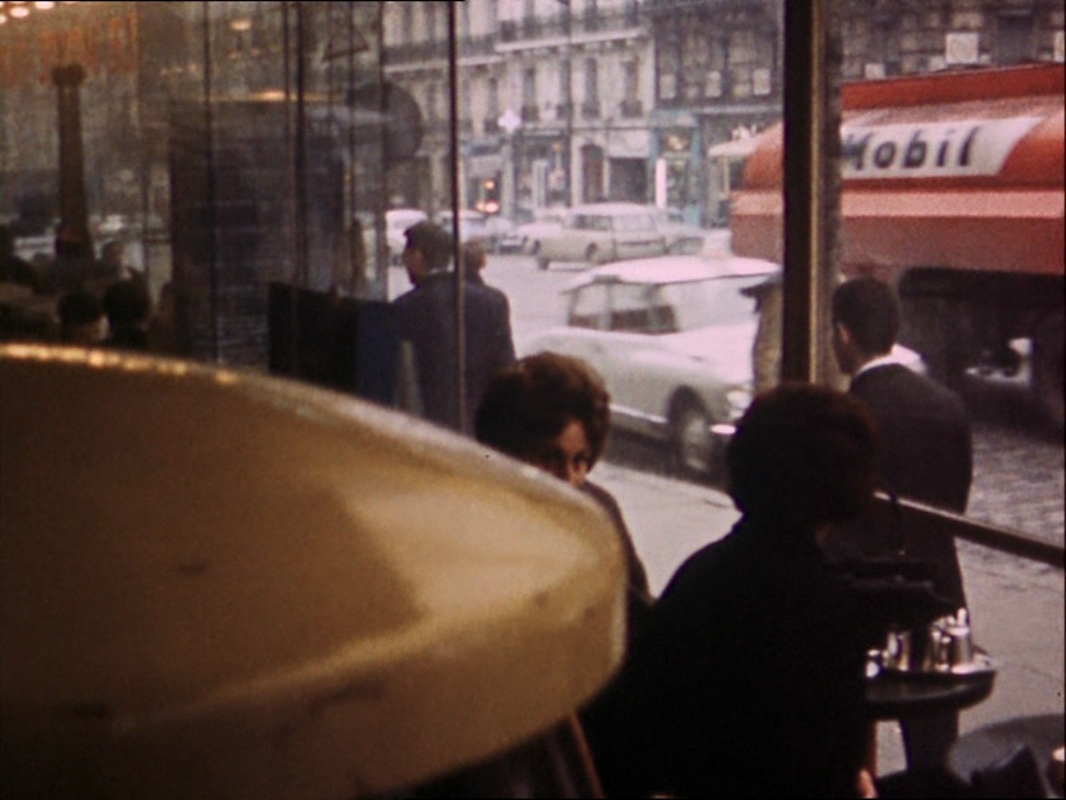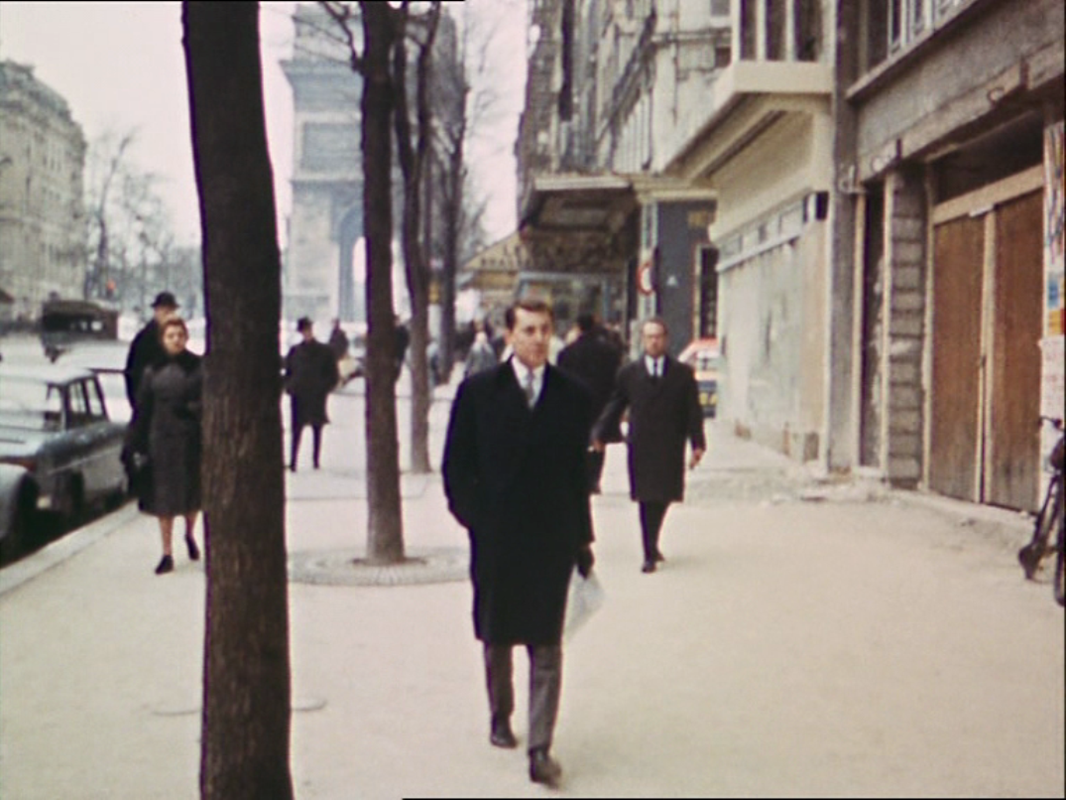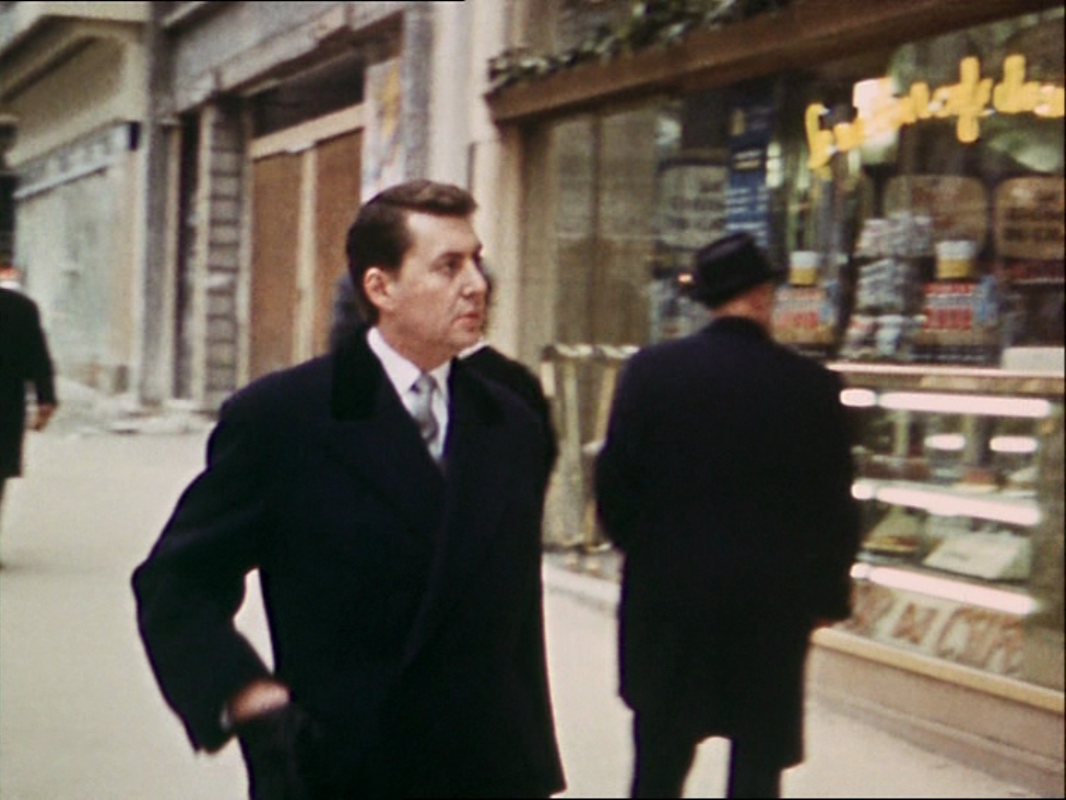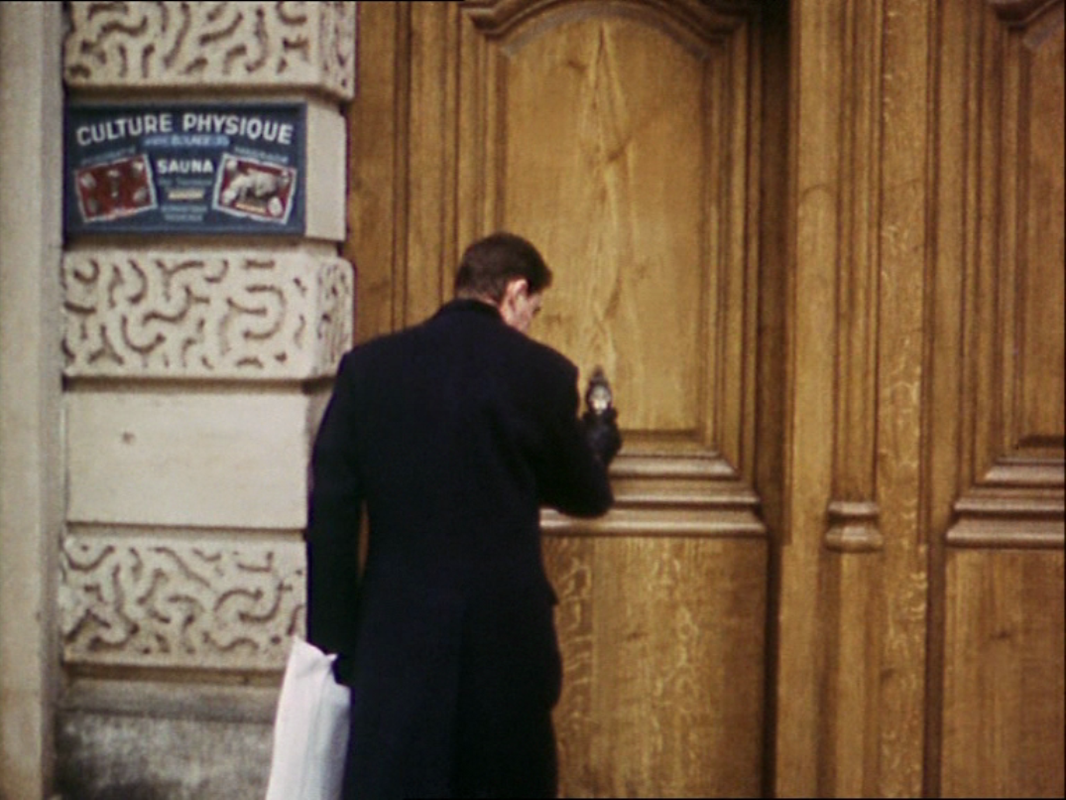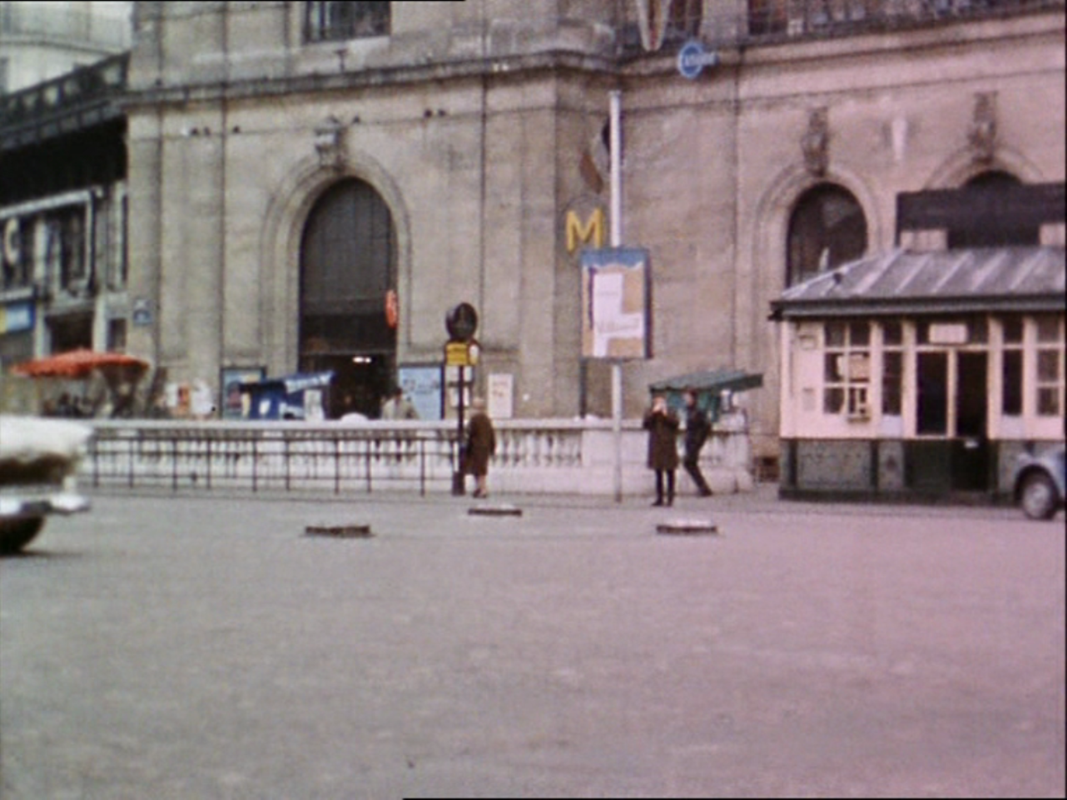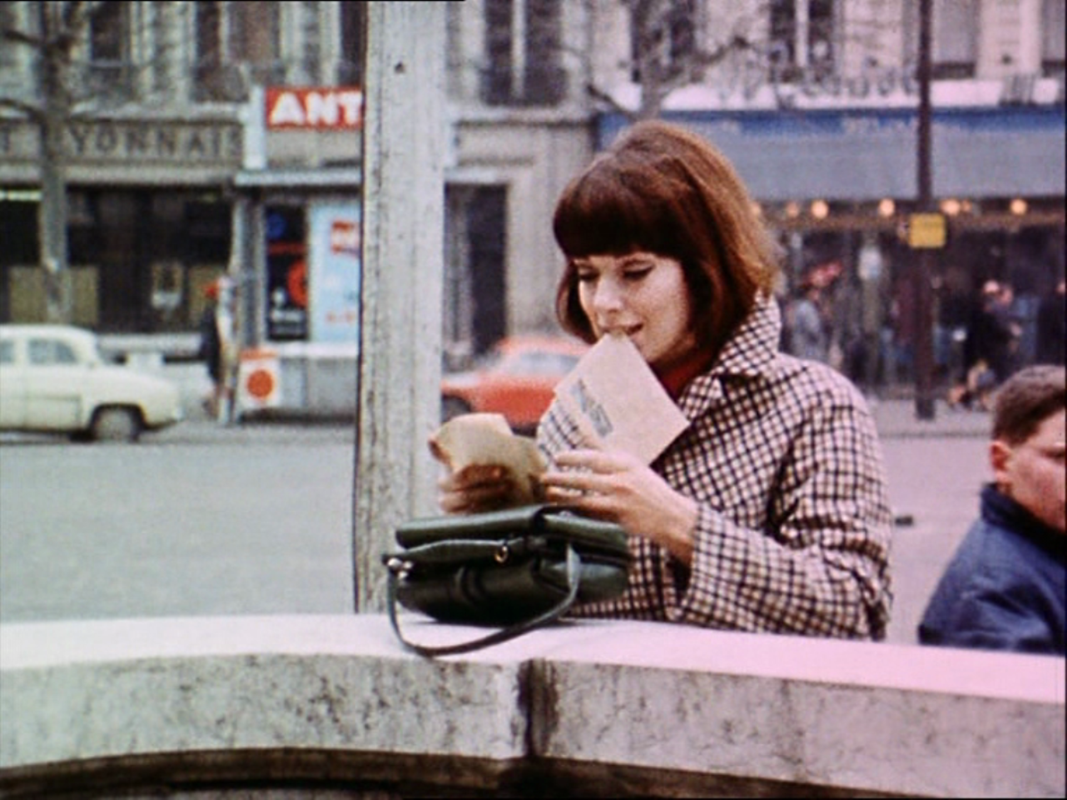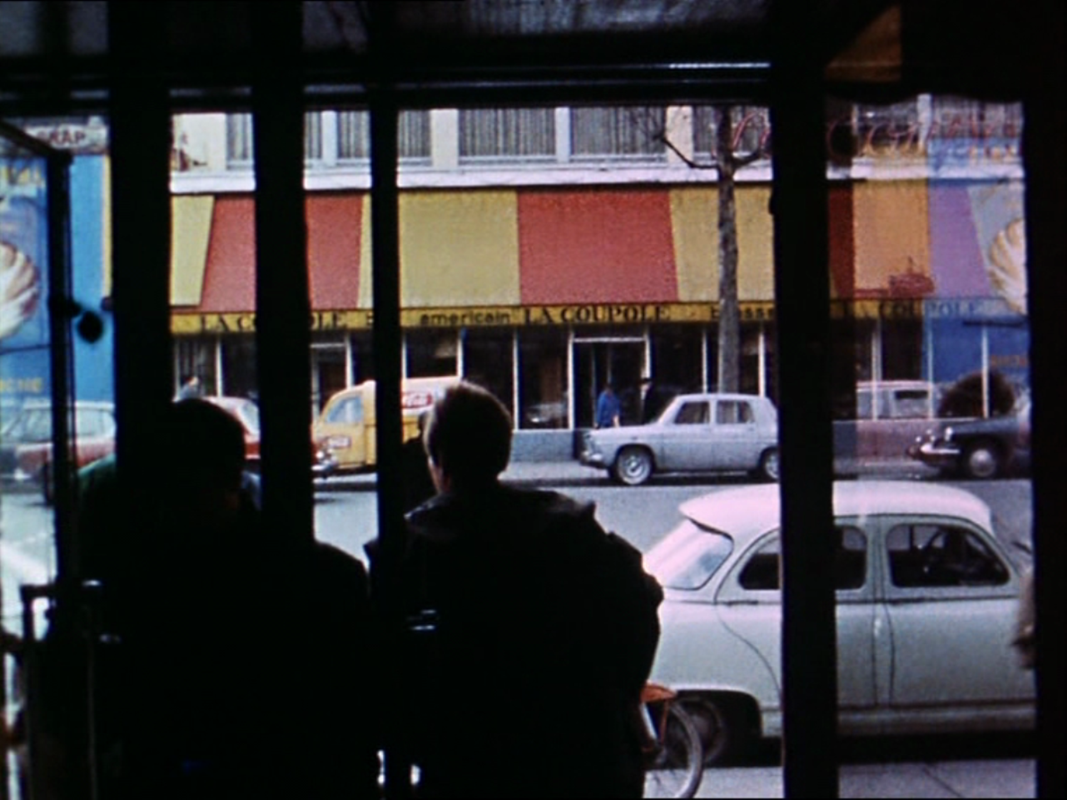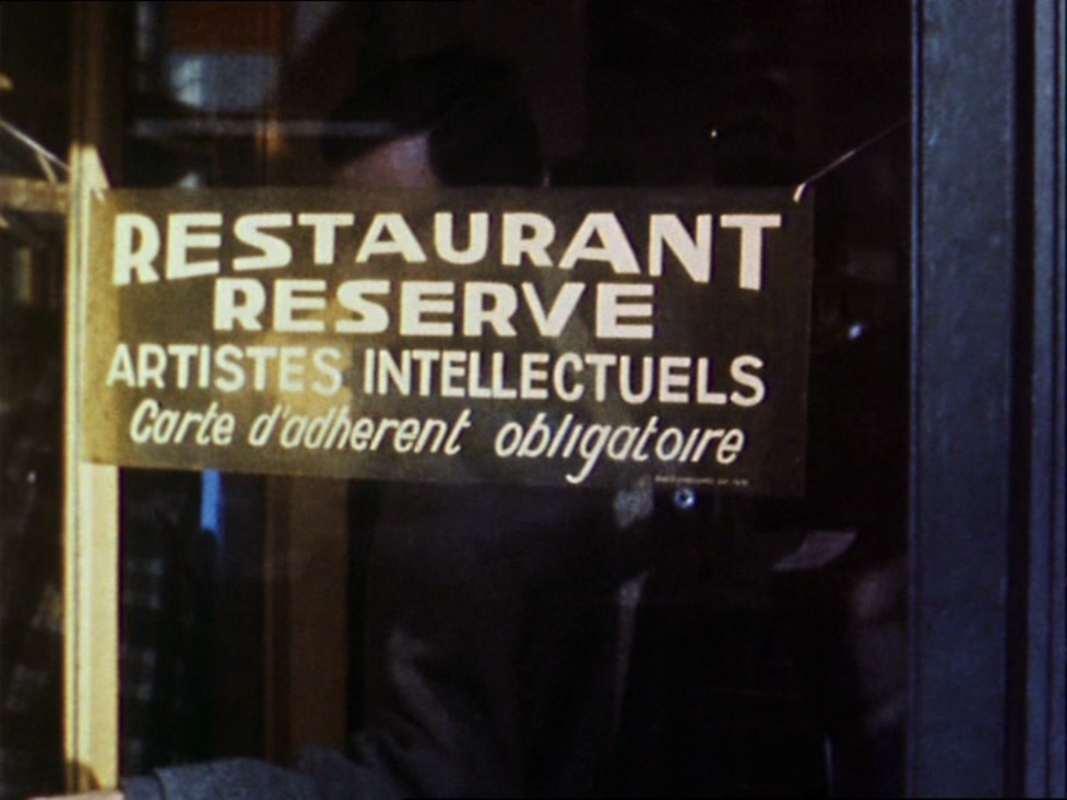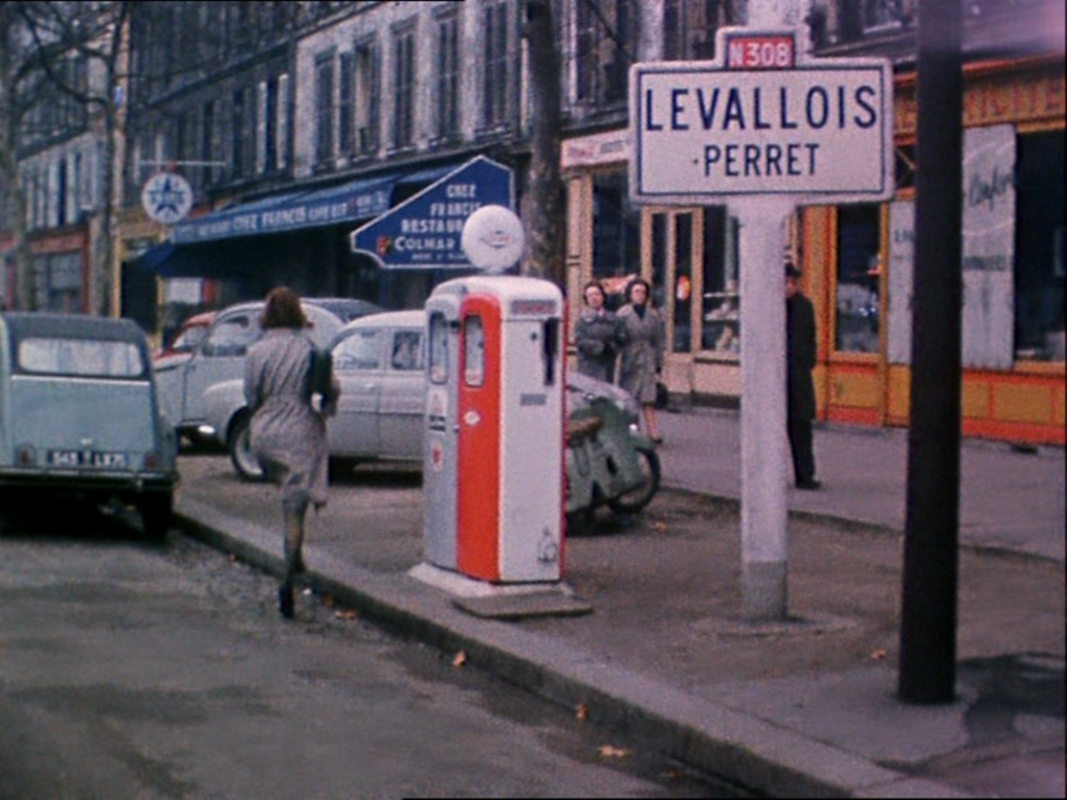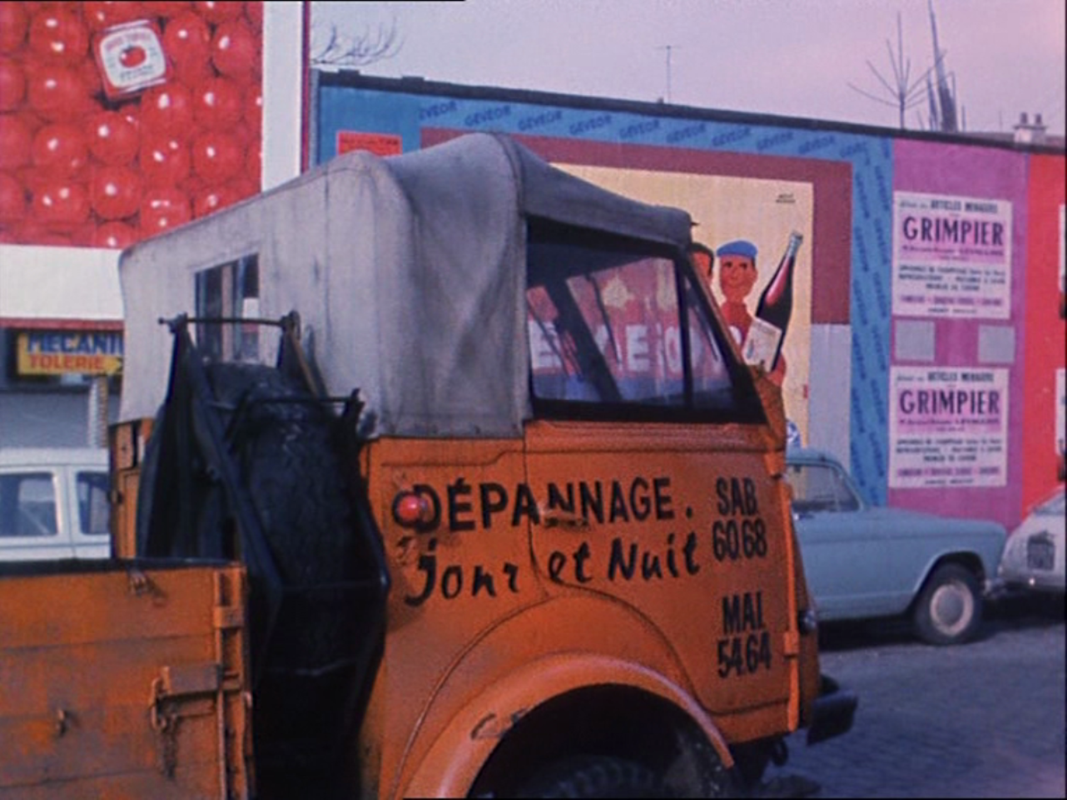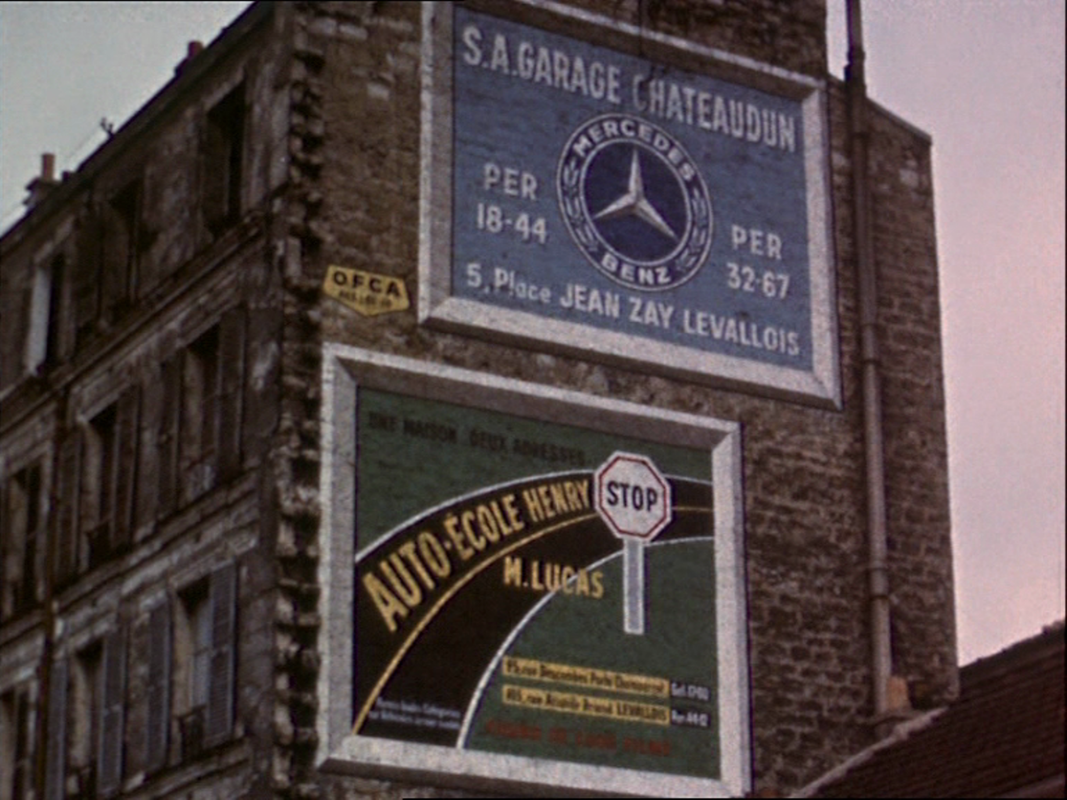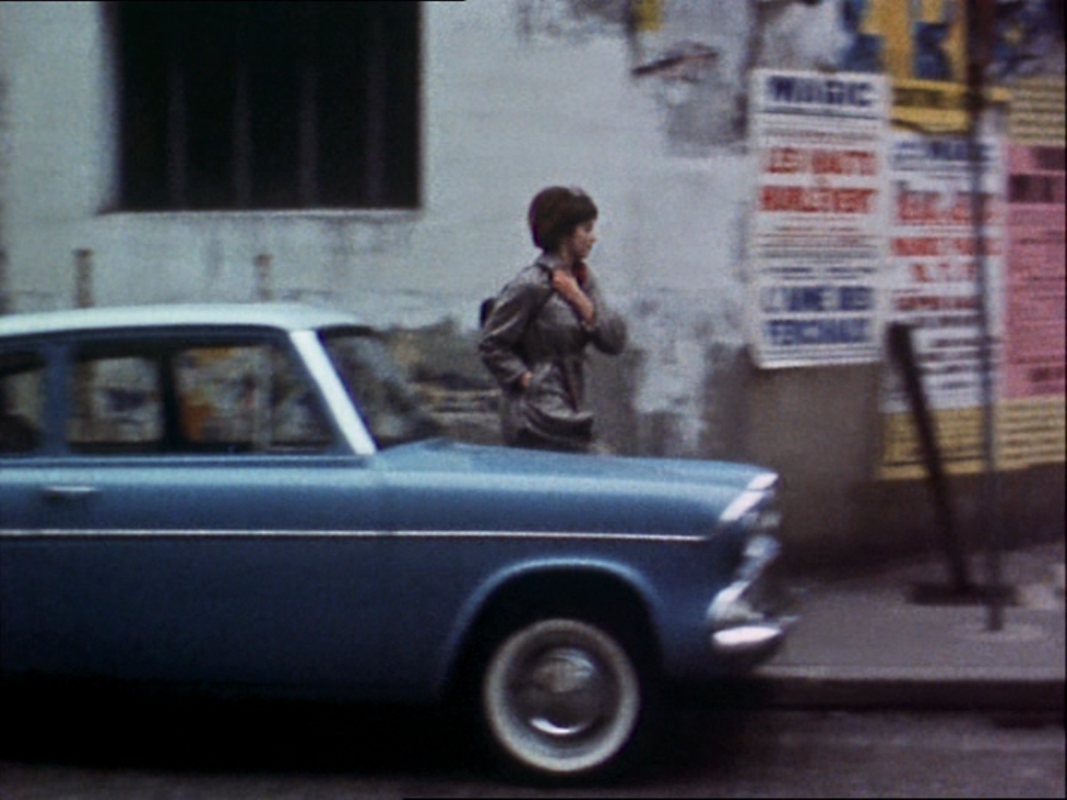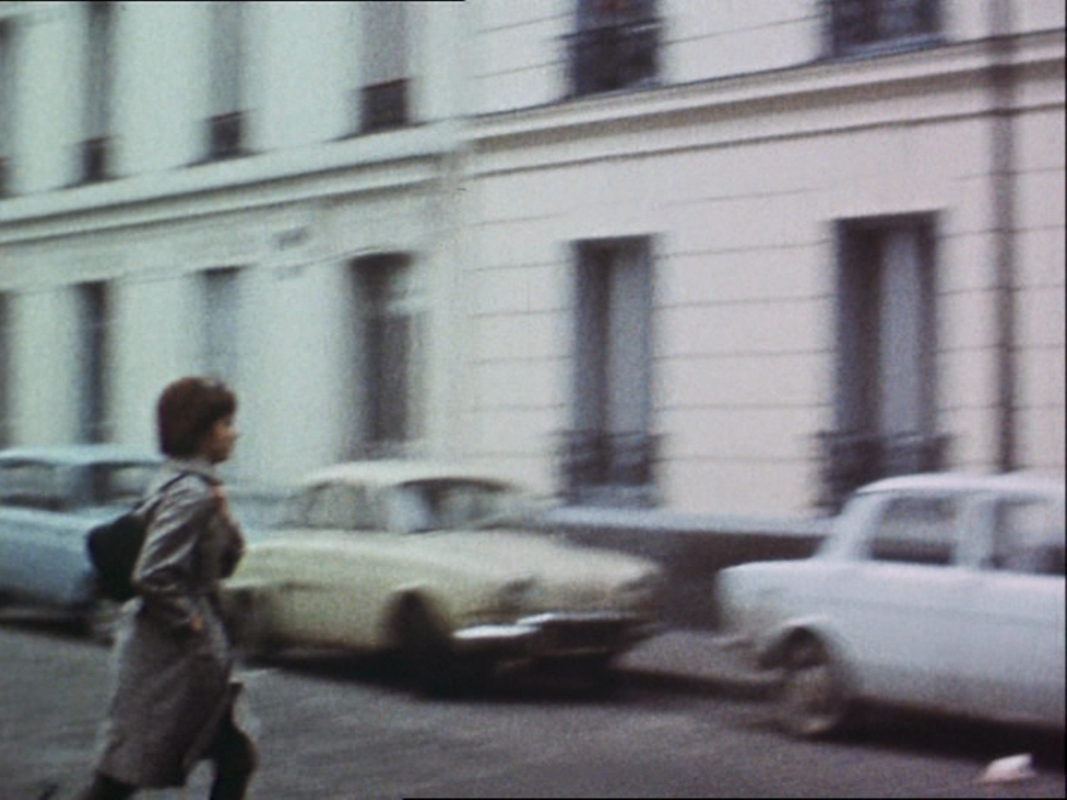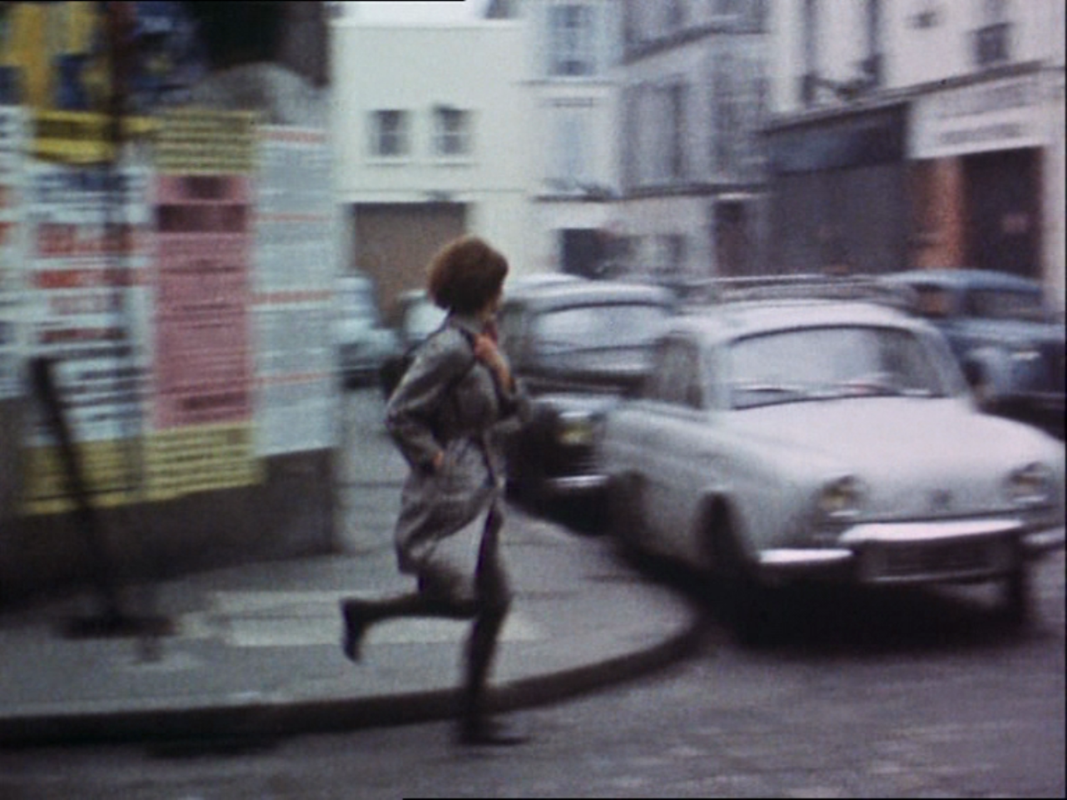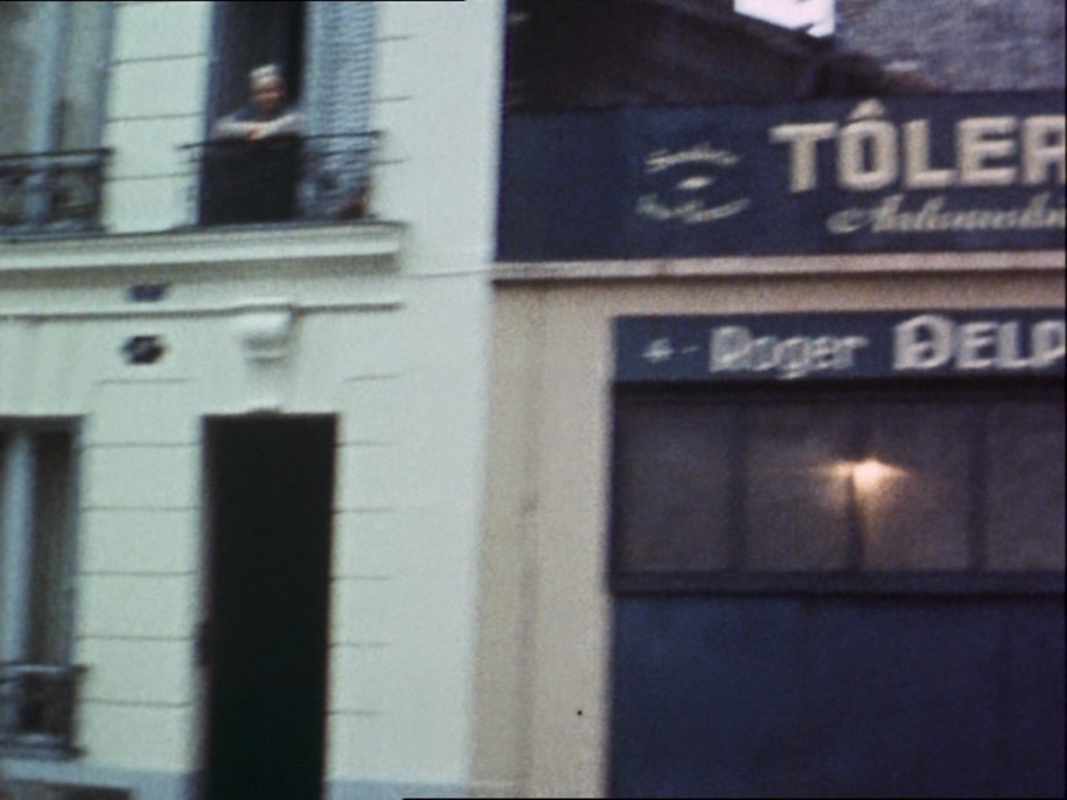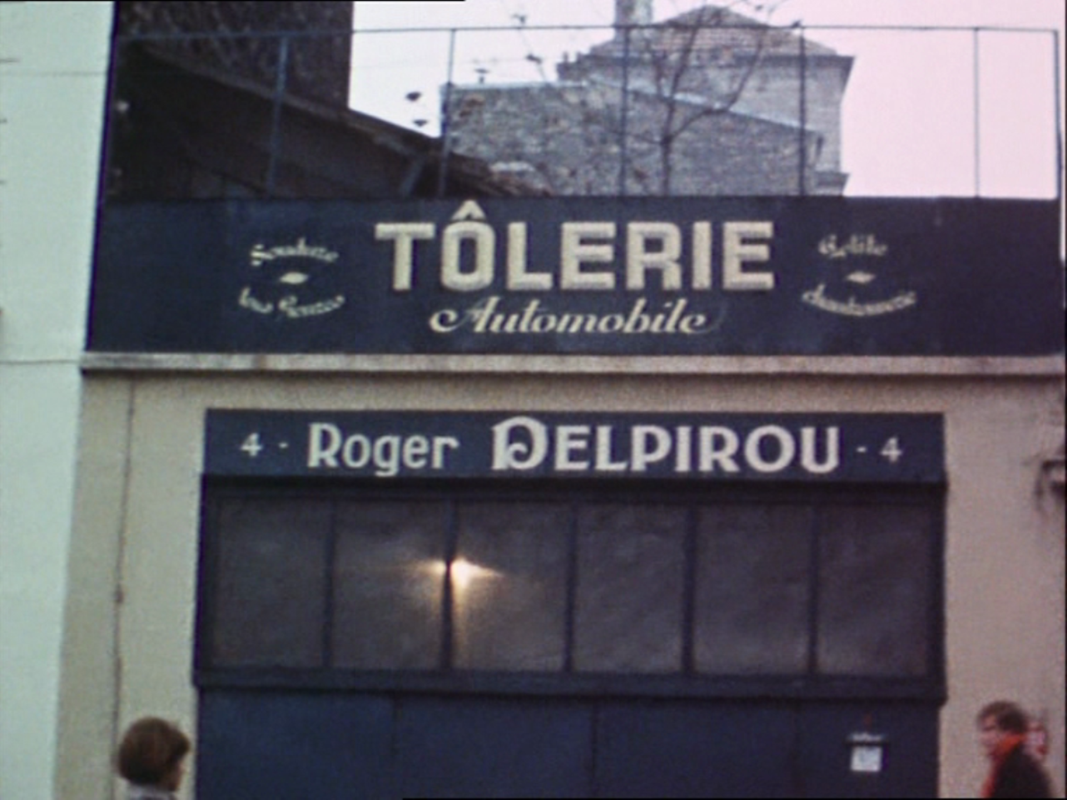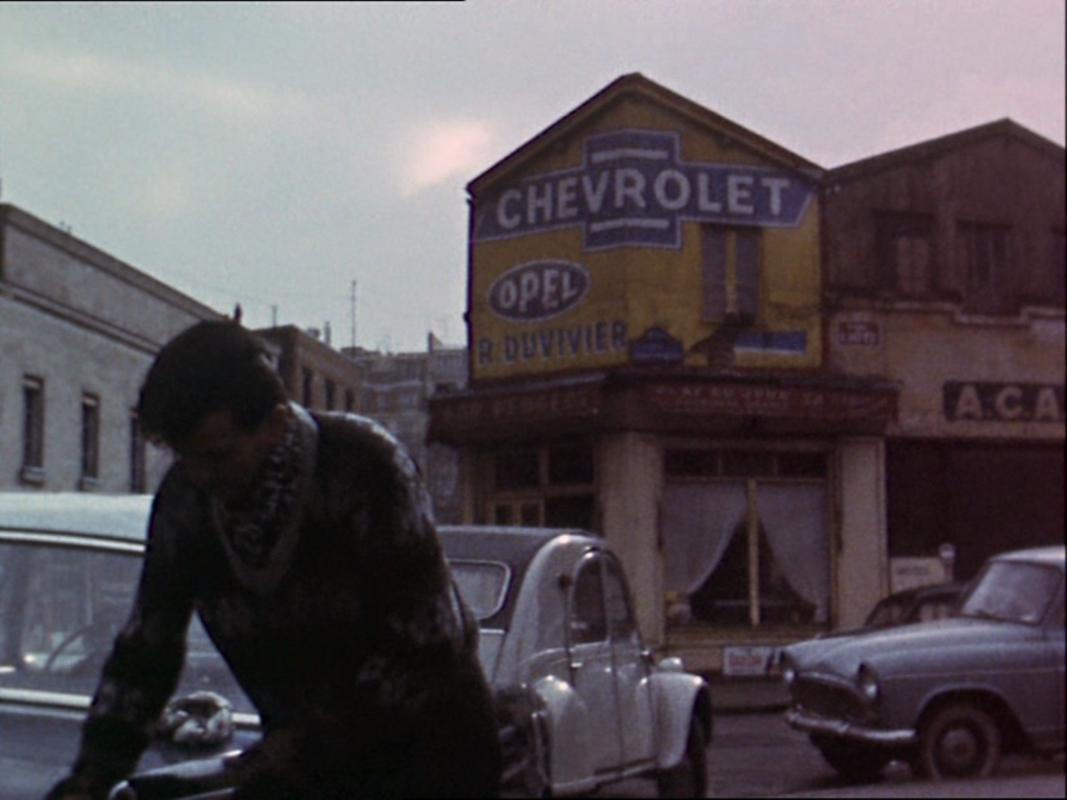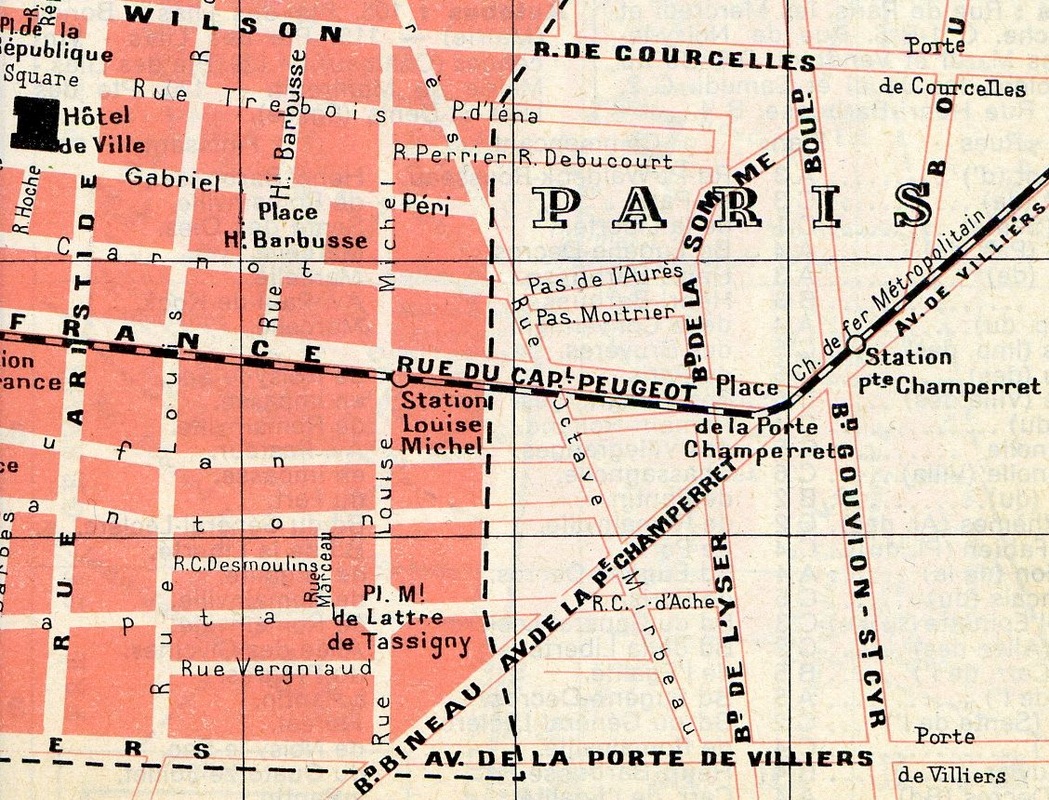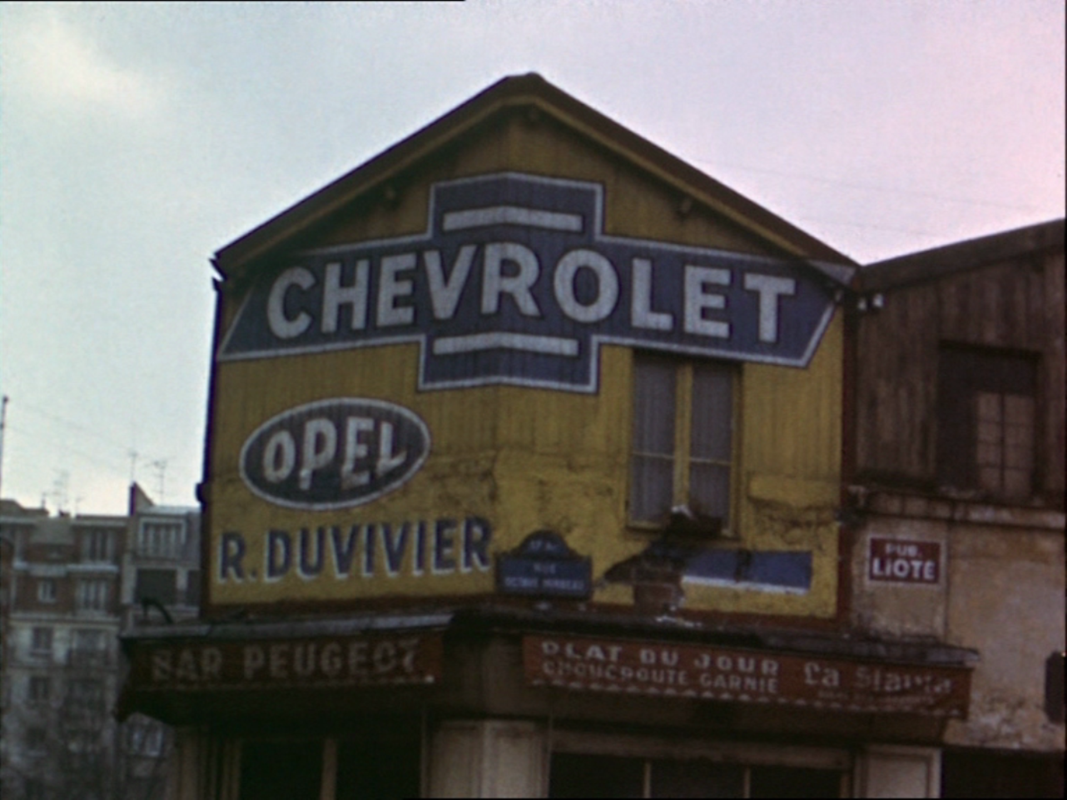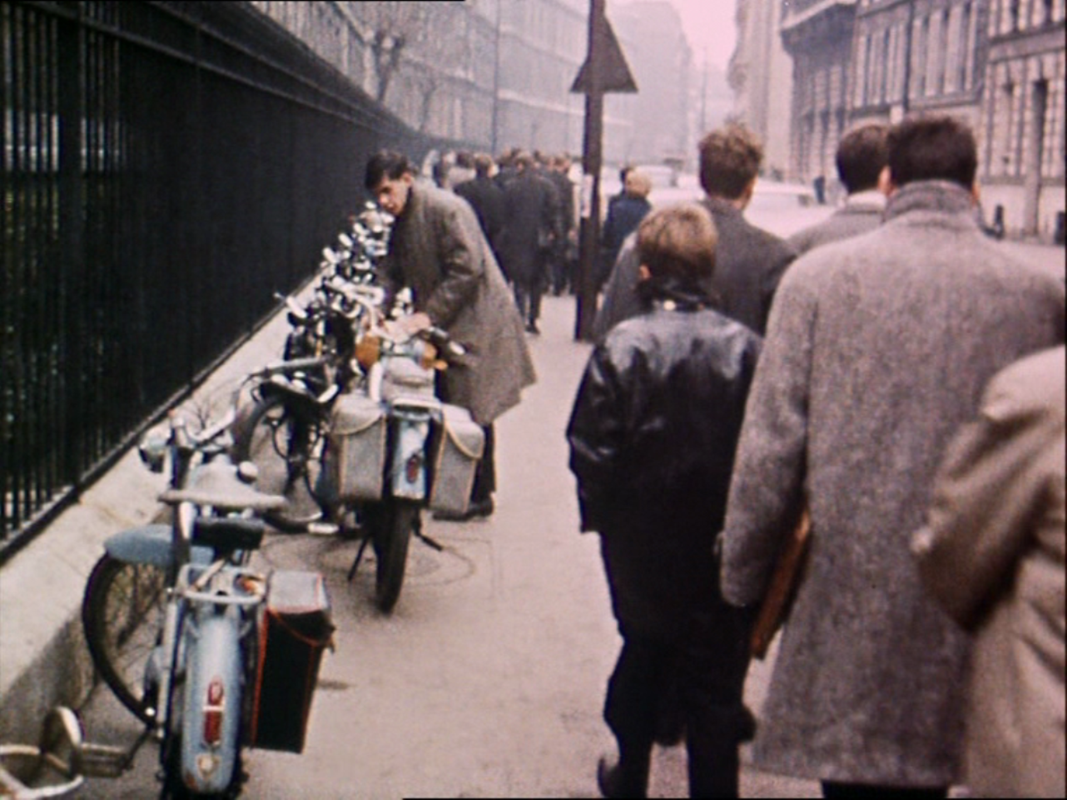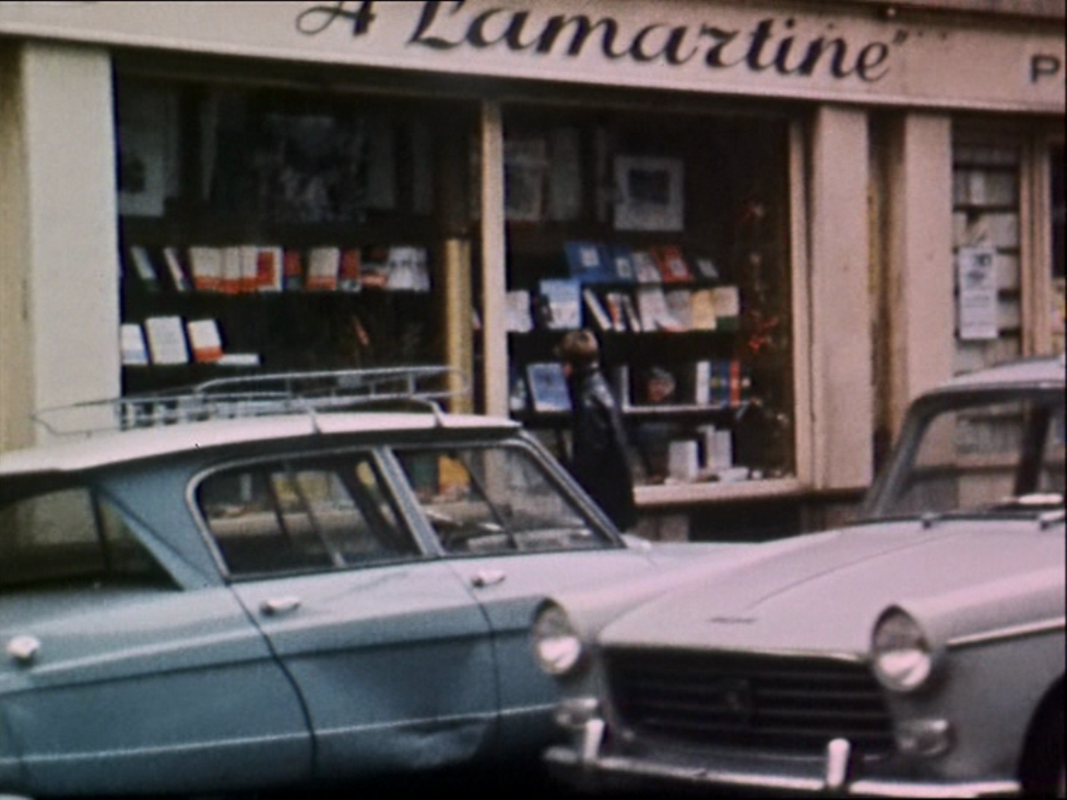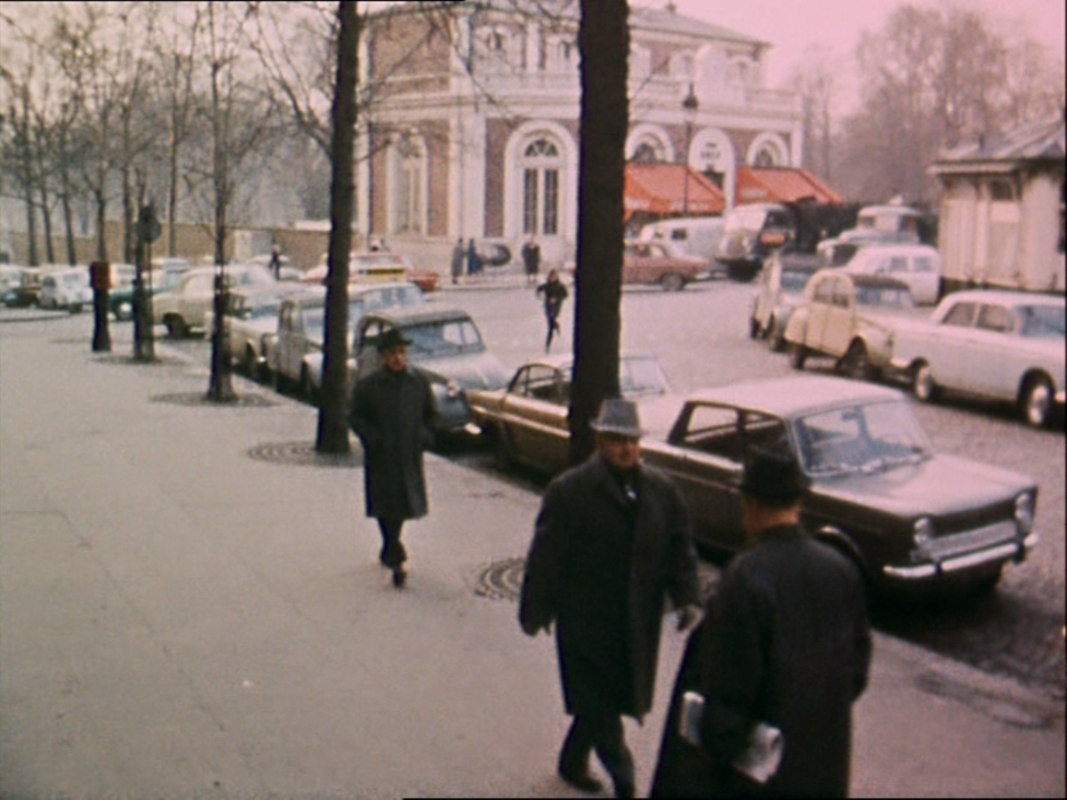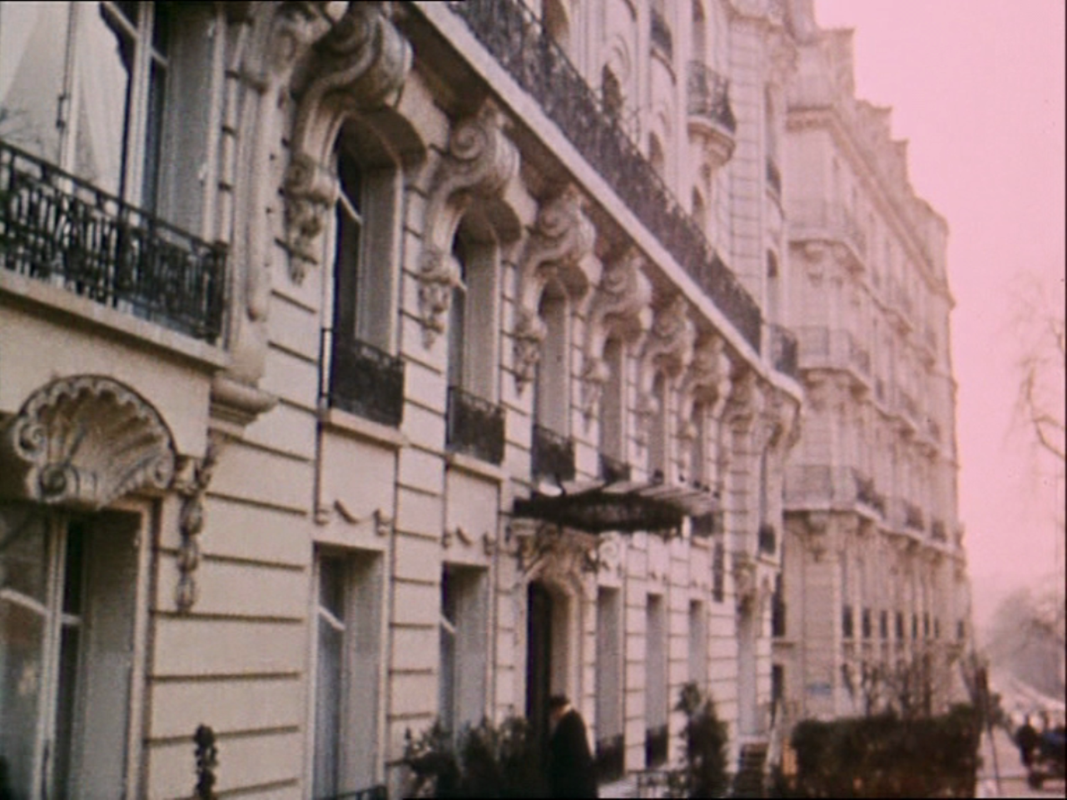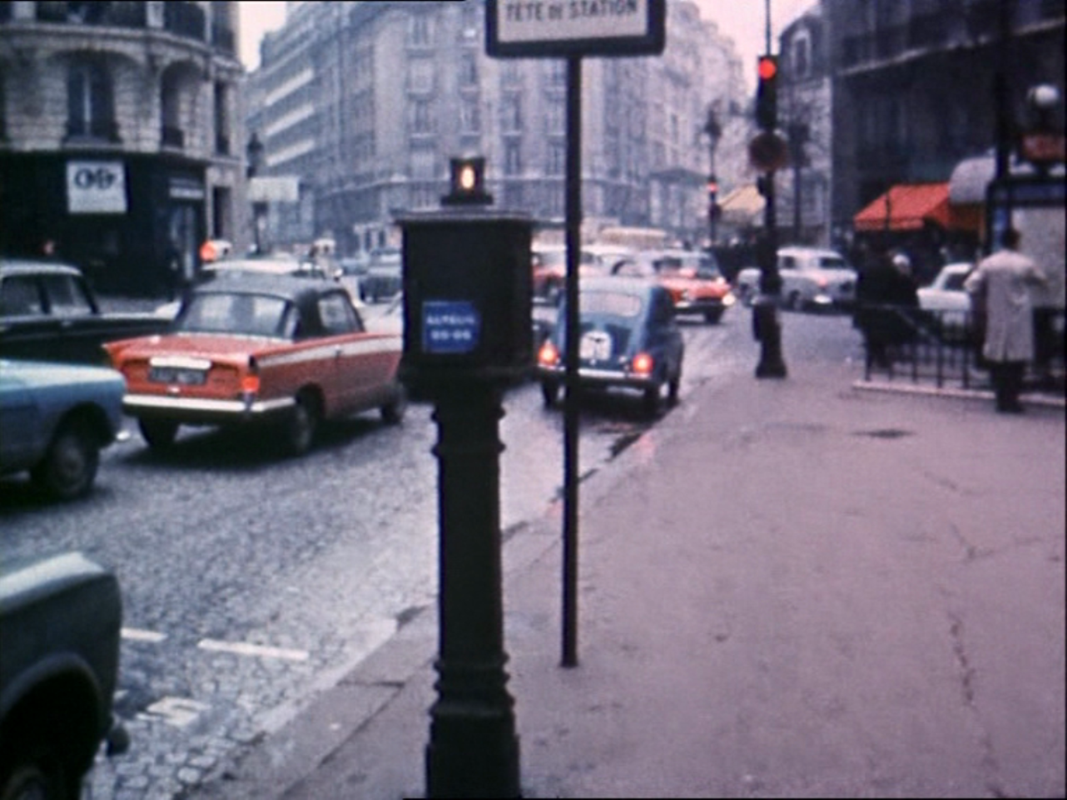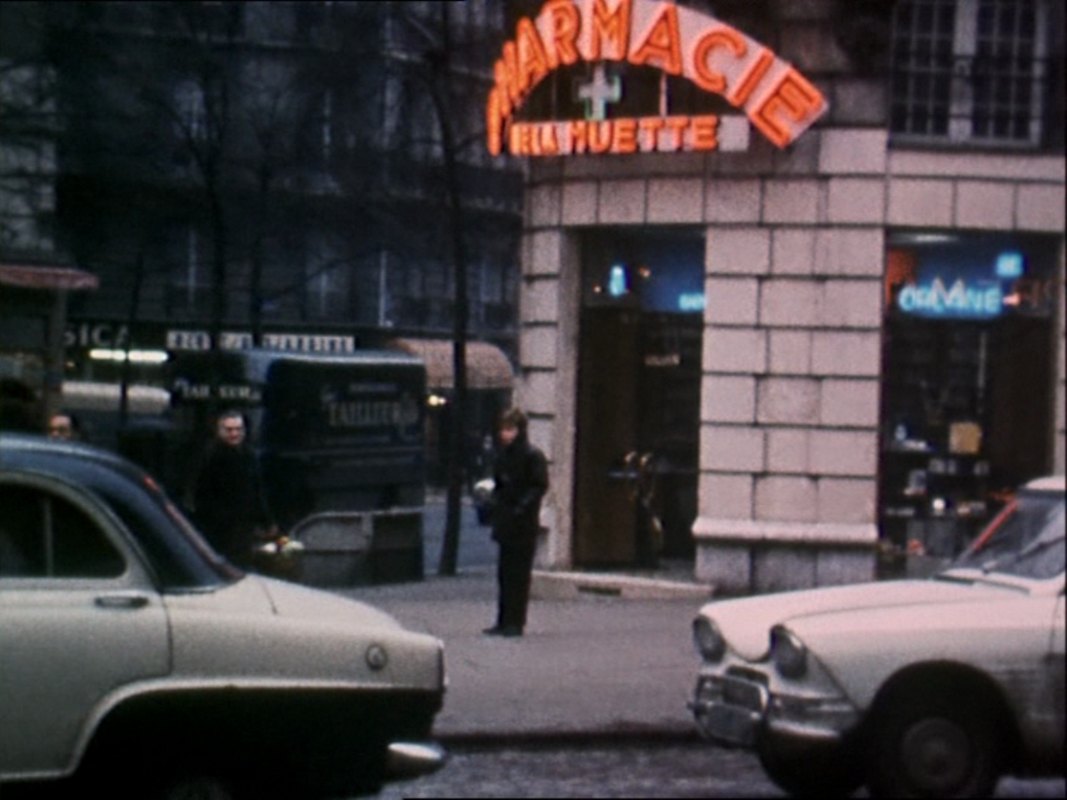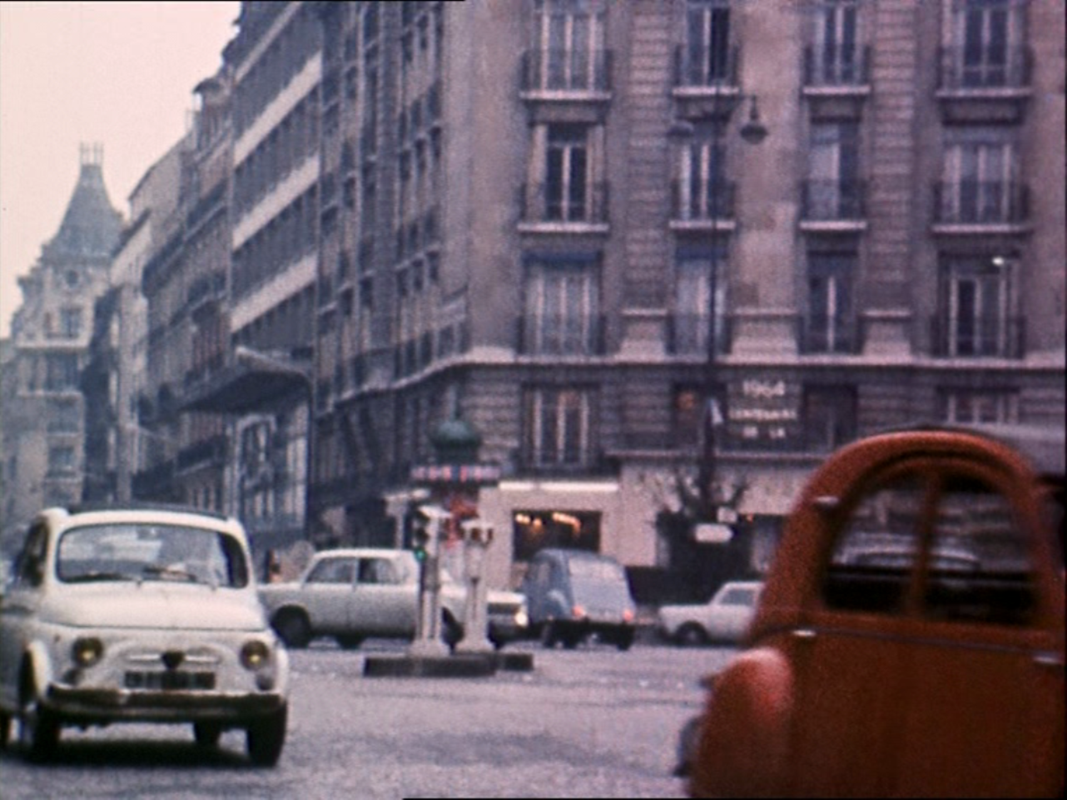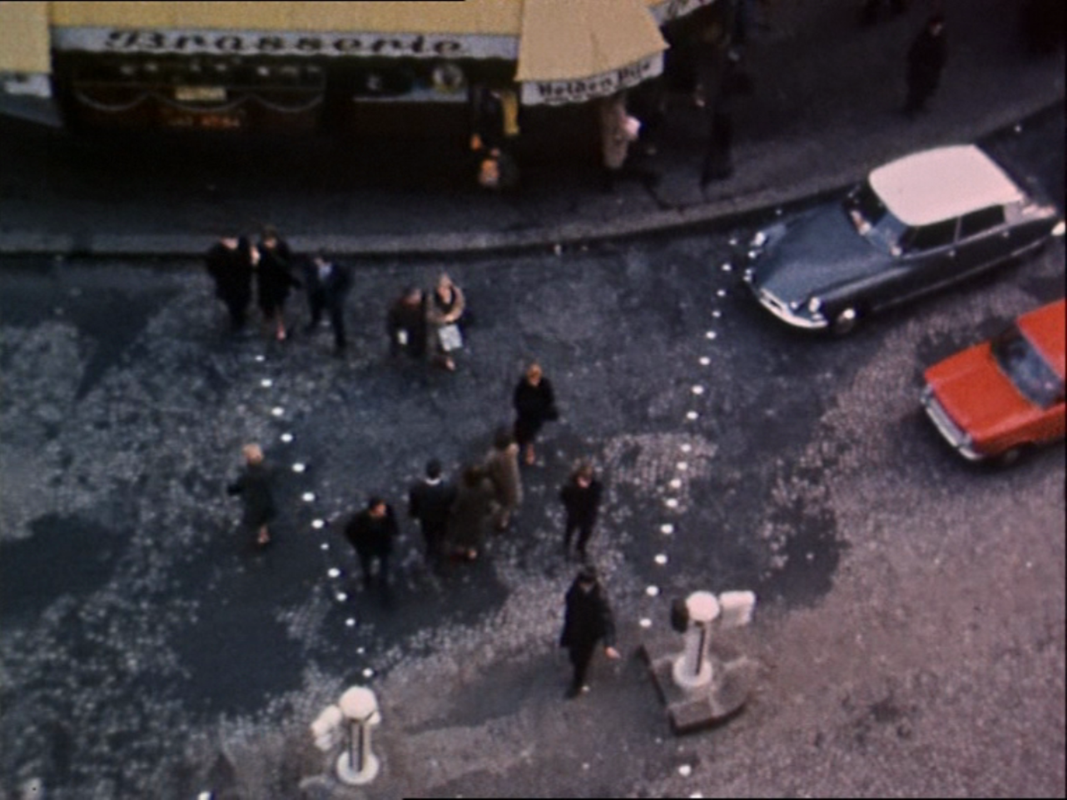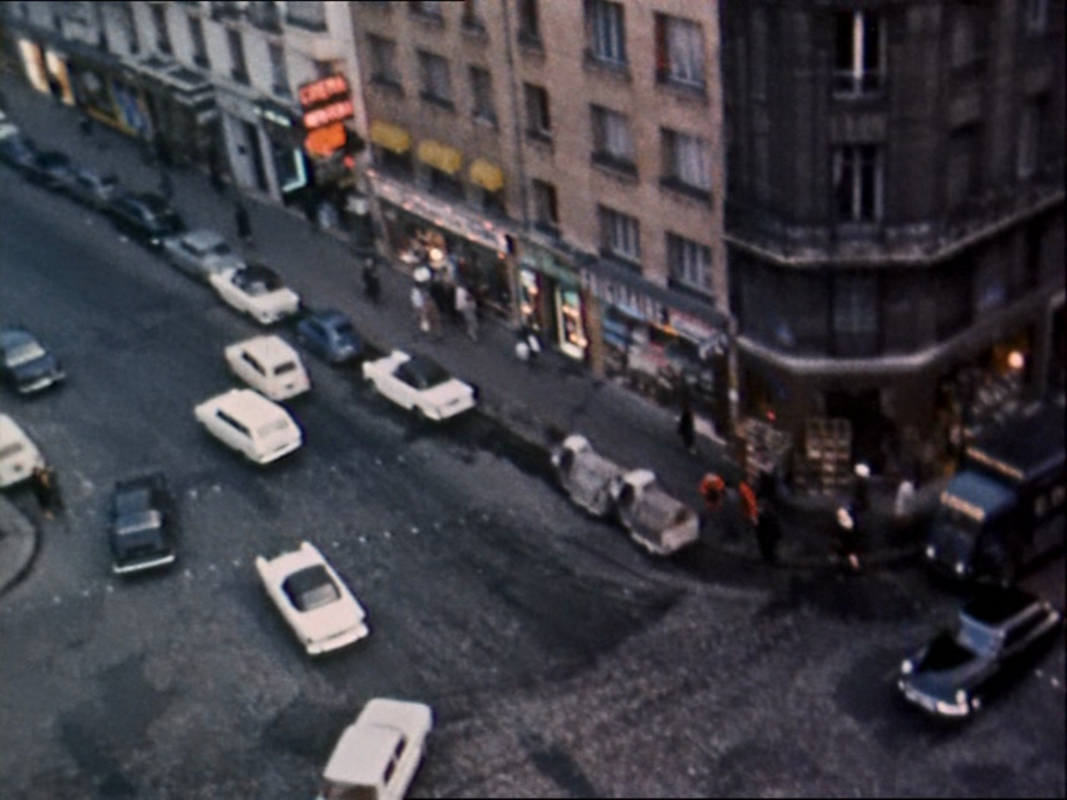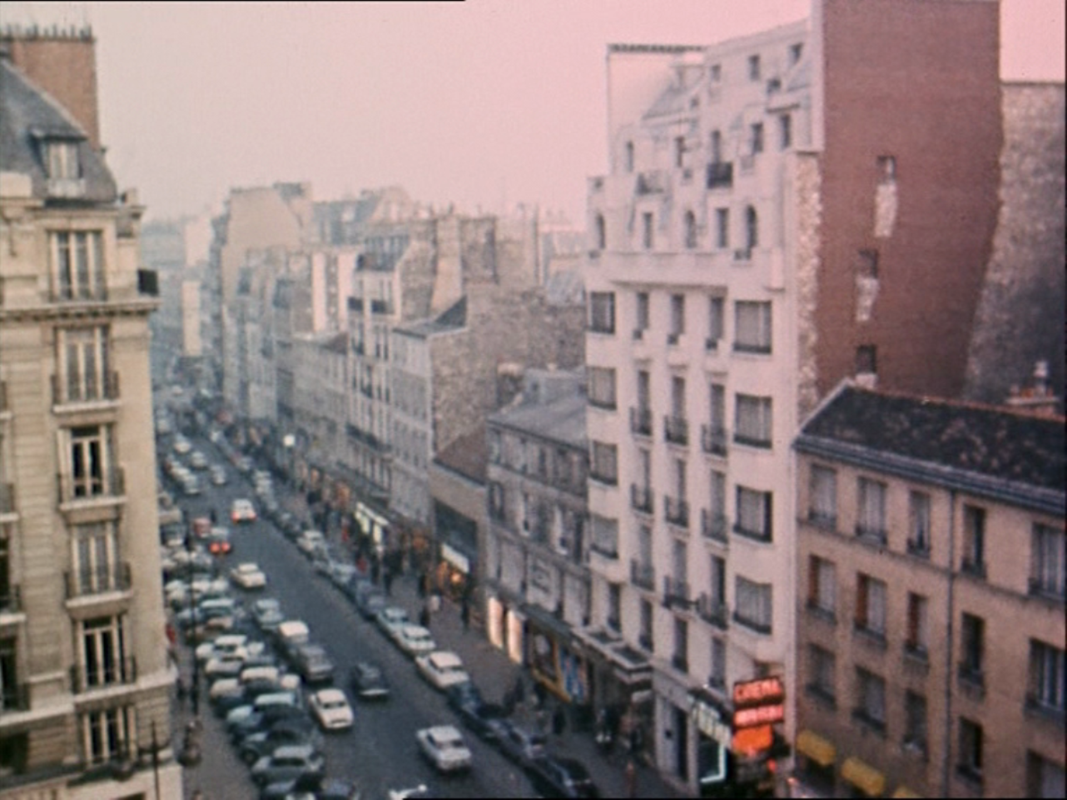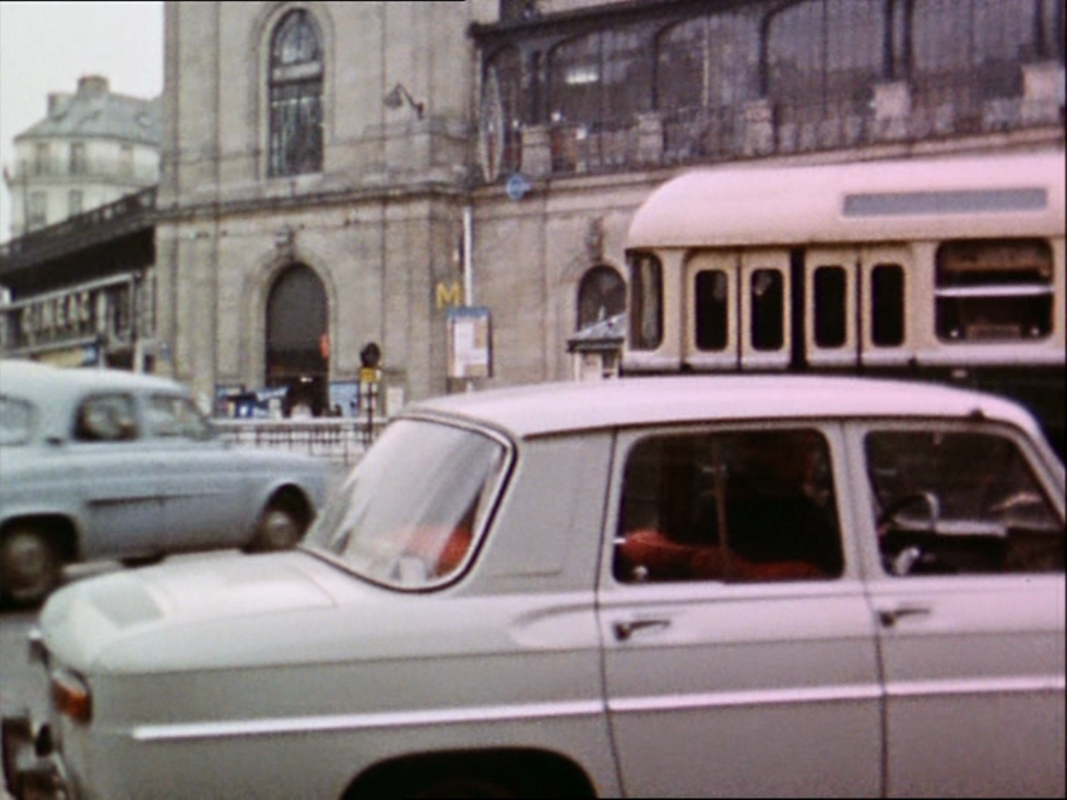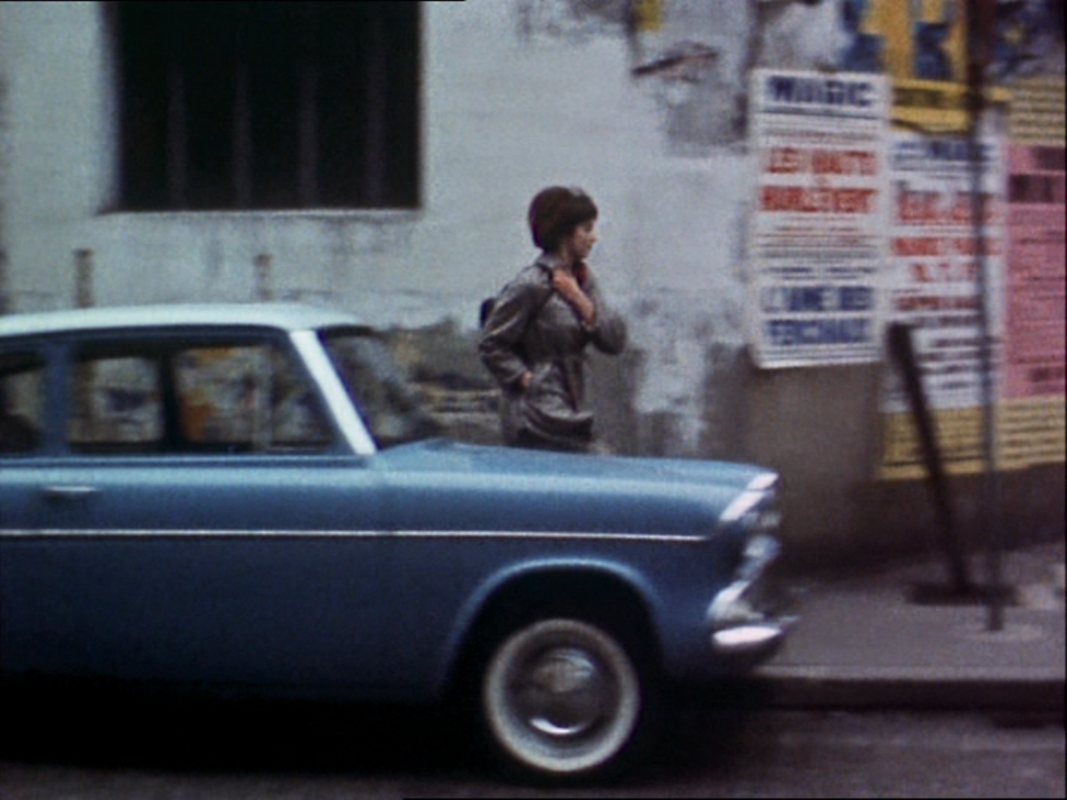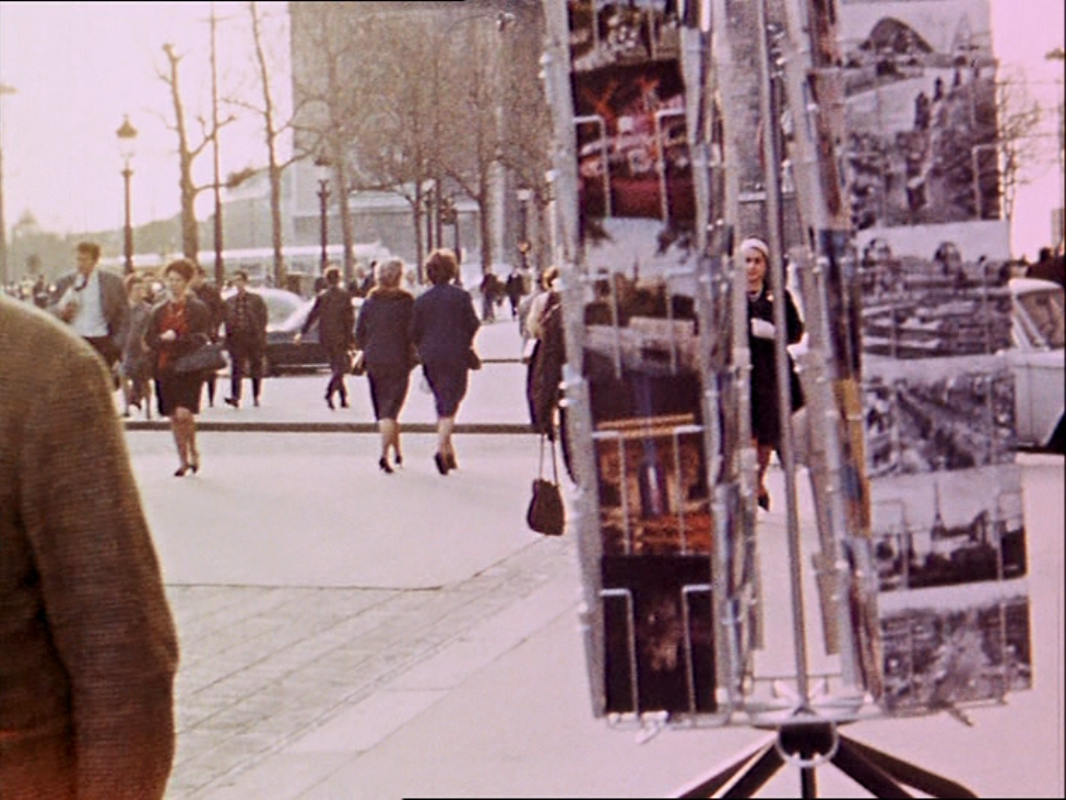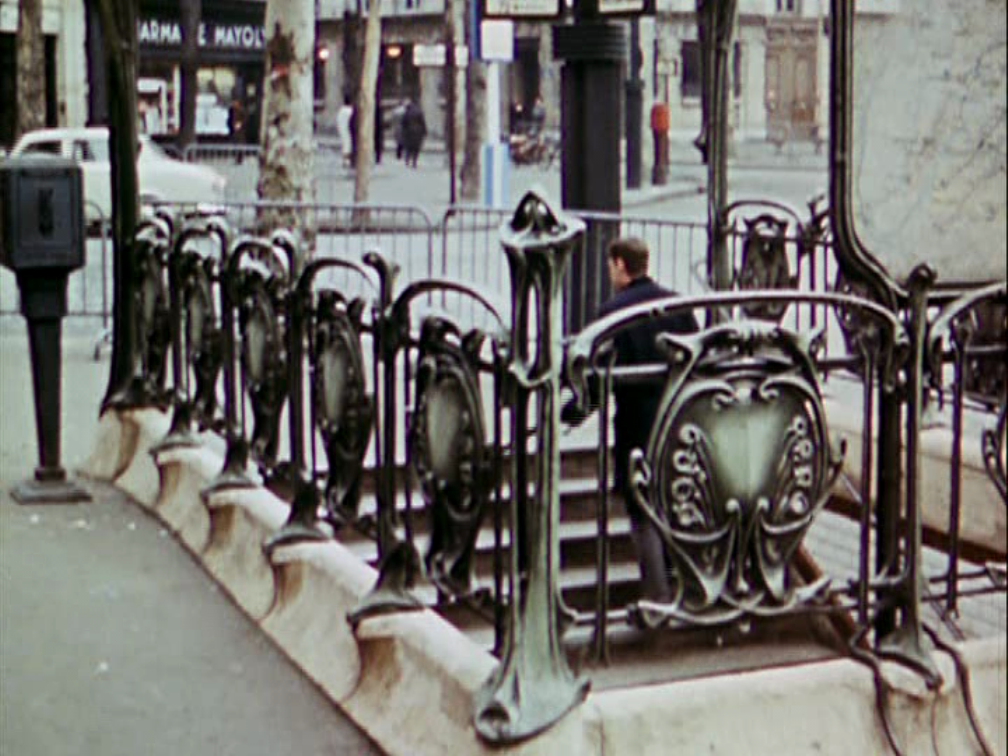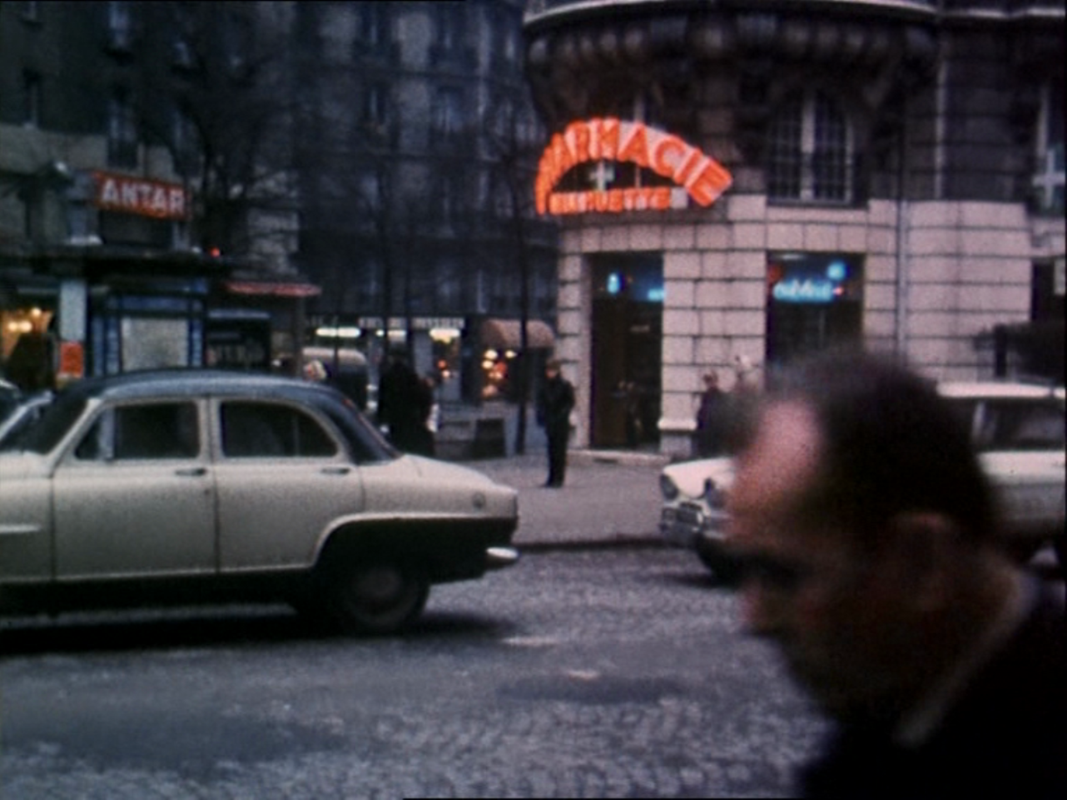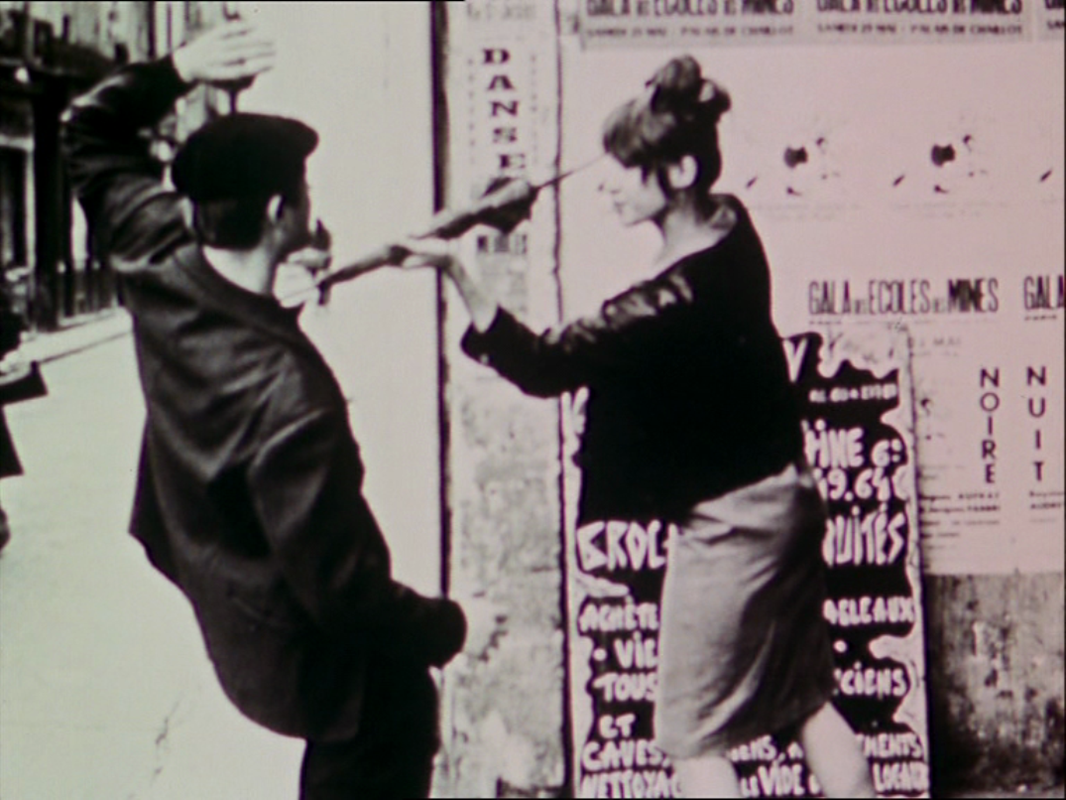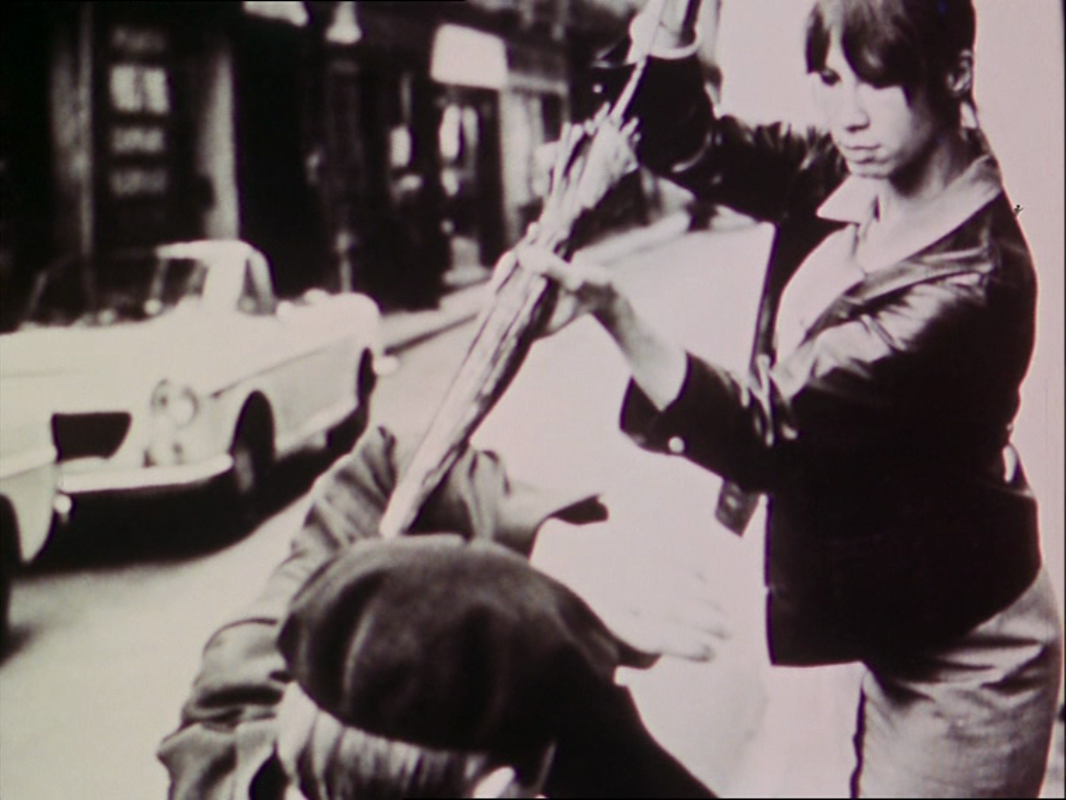a partial view: the Paris of Paris vu par
The eight locations of the 1965 New Wave sketch film Paris vu par are plotted on the map above. We can see from this that the view of Paris offered by the film is, topographically speaking, partial. Nothing east of the north-south axis formed by the boulevards de Strasbourg, de Sebastopol, du Palais and Saint Michel is of interest, apparently, to the six filmmakers assembled by Barbet Schroeder. On the other hand, there is an even spread each side of the west-east axis formed by the avenue des Champs Elysées and the rue de Rivoli: four north, four south.
Applying the more common rive droite-rive gauche distinction, the film appears imbalanced, with six districts to the north and two to the south. The opposition here is a traditional one, setting the intellectual and artistic milieux to be found south of the river against a variety of less bohemian locales to the north. The one sketch to comprise two locations, Godard's 'Montparnasse et Levallois', acknowledges the pertinence of this distinction by taking its protagonist from an artist's studio on one side of the river (south of course) to a car-repair shop on the other (north). At the same time Godard's film complicates this conventional opposition by signalling that his protagonist has crossed another line, going from Paris itself into its immediate banlieue, at Levallois-Perret. We will see that this last move is even more complicated, in the section of this post devoted to that particular sketch.
The selection of arrondissements visited by the film was always going to be partial - this isn't the trivially completist Paris je t'aime (2006). Paris vu par films in the 2e, 6e, 8e (briefly), 10e, 14e, 16e, 17e and 18e, with a brief moment beyond the city limits. The New Yorker dvd of the film includes a neat graphic representation of this distribution, though it omits the opening in Montmartre, inaccurately adds the 1e arrondissement to the settings for 'Rue Saint Denis', places 'Place de l'Etoile' in the 8e when it is chiefly in the 16e, and overall gives a false impression that the film's locations are contiguous:
Also missing from Paris vu par is the city's geographical centre, the islands in the middle of the Seine. The Seine too, come to think of it, is missing. The closest we get is a view of the Institut de France from the pont des Arts; we know the river is beneath, but we don't see it. This must be the only cinematic portrait of Paris so disdainful of the city's principal water feature.
One might argue that whatever is missing from the plotted topography of the city is present, actually or emblematically, in the panoramic view with which the film's credit sequence closes:
One might argue that whatever is missing from the plotted topography of the city is present, actually or emblematically, in the panoramic view with which the film's credit sequence closes:
The 9e arrondissement occupies the middle ground, the Seine may just be discernible further back, and in the distance are two otherwise absent landmarks, the Panthéon to the left, in the 5e, and the Eiffel Tower to the right, in the 7e.
This, the opening shot of the film, is taken from Montmartre, somewhere in front of the Sacré Coeur. The shot begins angled downwards, towards a grocery at 37 rue Gabrielle, 18e:
This, the opening shot of the film, is taken from Montmartre, somewhere in front of the Sacré Coeur. The shot begins angled downwards, towards a grocery at 37 rue Gabrielle, 18e:
The shot tilts up towards the panorama over Paris, showing in the midground the church of Saint Jean de Montmartre, on the rue des Abbesses:
The one-shot credit sequence finishes with the film title and a list of the participating filmmakers, each responsible for one of the six sketches to follow. Given in alphabetical order, this list doesn't correspond to the running of the episodes in the film as it stands: 'Saint Germain des Prés' (Jean Douchet); 'Gare du Nord' (Jean Rouch); 'Rue Saint Denis' (Jean Daniel Pollet); 'Place de l'Etoile' (Eric Rohmer); 'Montparnasse et Levallois' (Jean-Luc Godard); 'La Muette' (Claude Chabrol).
|
Curiously, the rolling end credits do not list the sketches in either of these two orders, reversing the positions of the sketches by Pollet and Douchet. I suspect that this difference points to a change in thinking about the running order, after the composition of the end credits. A Japanese dvd of the film actually has the sketches in the order of the end credits, suggesting either that the Kinokuniya company used an early print with that running order or re-arranged the film to match it.
|
(An appendix to this post discusses differences between the dvd editions that are less relevant to a topographical reading of the film.)
1/ 'Saint Germain des Prés' - 6e
Douchet's sketch is either a documentary that tends towards the fictional or a fiction that tends towards the documentary. It begins as documentary, thirty shots showing different parts of the area around the boulevard Saint Germain. The district is described by an authoritative male voice-over, naming places that the shots illustrate: the église Saint Germain des Prés, the Institut de France, the école des Beaux Arts, the rue du Dragon, the boulevard Saint Germain, the café de Flore, the rue Saint Benoît, the square de la rue de l'Abbaye and an apartment building at 13 rue de Seine, overlooked by the dome of the Institut de France:
A female voice interrupts the male narrator's flow with the names of places shown or of people associated with those places: the école des Sciences Politiques (56 rue des Saints Pères), the académie Julian (31 rue du Dragon), Jean-Paul Sartre (frequenter of Le Bonaparte), Picasso's bust of Apollinaire (on the rue de l'Abbaye, though actually it is a bust of Dora Maar), Eugène Delacroix (his studio on the rue de Furstemberg), Jean Racine (his house on the rue Visconti):
In the course of documenting the district the male narrator introduces the fiction that will follow, a romantic liaison that begins at the café de Flore and ends in an apartment on the rue de Seine. He tells of the woman and man driving together from one to the other, and the camera follows the trajectory of that journey. In fact, from the eighth of this sequence's thirty shots, showing the hôtel du Pas de Calais where the woman lives, the film has traced a coherent trajectory around the arrondissement - down the rue des Saints Pères, up the rue du Dragon, along the boulevard Saint Germain, up the rue Saint Benoît, along the rue de l'Abbaye, up the rue de l'Echaudé and then up the rue de Seine:
The camera is retracing the woman's movements rather than representing them, since the events described by the narrator happen at night and the film shows us these streets in daytime.
The story that follows returns to two of the places shown in this preamble, the académie Julian on the rue du Dragon and the apartment on the rue de Seine:
The story that follows returns to two of the places shown in this preamble, the académie Julian on the rue du Dragon and the apartment on the rue de Seine:
2/ 'Gare du Nord' - 10e
Rouch's sketch opens with a shot that reverses two aspects of the film's opening shot, looking from Paris towards Montmartre and moving from a broad panoramic view to a small detail:
The shot also pans rather than tilts. The camera is hard to position, but it seems to be atop a high building near the junction of the rue Saint Quentin and the rue La Fayette. In its sweep west to east the pan moves from the Sacré Coeur to the window of an apartment on the rue La Fayette, passing the Gare du Nord on the way:
This document of a view already incorporates the fiction to follow, since the woman in the window upon which the shot closes is its protagonist:
After watering her plants and looking up to take in the view she closes the window. The following shot matches that action, giving behind her a counter shot out from the apartment:
Whereas in 'Saint Germain des Prés' topographical detail interested only the documenting narrators, not the fictional characters, in 'Gare du Nord' topography is central to the fiction and important to its characters. Odile complains to her husband about the construction of a building that she thinks will obscure the apartment's views of the Sacré Coeur and the Eiffel Tower. These views had been a factor in their choosing to live here. The apartment is on the seventh floor of a building at 156 rue La Fayette. We are shown the view of the Sacré Coeur, north-westerly, but not the view of the Eiffel Tower, which would be to the south:
Odile is right, when the seven-storey building goes up on the rue La Fayette it will block the view of the Sacré Coeur from their apartment.
From the other end of the apartment the view looks east onto the rue du Faubourg Saint Denis and towards the Gare de l'Est:
From the other end of the apartment the view looks east onto the rue du Faubourg Saint Denis and towards the Gare de l'Est:
Odile leaves the apartment to go to work, the camera following her down the corridor, into the lift and out into the street. In the lift a disguised cut enables a topographic sleight of hand, because the building from which she emerges onto the street is not the one we have seen her in hitherto:
This is the hallway of no. 1 rue de Dunkerque, two streets away from the rue La Fayette. Odile turns right into the rue de Dunkerque, then left into the rue d'Alsace, and then right into the rue La Fayette, eventually reaching the viaduct that crosses the tracks behind the Gare de l'Est:
The last shot of the sketch, the fourth, begins at an angle down towards Odile on the bridge, then tilts further down to show the man who has just thrown himself from the bridge, then tilts back up, zooming out, to finish on a panorama northwards, centred on the Sacré Coeur:
This last shot seems to be from atop a building on the rue du Faubourg Saint Martin.
3/ 'Rue Saint Denis' - 2e
Pollet's sketch begins with five views of the area, beginning with the porte Saint Denis, viewed from the south side of the boulevard Bonne Nouvelle, looking north east:
The next is a view from the rue d'Aboukir of the rue Saint Denis and the boulevard beyond:
We are looking in the same direction as in the previous shot, but the corner of the rue d'Aboukir blocks our view of the porte Saint Denis. The third and fifth shots are different views of two clothing businesses and a hotel on the rue Sainte Foy, a street parallel to the rue d'Aboukir:
This same locale had previously appeared in Godard's Une femme est une femme (1961):
Between the two views of the rue Sainte Foy in Paris vu par is a close-up of the entrance to a hotel on the corner of the rue d'Aboukir and the rue Saint Denis:
The implication is that the room in which the rest of the sketch plays out is in this hotel.
4/ 'Place de l'Etoile' - 8e, 16e, 17e
Like Douchet's 'Saint Germain des Prés', Rohmer's sketch begins with a narrated description of the location accompanied by illustrative images:
These first twenty-two shots show the place de l'Etoile when visited on special occasions or by tourists. A second section documents its topography, 'meeting place of twelve large avenues', and how it is negotiated by pedestrians.
Though this section includes three right-to-left tracking shots around the Arc de Triomphe, the twenty-eight views are not arranged as an ordered circuit of the place de l'Etoile. A viewer who doesn't know the location perfectly can find this disorienting. To know exactly where we are we need to be able to read the angle from which we are viewing the Arc de Triomphe:
Or be able to read the signage:
At the end of this section attention is drawn to the disruption caused by work on the RER, the regional rail line, with illustrations documenting the place de l'Etoile as a building site:
This is the first of four sequences around which the sketch is organised, each showing views of and from the streets and pavements that circle the monument in the centre. The first sequence, merely documenting the place, follows no topographic order. The next three, following a fictional character's itinerary, are topographically exact.
The fiction insinuates itself into the documentary when the protagonist emerges from the métro exit near the avenue de Wagram - 'ETOILE' on the map below. He begins an anti-clockwise circuit as he heads for the avenue Victor Hugo, but is blocked by the building works at the avenue Mac-Mahon and has to go round the other way. Nine shots show him completing this orderly three-quarter circuit of the place de l'Etoile to arrive at the avenue Victor Hugo:
The fiction insinuates itself into the documentary when the protagonist emerges from the métro exit near the avenue de Wagram - 'ETOILE' on the map below. He begins an anti-clockwise circuit as he heads for the avenue Victor Hugo, but is blocked by the building works at the avenue Mac-Mahon and has to go round the other way. Nine shots show him completing this orderly three-quarter circuit of the place de l'Etoile to arrive at the avenue Victor Hugo:
The second time the protagonist has to reach the avenue Victor Hugo from the métro exit at avenue de Wagram he goes left from the métro exit straightway, crosses the avenue Wagram and is assaulted by a man before reaching the avenue Hoche. He runs from the scene, still clockwise, reaching the avenue Victor Hugo in fourteen shots. Three of these shots are cutaways to traffic signals, but between the shots of him running there are seven finely judged match cuts that give the illusion of a single action being filmed with multiple cameras, rather than a compilation of several takes. The topographical exactness of the matches are as important as the matches on the action - in an interview included on the New Yorker edition of Paris vu par, the film's editor Jackie Raynal points out that this sketch is 'all about the demarcation of the space'. 'In real time too', she adds, though, unlike the reality of space, the reality of time here is a confection in the editing suite.
The sketch features a last circuit of the place de l'Etoile, when the protagonist has to go from the avenue Victor Hugo to the avenue Wagram, but this time he goes by the outer ring of streets, the rue de Presbourg and the rue de Tilsitt - the circuit indicated by blue arrows on the map above. This option had been anticipated in the first montage of views around the place de l'Etoile, which included three tracking shots (one forward, two lateral) taken on these streets:
The sketch features a last circuit of the place de l'Etoile, when the protagonist has to go from the avenue Victor Hugo to the avenue Wagram, but this time he goes by the outer ring of streets, the rue de Presbourg and the rue de Tilsitt - the circuit indicated by blue arrows on the map above. This option had been anticipated in the first montage of views around the place de l'Etoile, which included three tracking shots (one forward, two lateral) taken on these streets:
The topographical disorder of the first sequence of views is redressed in the three that follow, most clearly when they reprise locations shown in that first montage. For example, the location that closed the first sequence of views is revisited by the protagonist in the last of his journeys around the place de l'Etoile:
The sketch's other main location is the avenue Victor Hugo, 16e:
At no. 22 is the protagonist's place of work, a men's clothing shop:
The same shop was used three years earlier in Pierre Etaix's Le Soupirant:
This is an upmarket branch of a chain of shops. Another branch, in a less salubrious district, was glimpsed at the beginning of the 'Rue Saint Denis' sketch:
One last location in the sketch is the avenue de Wagram, shown in three consecutive pans:
5/ 'Montparnasse et Levallois' - 14e, 75092
Godard's sketch is the only one to use two different districts and the only one to go beyond the limits of the city proper. Three different parts of Montparnasse are used, beginning with the square in front of the railway station:
This is where the protagonist prepares to post her two letters.
Two unconnected inserts show locations further up the boulevard du Montparnasse, La Coupole at no. 104 (filmed from within Le Select across the street), and the restaurant of the Foyer des Artistes et des Intellectuels at no. 89:
Two unconnected inserts show locations further up the boulevard du Montparnasse, La Coupole at no. 104 (filmed from within Le Select across the street), and the restaurant of the Foyer des Artistes et des Intellectuels at no. 89:
The third Montparnasse location is the rue du Château, on the way to the studio of the sculptor Philippe Hiquily, at 32 rue Raymond Losserand:
The second district is identified as 'Levallois-Perret' by the sketch's title and by a sign on the boulevard Bineau:
Of the views that follow two are, I think, almost impossible to locate precisely, though the advertisements in the right hand image are for businesses in Levallois-Perret:
'Grimpier', on the poster in the left-hand image, was a kitchenware manufacturer in Levallois-Perret.
The streets in a longer shot, panning as the protagonist runs left to right, should be easier to locate, but I have had no luck:
The streets in a longer shot, panning as the protagonist runs left to right, should be easier to locate, but I have had no luck:
My difficulty may be because this street no longer exists. The sketch implies that the car repair workshop above is opposite the café below. This, the last place seen in the sketch, is identifiable from the street sign in the centre. It reads 'rue Octave Mirbeau', in the 17e arrondissement, i.e. in Paris:
The name of the bar suggests that this is either at the junction of the rue Octave Mirbeau and the rue du Caporal Peugeot or very near it. I cannot confirm the suggestion because this whole section of the 17e was demolished to make way for the boulevard périphérique (built between 1958 and 1973). For the same reason I can't confirm that the car repair workshop is opposite the Bar Peugeot.
It may seem odd to be here in Paris when we are supposed to be in Levallois-Perret, but this is in fact right at the frontier between that suburb and Paris, and until the building of the périphérique the line of separation was barely apparent. If the protagonist ran here from the boulevard Bineau she took a roundabout but not unfeasible route, up the rue Louise Michel then right towards the rue Octave Mirbeau:
It may seem odd to be here in Paris when we are supposed to be in Levallois-Perret, but this is in fact right at the frontier between that suburb and Paris, and until the building of the périphérique the line of separation was barely apparent. If the protagonist ran here from the boulevard Bineau she took a roundabout but not unfeasible route, up the rue Louise Michel then right towards the rue Octave Mirbeau:
I think that, given the exact position of the building in the background, which is at 23 boulevard de la Somme, 17e, we are just by the passage Mortrier in the sketch's last shot, but I still have some work to do on the rest of this location.
6/ 'La Muette' - 16e
Chabrol's sketch has two locations, a few streets apart. We see first the school attended by the protagonist, the Lycée Janson de Sailly, at the junction of the rue de Longchamp and the rue de la Pompe:
We later see a bookshop on the rue de Longchamp, across the street from the school:
The other location is his home, an apartment building at 17 chaussée de la Muette. We see first the gare de la Muette and then, as the camera pans right, the entrance to the building:
The sketch, hence the film, closes with the protagonist at the junction near La Muette métro station, shown in four shots:
That last shot pans up to become a panorama, mimicking the movement of the shot in the credit sequence and pointing to the panoramas that frame the 'Gare du Nord' sketch, but this is not an overview of the city or of any part of it, it doesn't have any summative value. It is just a view, from above , of a street - the rue de Passy, looking east:
This shot's significant detail is the neon sign for a cinema, Le Passy, at 95 rue de Passy. I think this is the first cinema seen in this film - actually I think this is the first reference of any kind to cinema in the film. (I'll need to go back and watch it all over again to be sure.)
correction
On checking I find that we see one other cinema, the Cineac next to the gare Montparnasse, and one film poster, for screenings of Les Hauts de Hurlevent (an adaptation of Wuthering Heights, but I don't know which) and Melville's L'Ainé des Ferchaux, playing at the Magic cinema in Levallois-Perret:
On checking I find that we see one other cinema, the Cineac next to the gare Montparnasse, and one film poster, for screenings of Les Hauts de Hurlevent (an adaptation of Wuthering Heights, but I don't know which) and Melville's L'Ainé des Ferchaux, playing at the Magic cinema in Levallois-Perret:
appendix 1 - other signs of Paris in Paris vu par
Among the places present via postcards on sale near the Arc de Triomphe are the Moulin Rouge, Notre Dame de Paris, the Louvre (I think) and the Eiffel Tower, as well as the Arc de Triomphe itself. The others I can't make out.
There are two maps of Paris in Paris vu par, both near métro stations:
There are two maps of Paris in Paris vu par, both near métro stations:
A newspaper headline in 'Place de l'Etoile' mentions the Champs Elysées, and the imagined reconstruction, through still images, of an assault with an umbrella represents a street in Paris somewhere, possibly near the boulevard Saint Michel, since a poster mentions the Gala de l'Ecole des Mines, which was in that vicinity:
Places in or around Paris are mentioned by characters. The woman in 'Gare du Nord' evokes the announcements at Orly airport (as does later the man she meets in the street). Her husband suggests she go join all the other women like her on the rue Saint Denis, announcing the sketch that follows. As they argue she compares their district to Auteuil or Neuilly, and then it turns out that the man she meets has a house in Auteuil. The prostitute in 'Rue Saint Denis' says that she is sick of Paris, 'a rotten city'. The client tells a joke about Bécon-les-Bruyères, a Paris suburb, and she mentions the Gare Saint Lazare.
appendix 2 - dvd editions of Paris vu par
|
For this post I used the Artificial Eye dvd, though I now discover that this edition is significantly flawed. In the opening credit sequence the camera tilts up towards the panorama over Paris and at that point the title PARIS VU PAR appears, followed straightway by the names CHABROL and DOUCHET together. As these two names appear the film freezes and the remaining four names appear in succession, one by one.
|
|
Jackie Raynal, the editor of Paris vu par, agrees that this must be a fault in the dvd transfer, rather than an original feature. The opening of the New Yorker Video dvd edition is the same, but the Kinokuniya edition (Japan) is different. The image doesn't freeze, and each of the six names appears in turn, one by one:
This must be the correct version, and it is regrettable that the UK and US versions are defective. They both also freeze the image at the end of Godard's 'Montparnasse et Levallois' sketch, whereas the Japanese edition doesn't. I haven't checked any French edition of the film (if someone could do that I'd appreciate knowing the results, here).
The Japanese edition, as I have mentioned, reverses the positions of the Douchet and Pollet films, but I doubt that in this respect it is a more correct version. My guess is that a technician saw the running order in the final credits and assumed that was the intended order.
Jackie Raynal has told me of a further variant that might have been introduced at the point of transfer. As advisor for the New Yorker dvd, she pointed out that the technicians had cut Pollet's 'Rue Saint Denis' sketch as soon as the image went dark, i.e. when the power cut out. Finishing there would mean losing the lines of dialogue spoken in the dark, including the punchline to the sketch. Mme Raynal was able to have the fault corrected, and the US edition allows us to hear the dialogue, as well as providing a translation. The Japanese edition does the same:
The Japanese edition, as I have mentioned, reverses the positions of the Douchet and Pollet films, but I doubt that in this respect it is a more correct version. My guess is that a technician saw the running order in the final credits and assumed that was the intended order.
Jackie Raynal has told me of a further variant that might have been introduced at the point of transfer. As advisor for the New Yorker dvd, she pointed out that the technicians had cut Pollet's 'Rue Saint Denis' sketch as soon as the image went dark, i.e. when the power cut out. Finishing there would mean losing the lines of dialogue spoken in the dark, including the punchline to the sketch. Mme Raynal was able to have the fault corrected, and the US edition allows us to hear the dialogue, as well as providing a translation. The Japanese edition does the same:
|
|
|
Unfortunately, Artificial Eye's UK edition of Paris vu par cuts the sound when the image goes dark, loses the closing dialogue and completely ruins the end of Pollet's sketch:
(I am most grateful to Jackie Raynal for her comments on the differences between the different dvd editions.)
